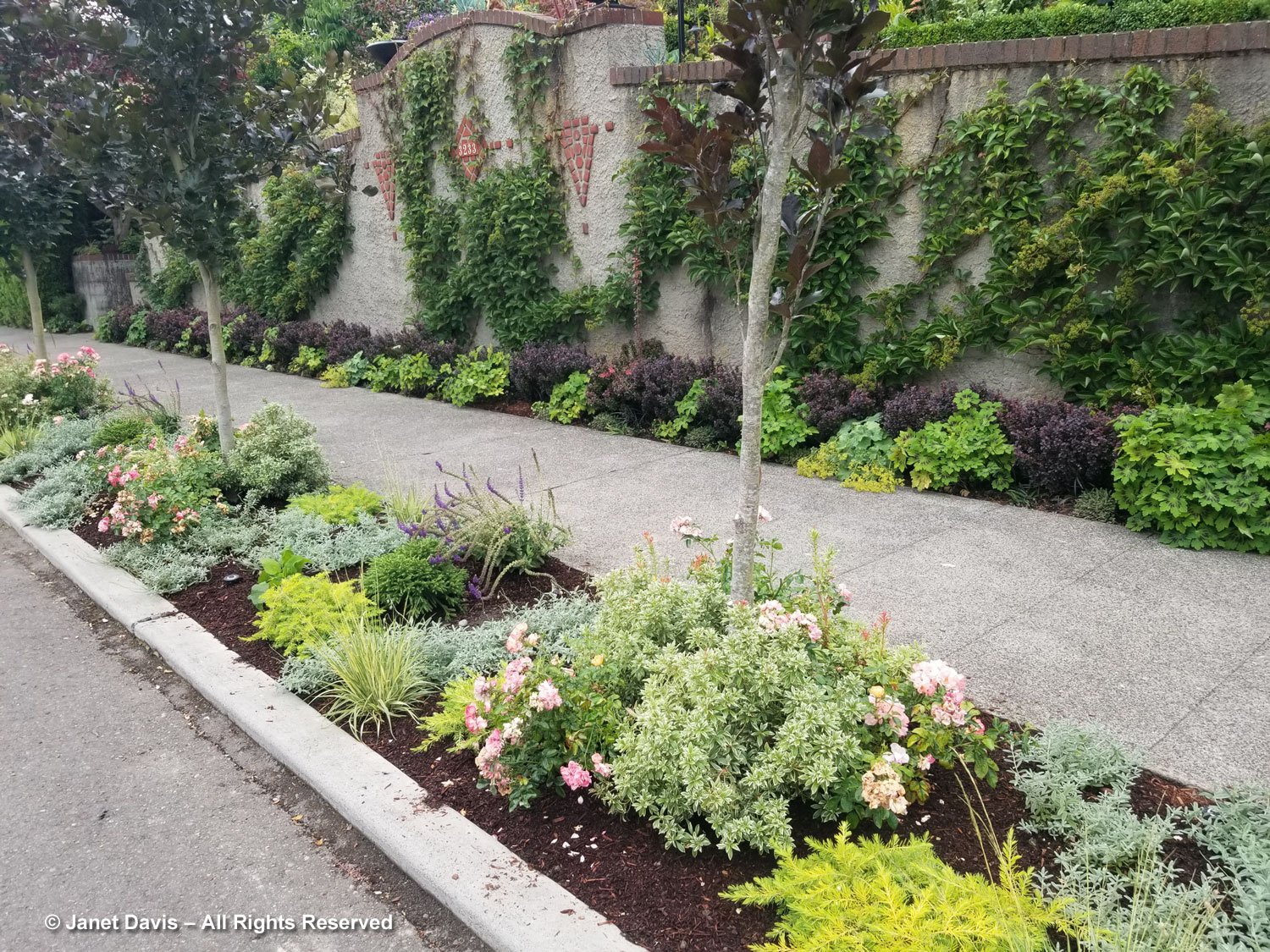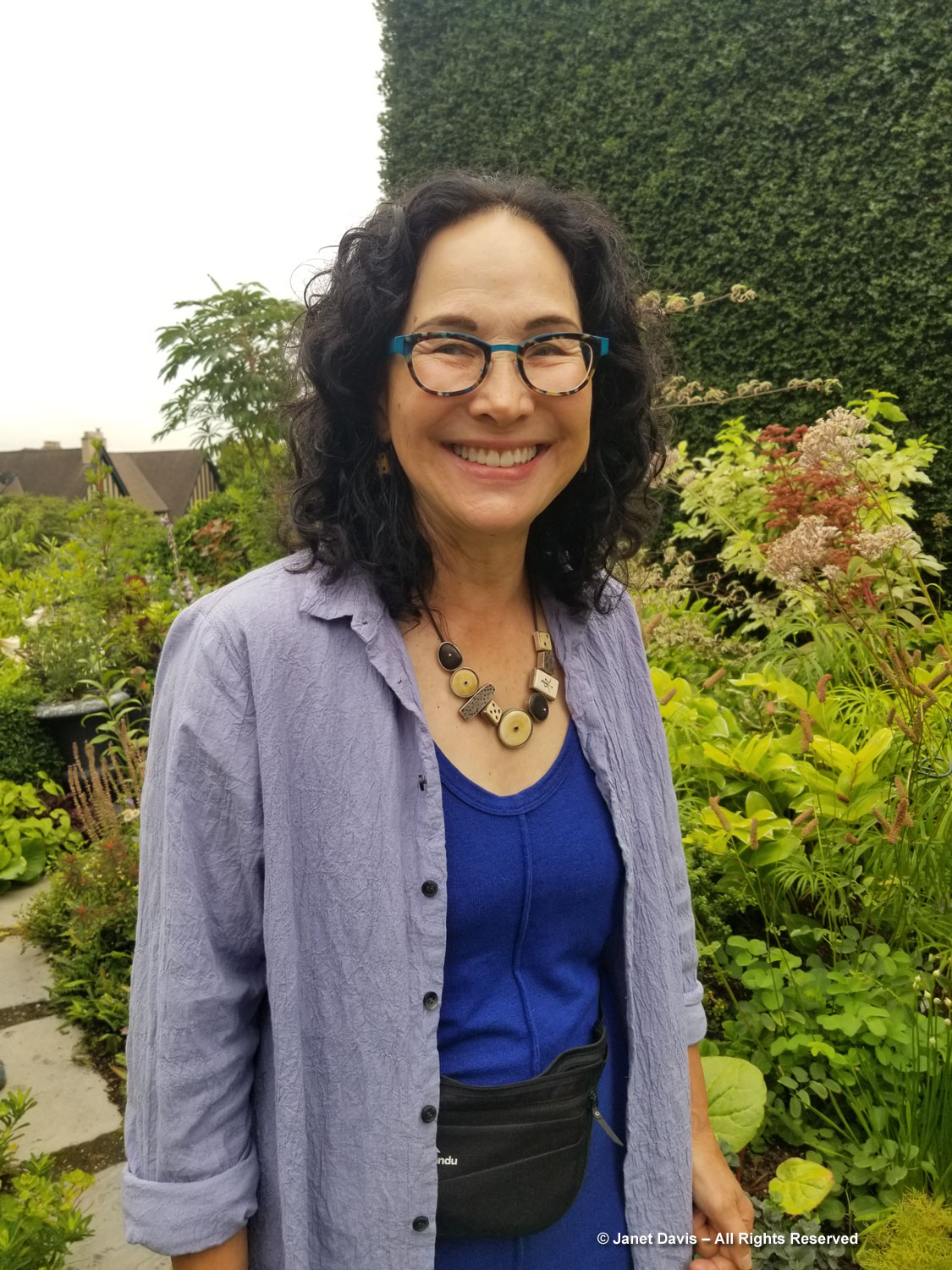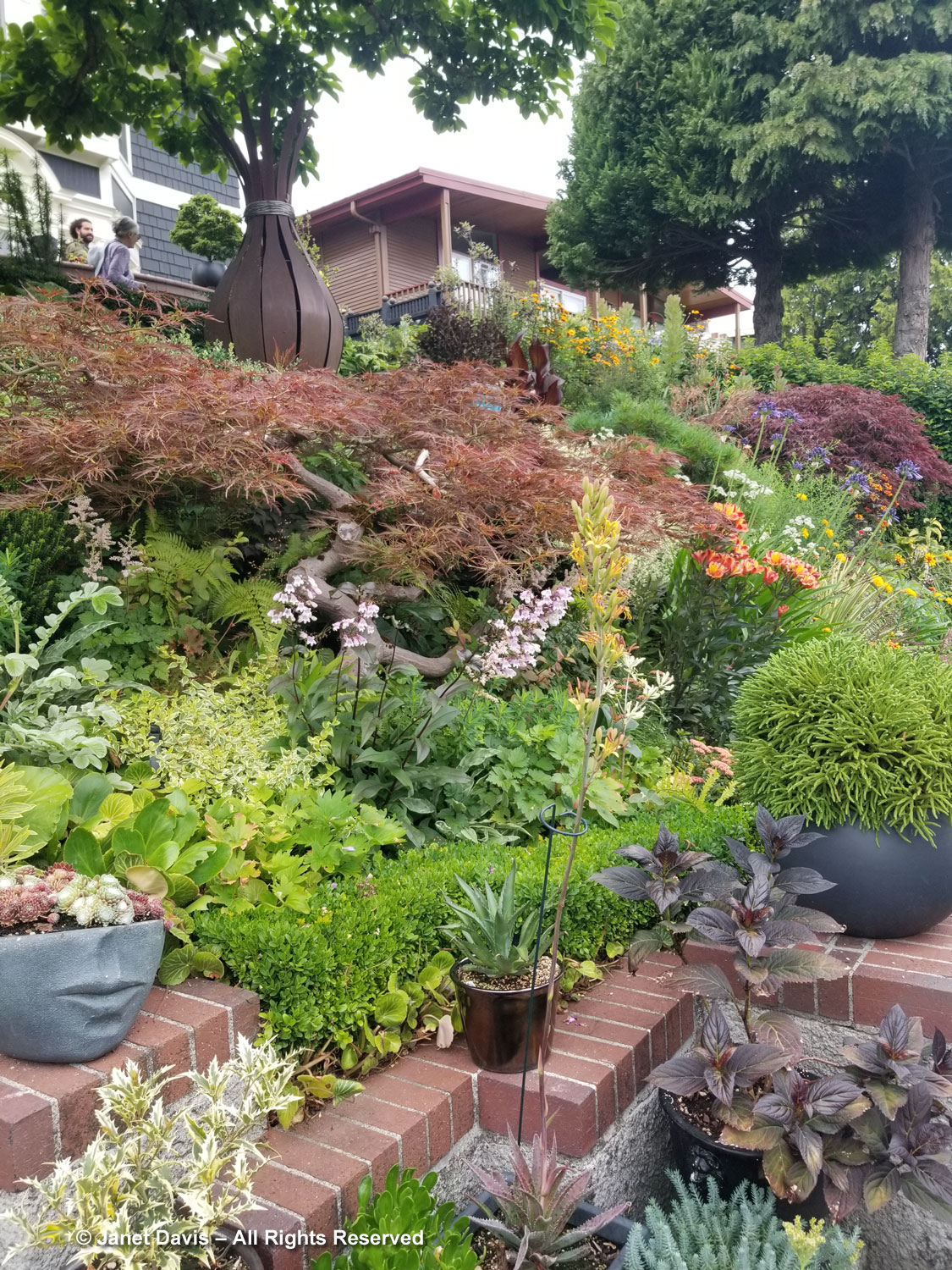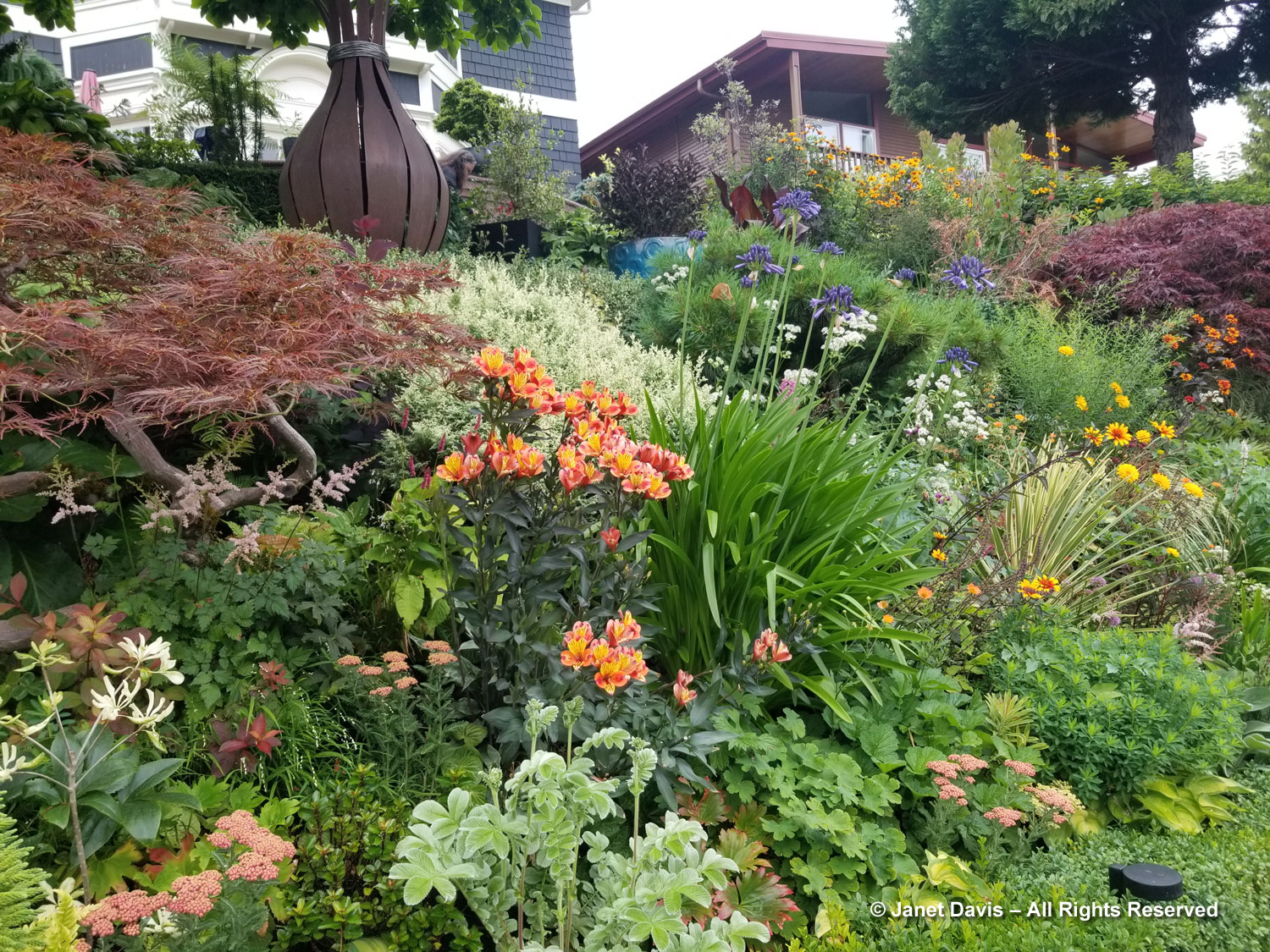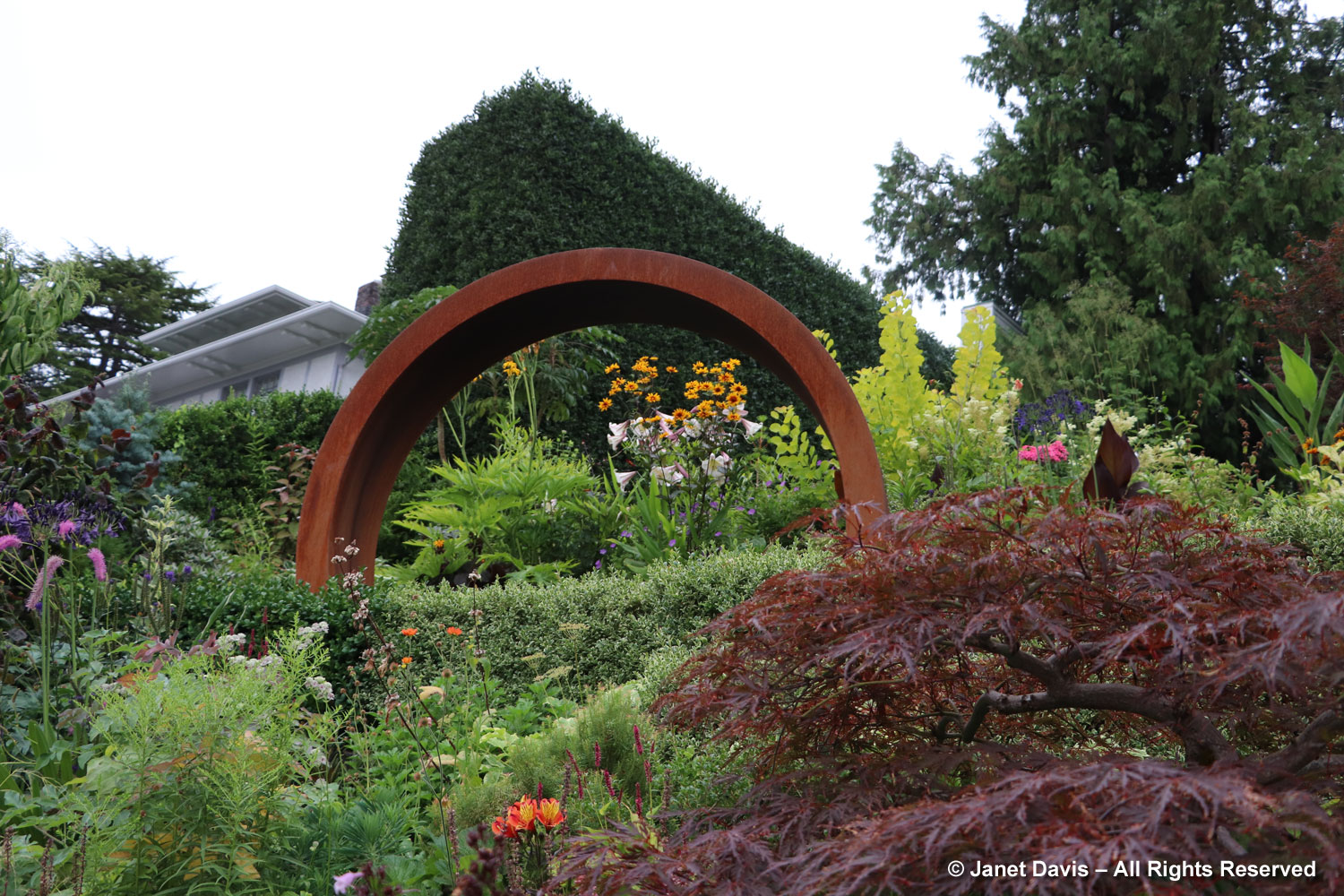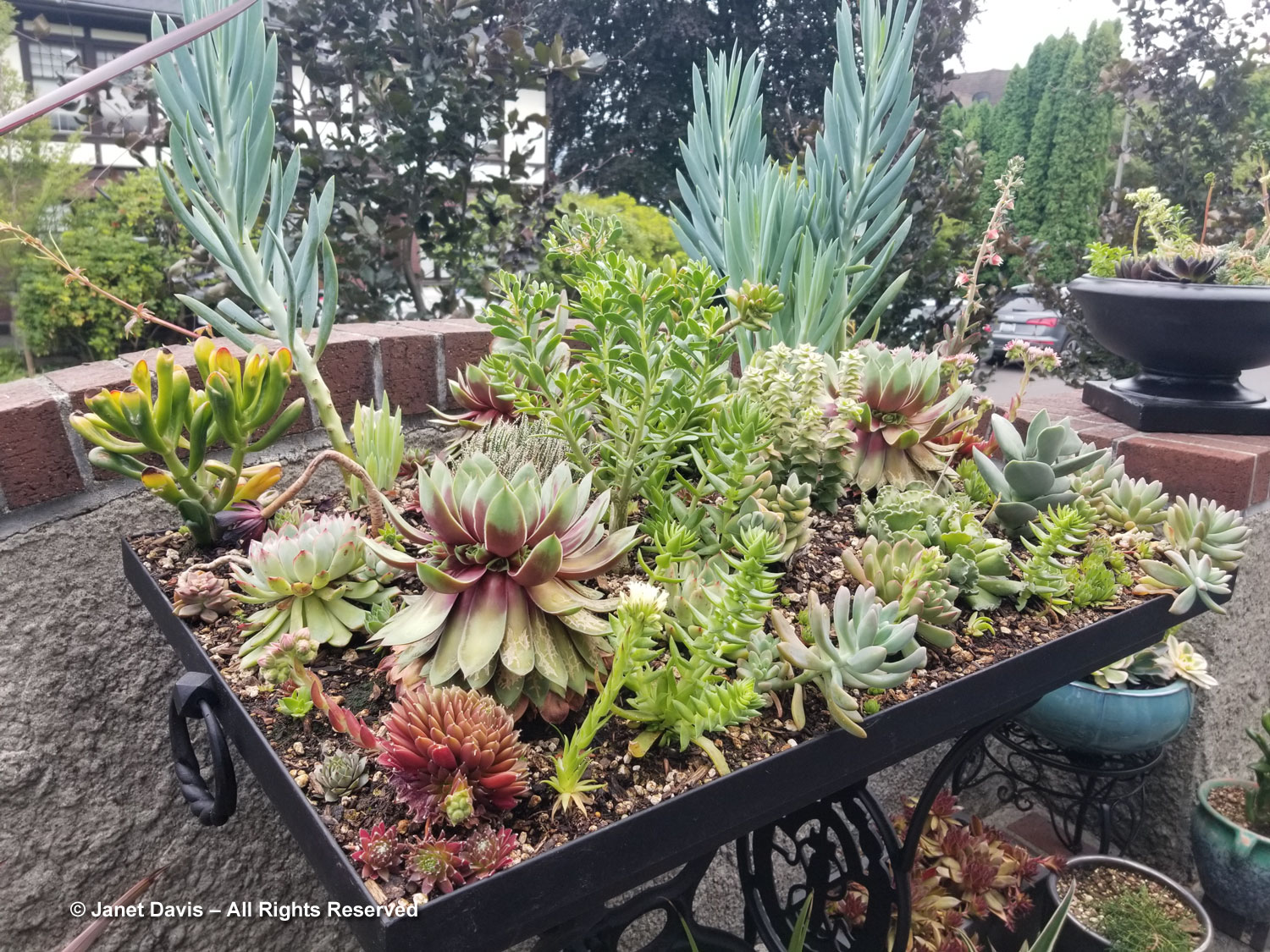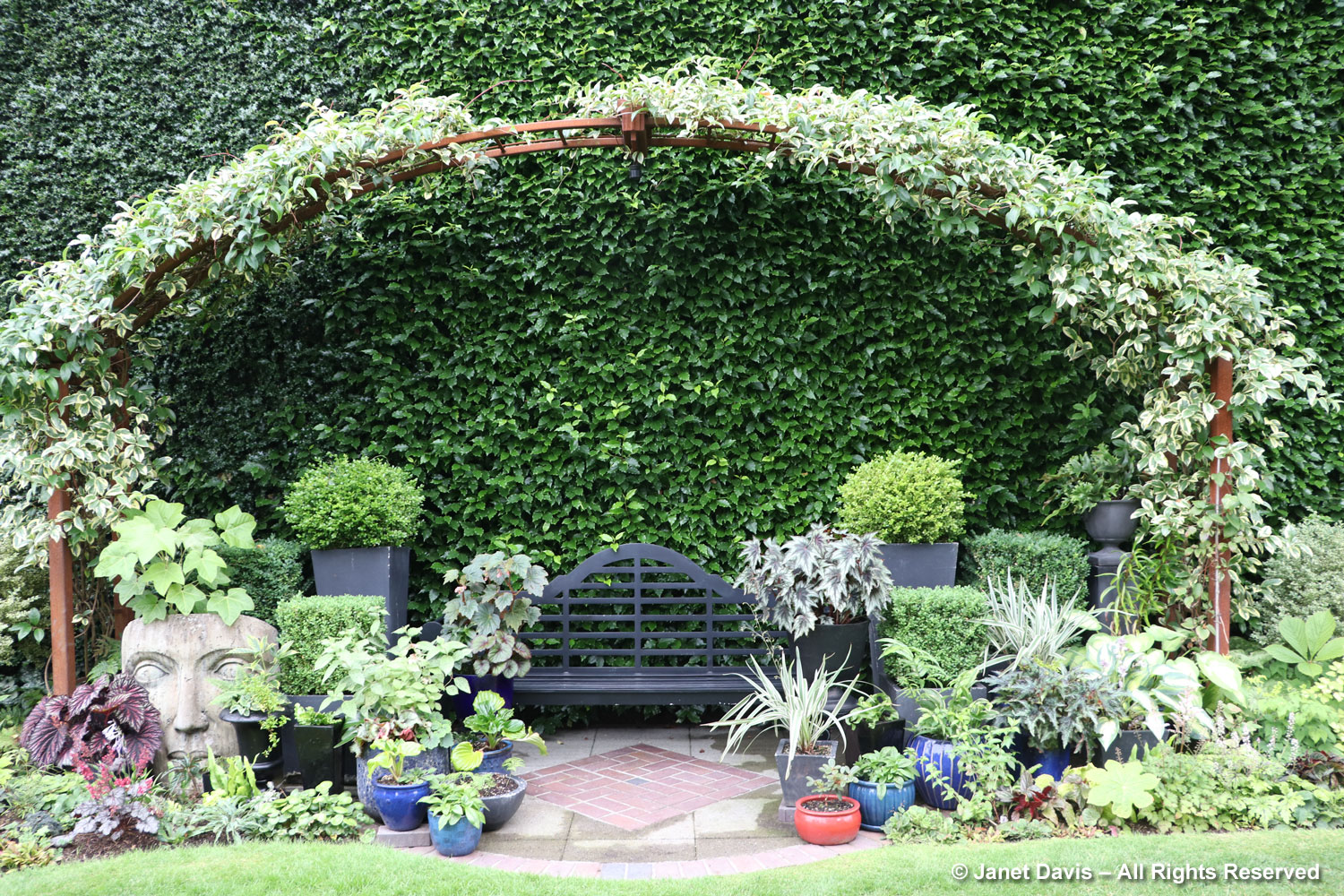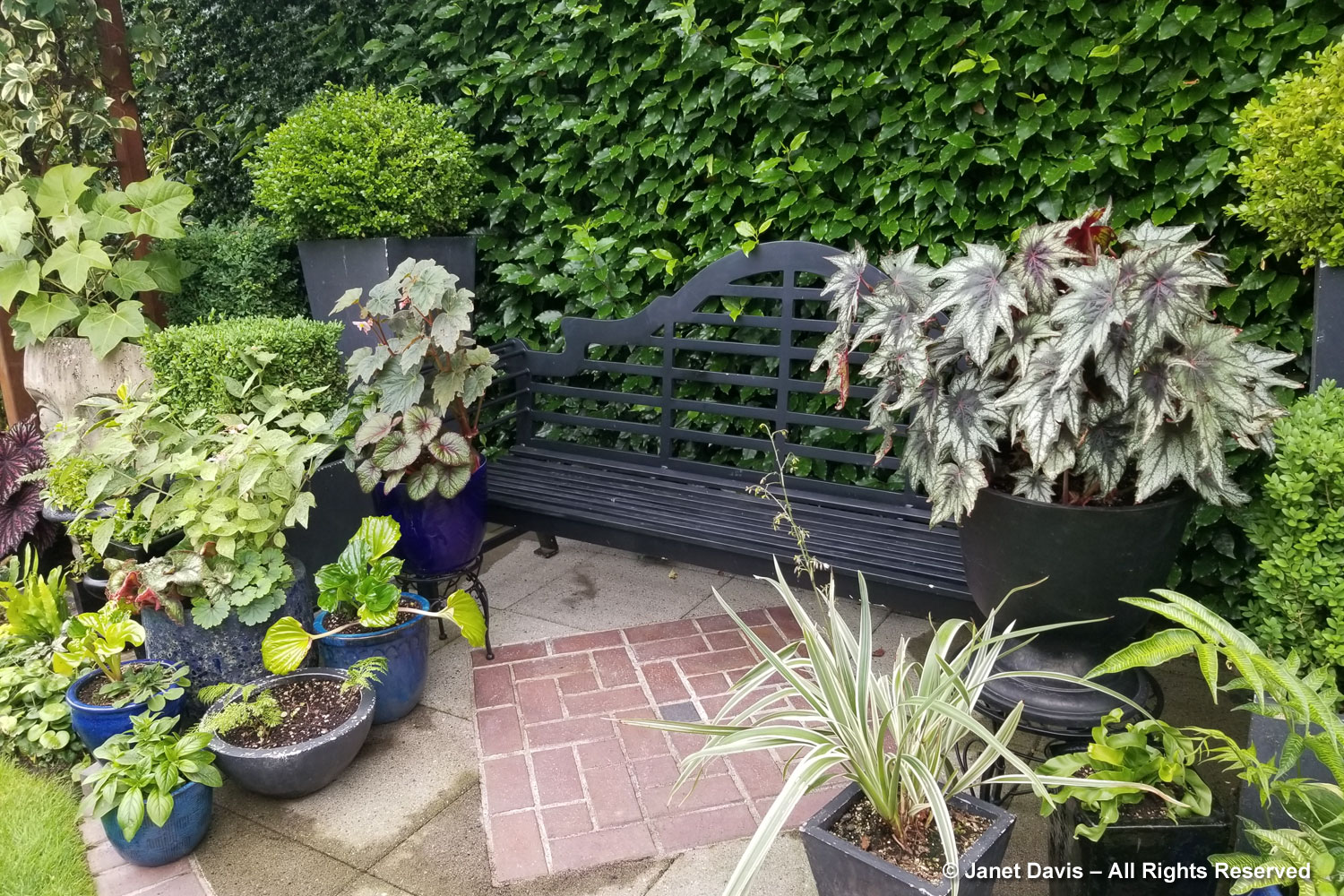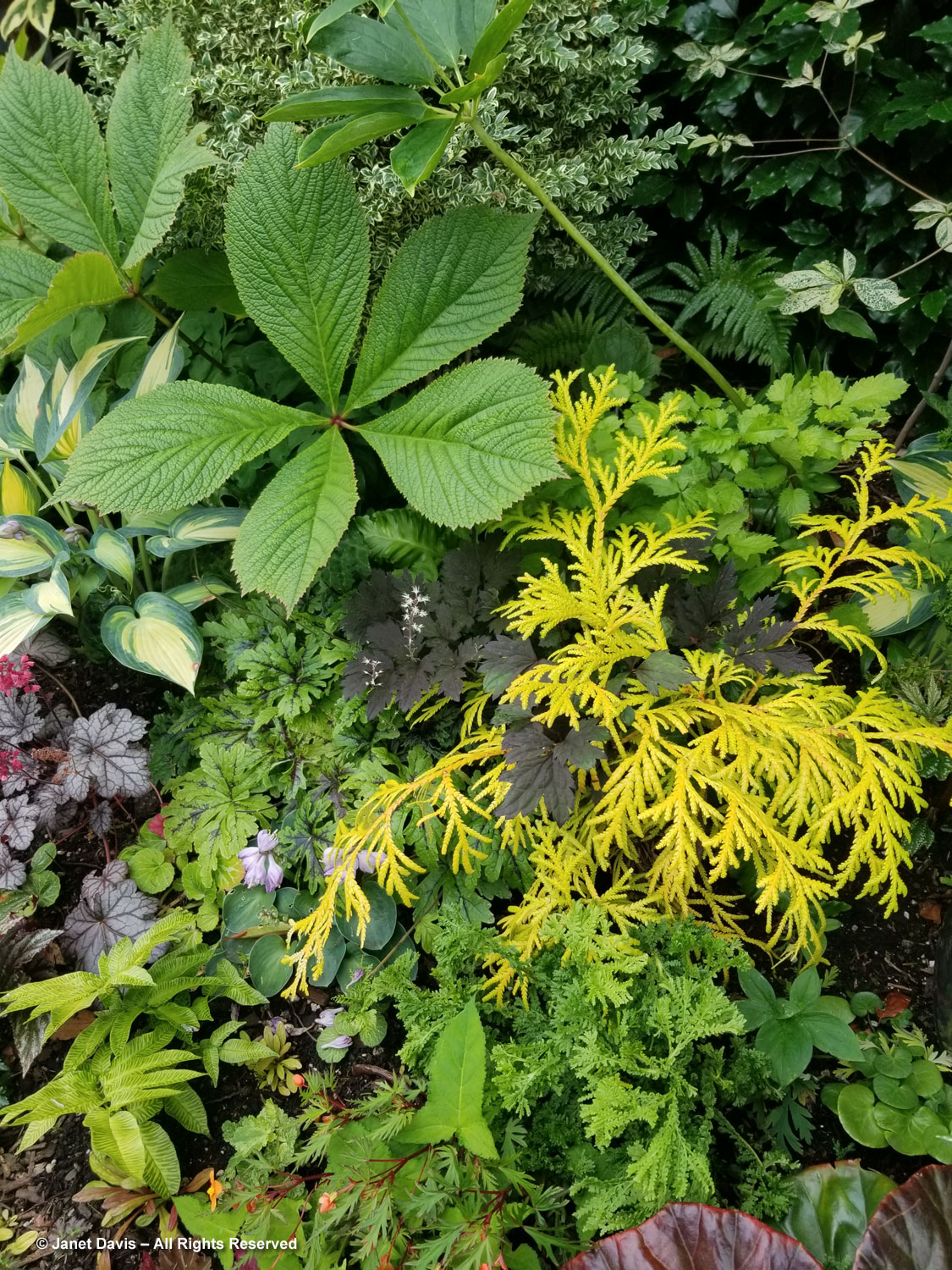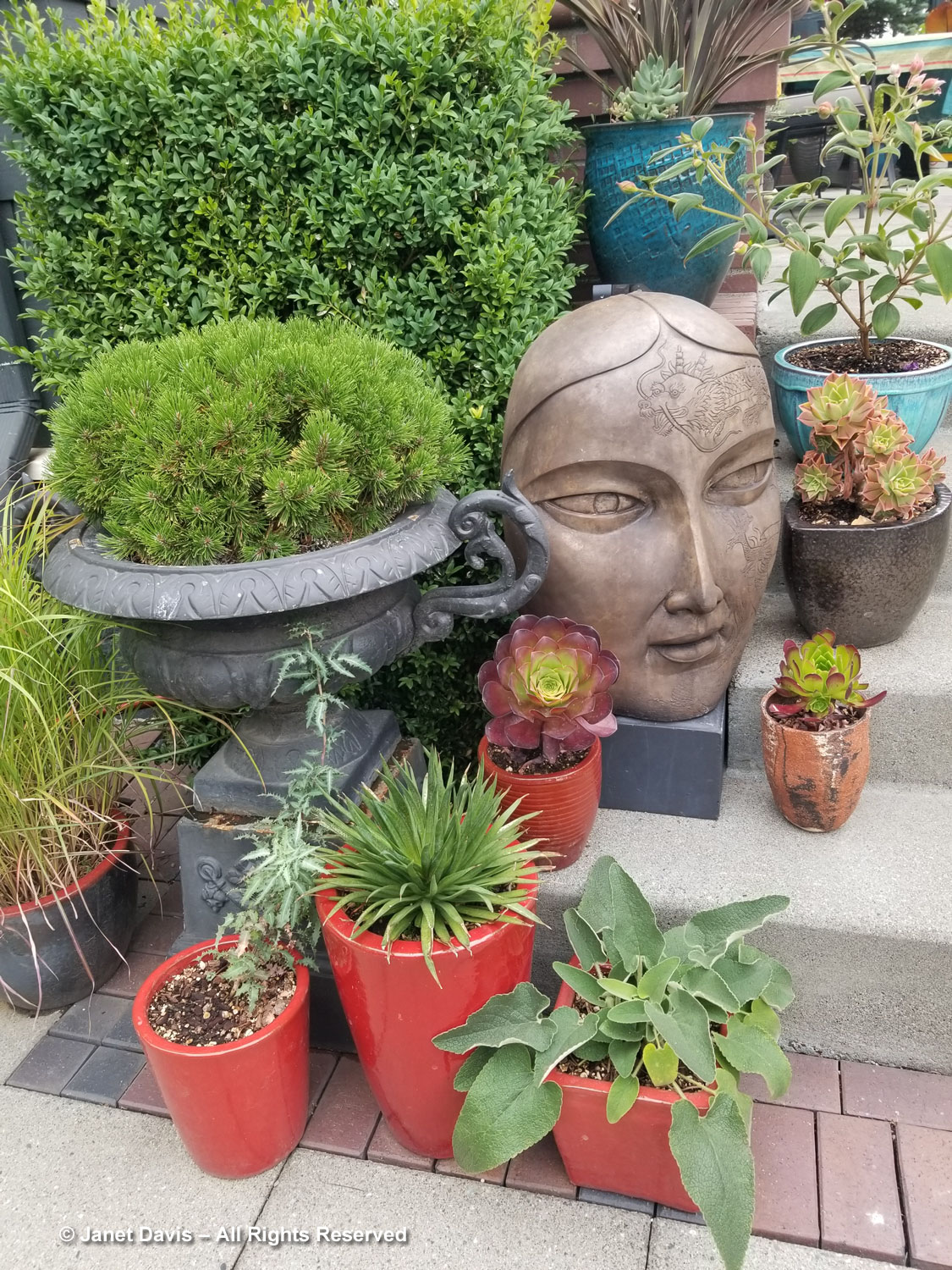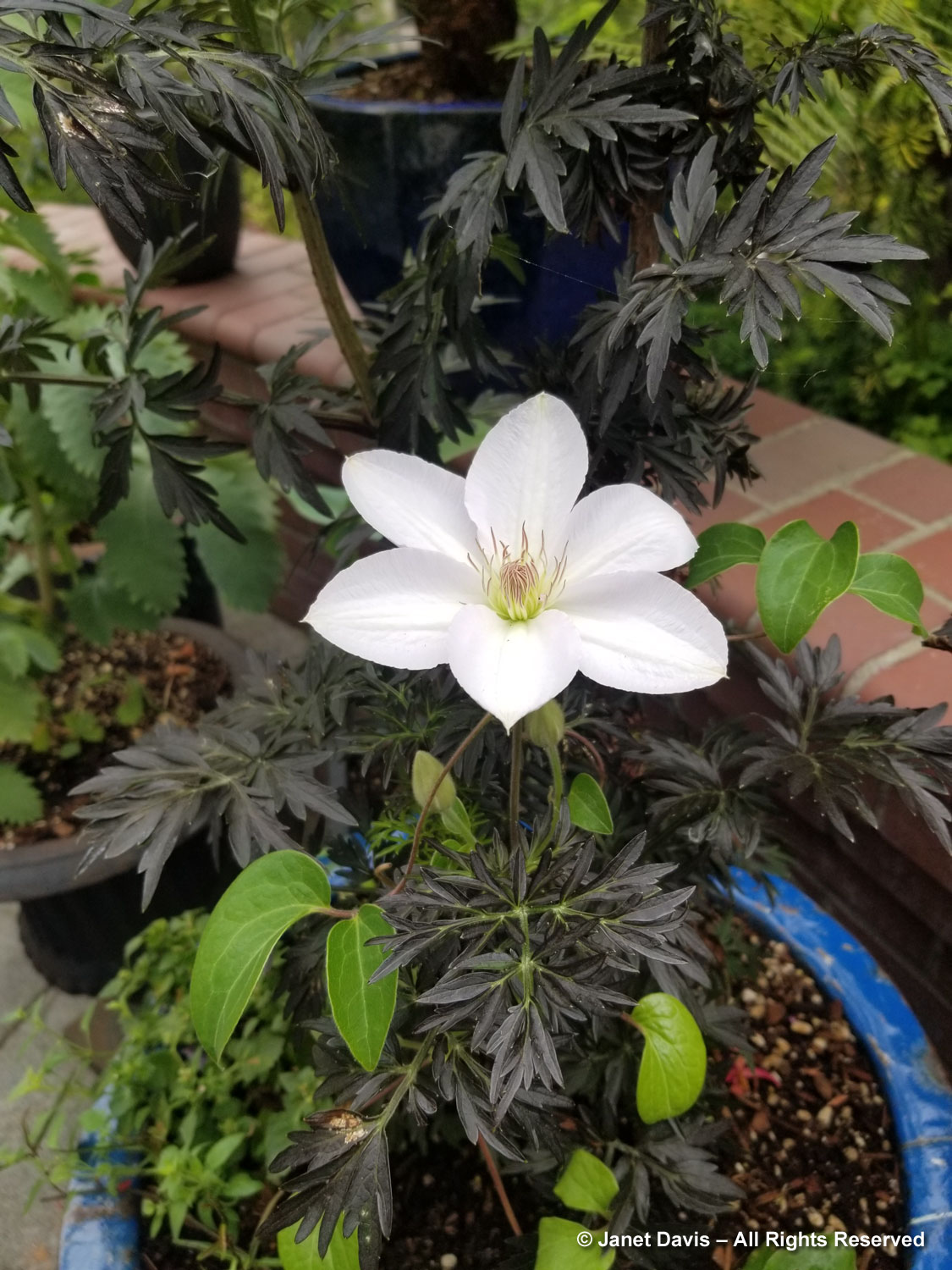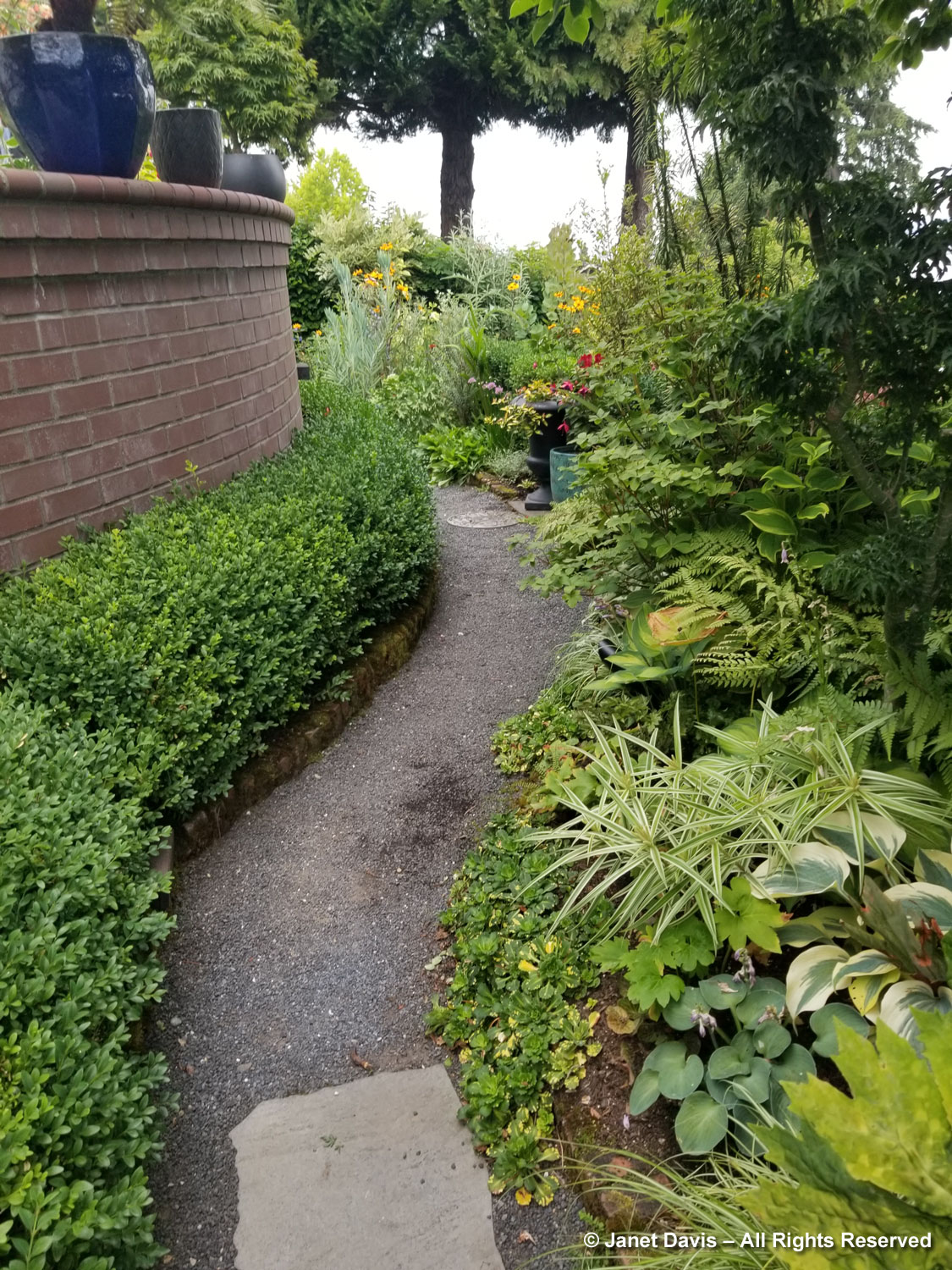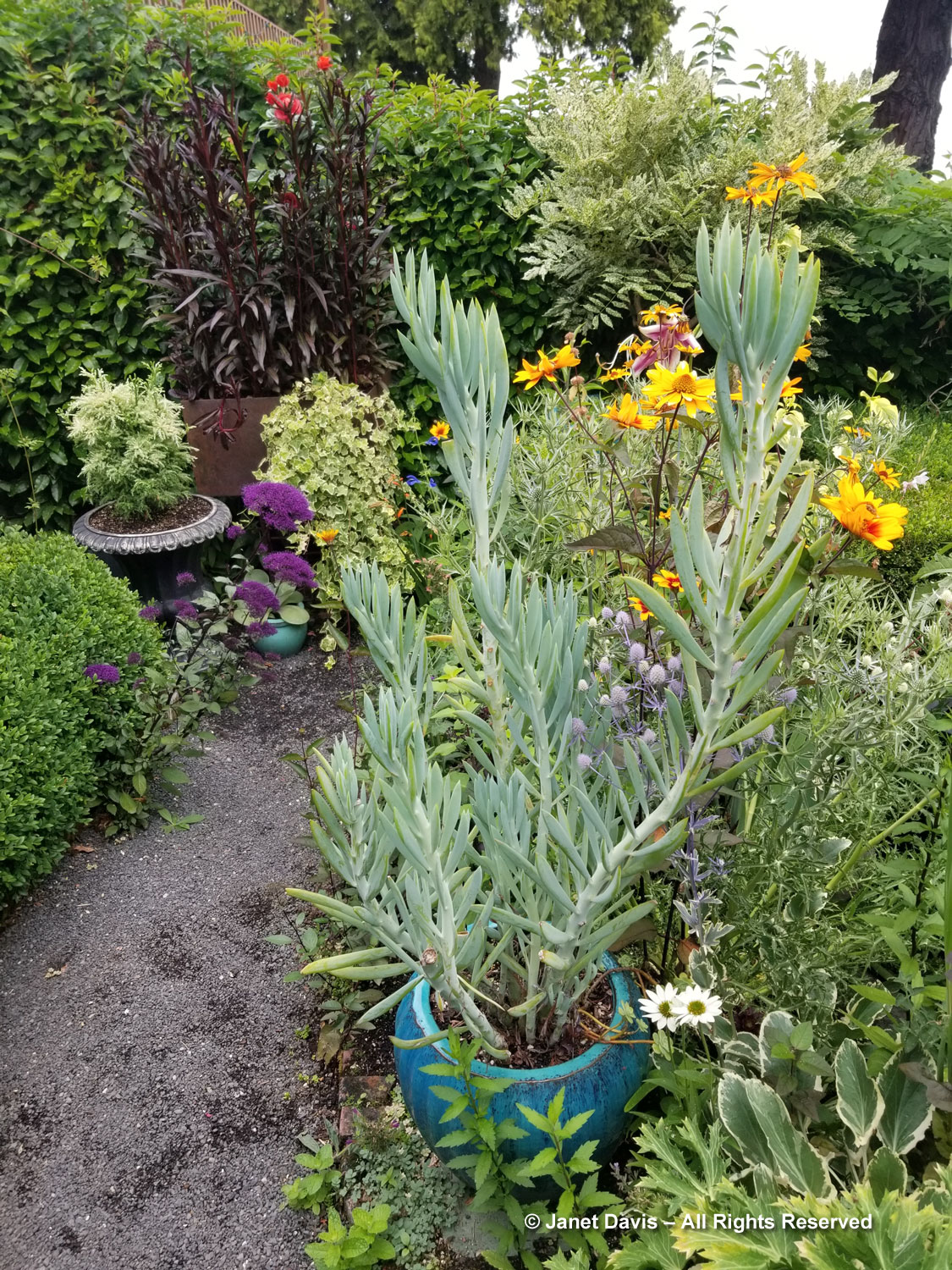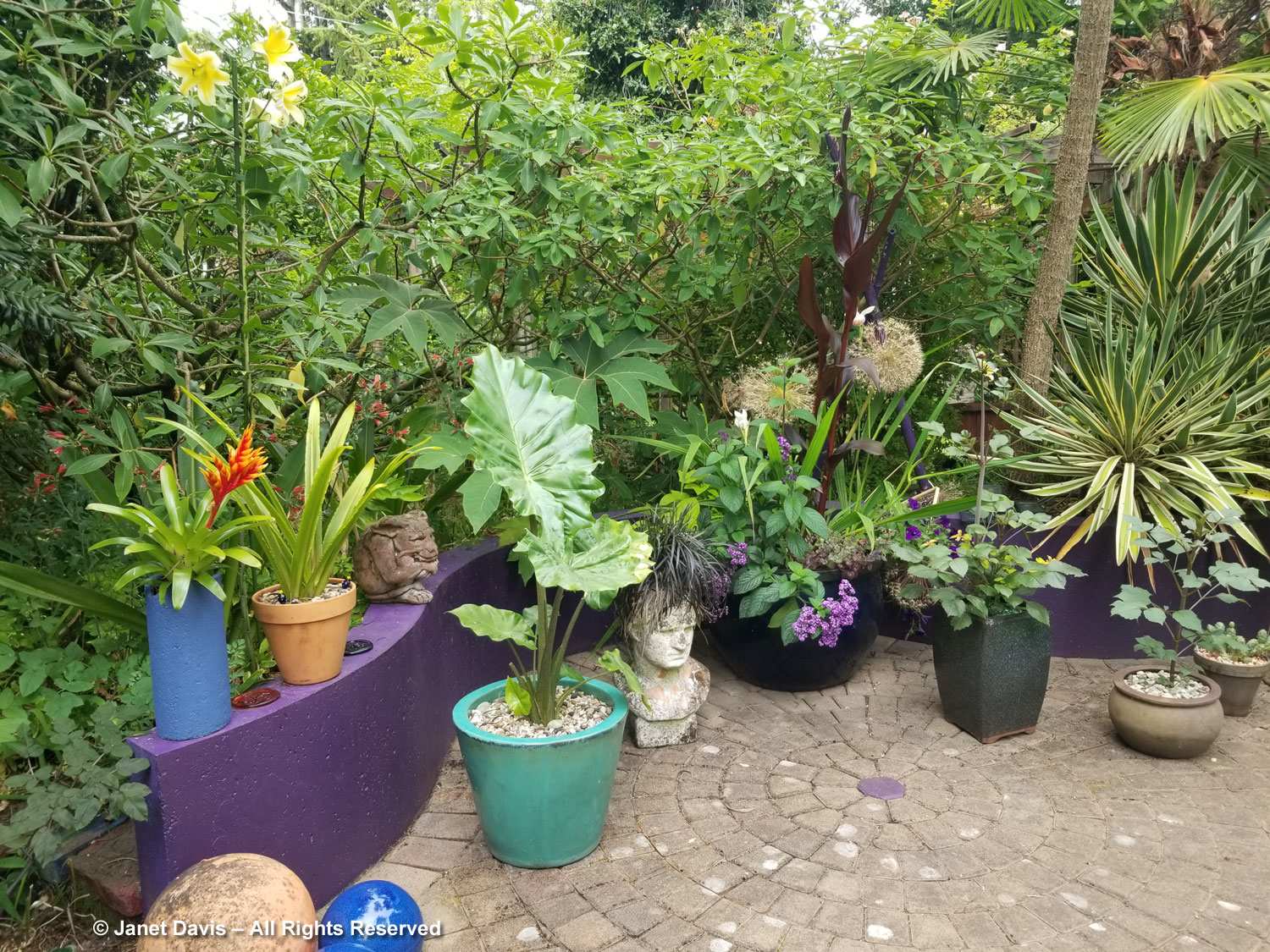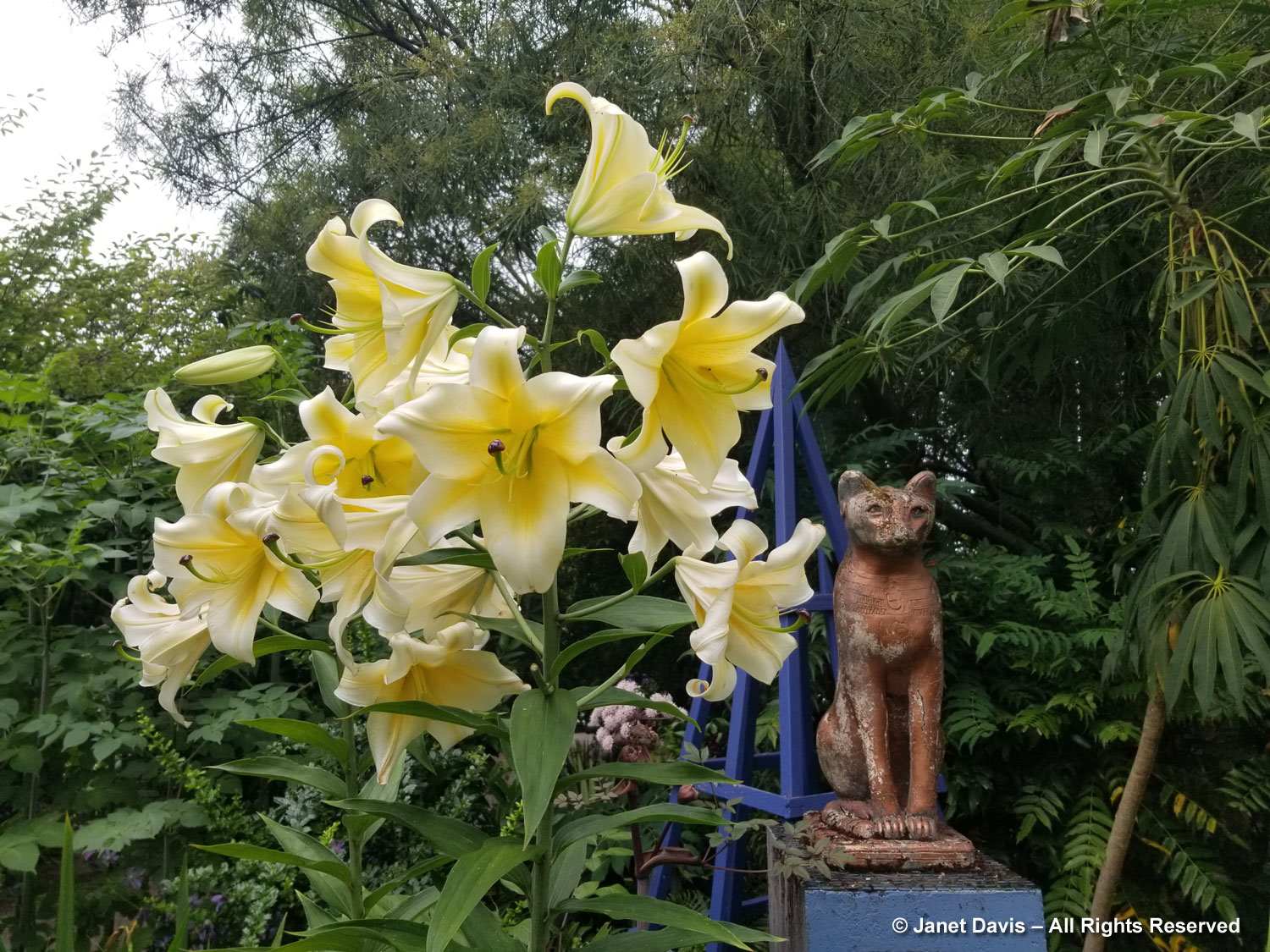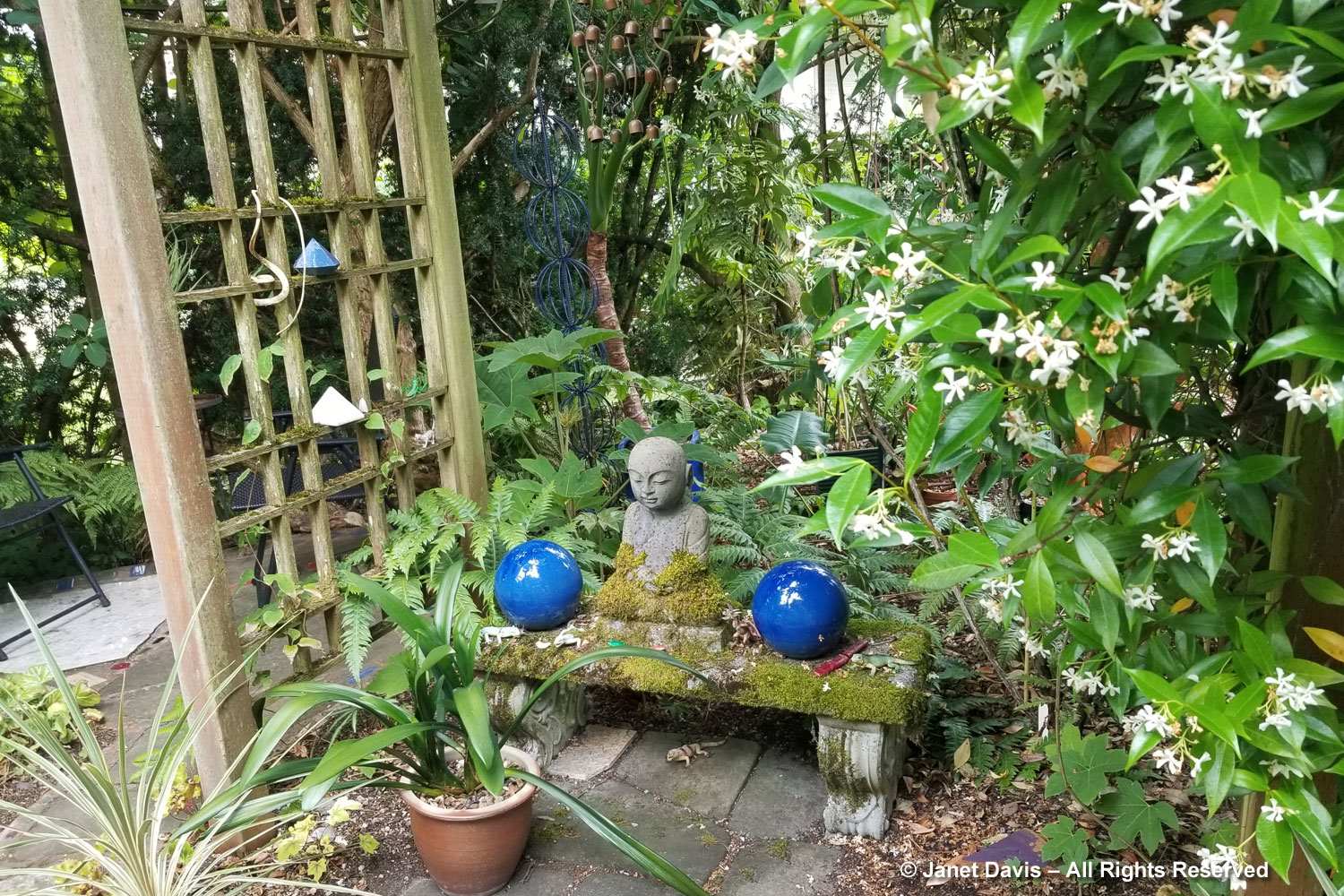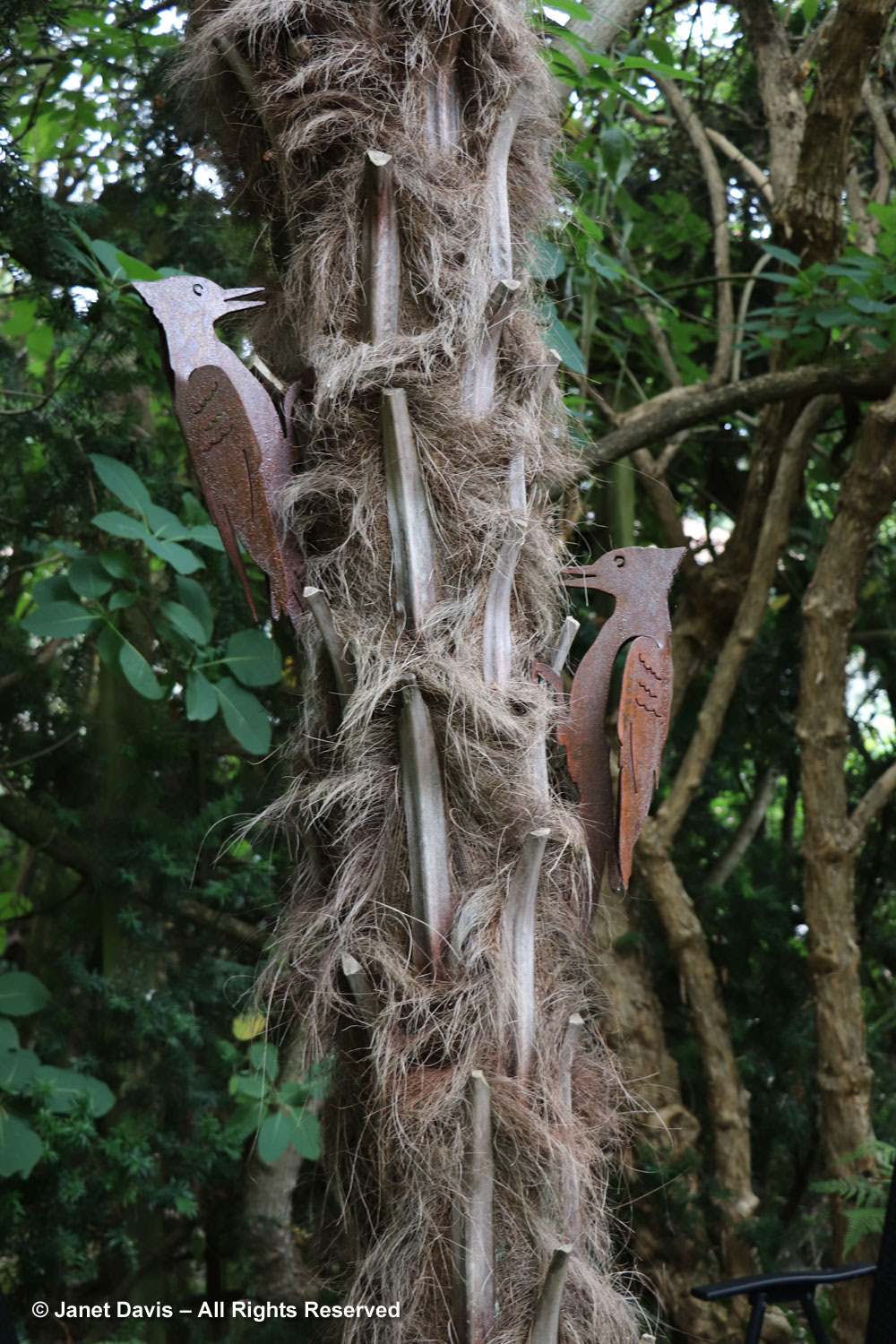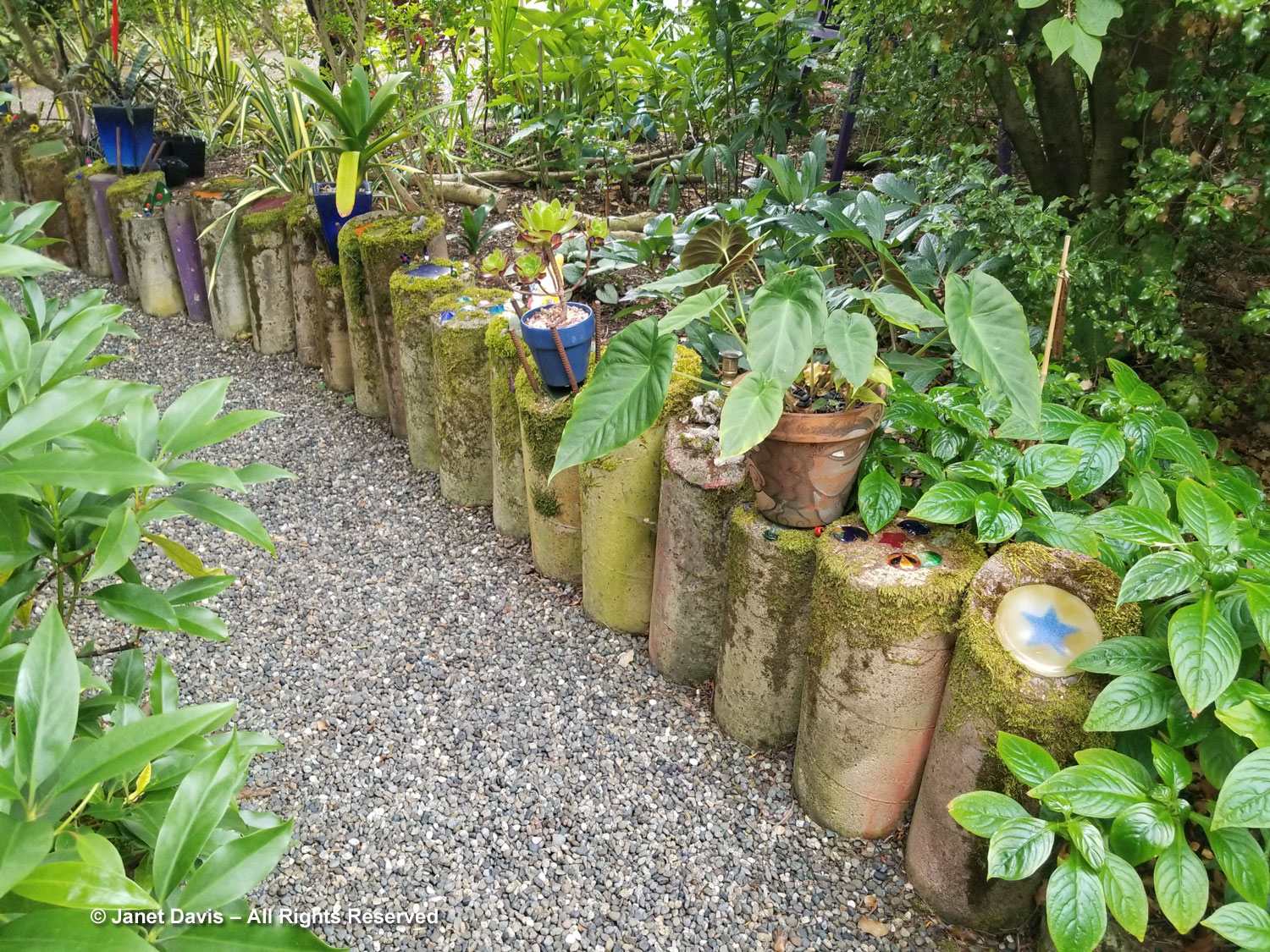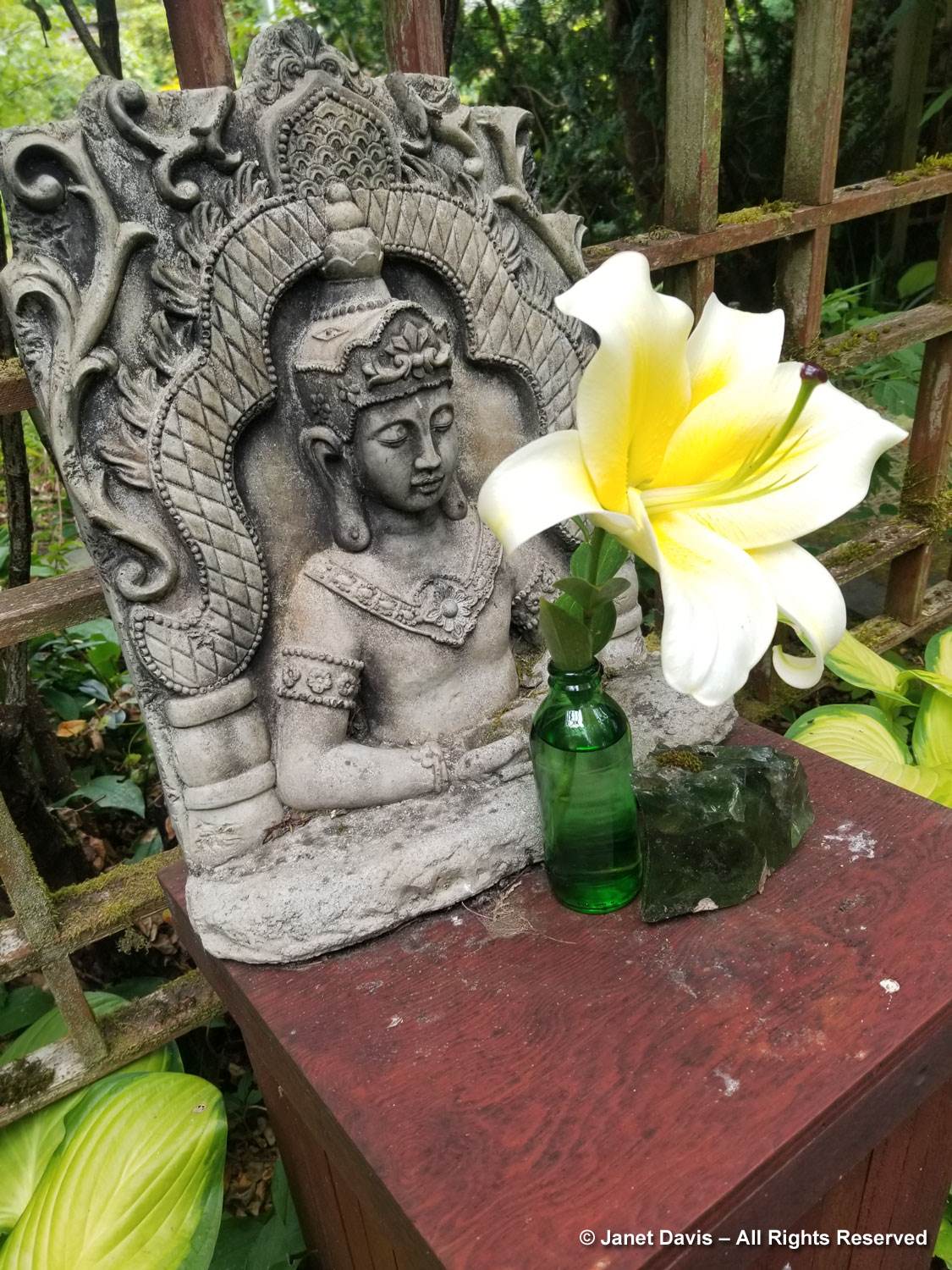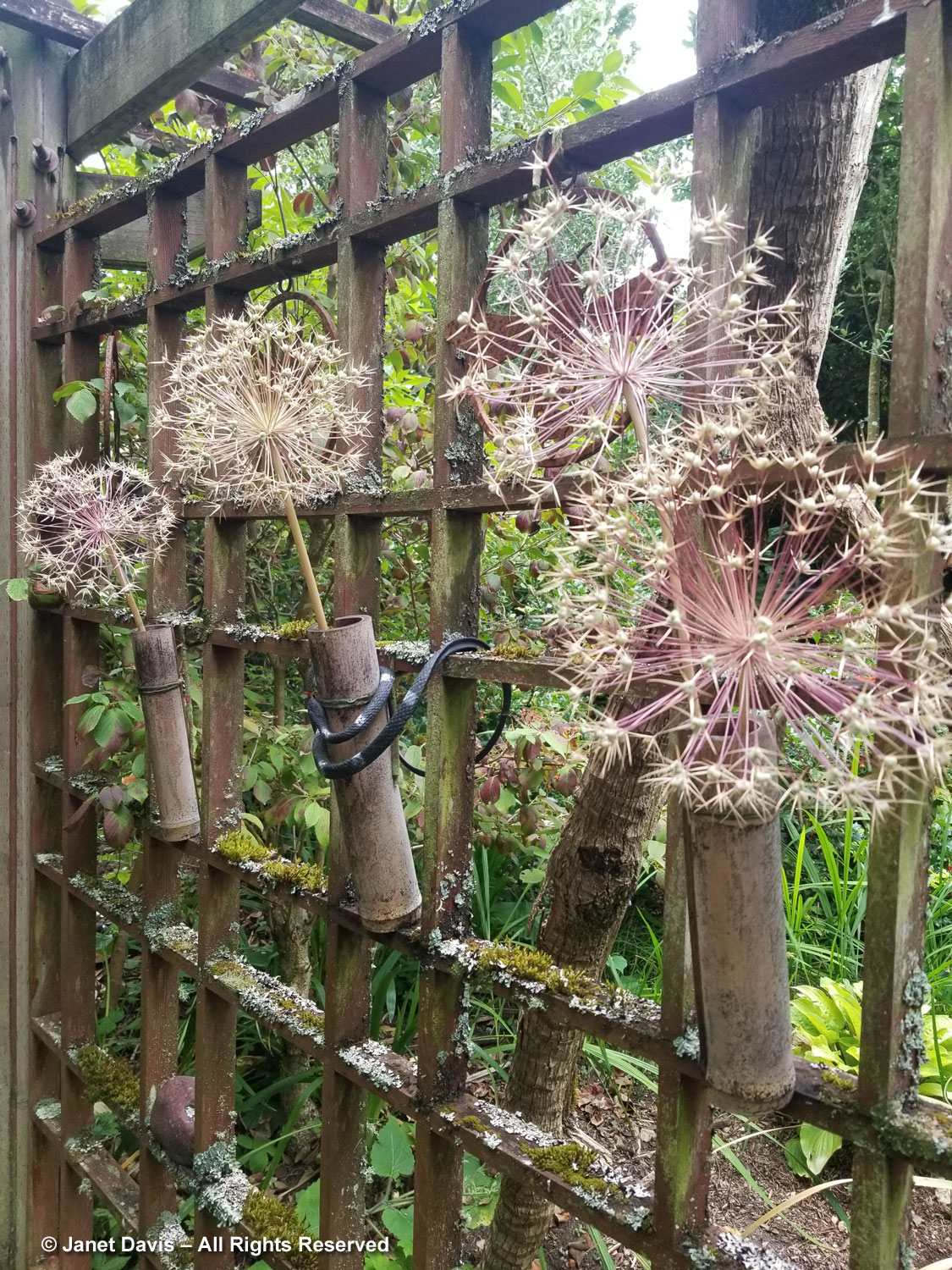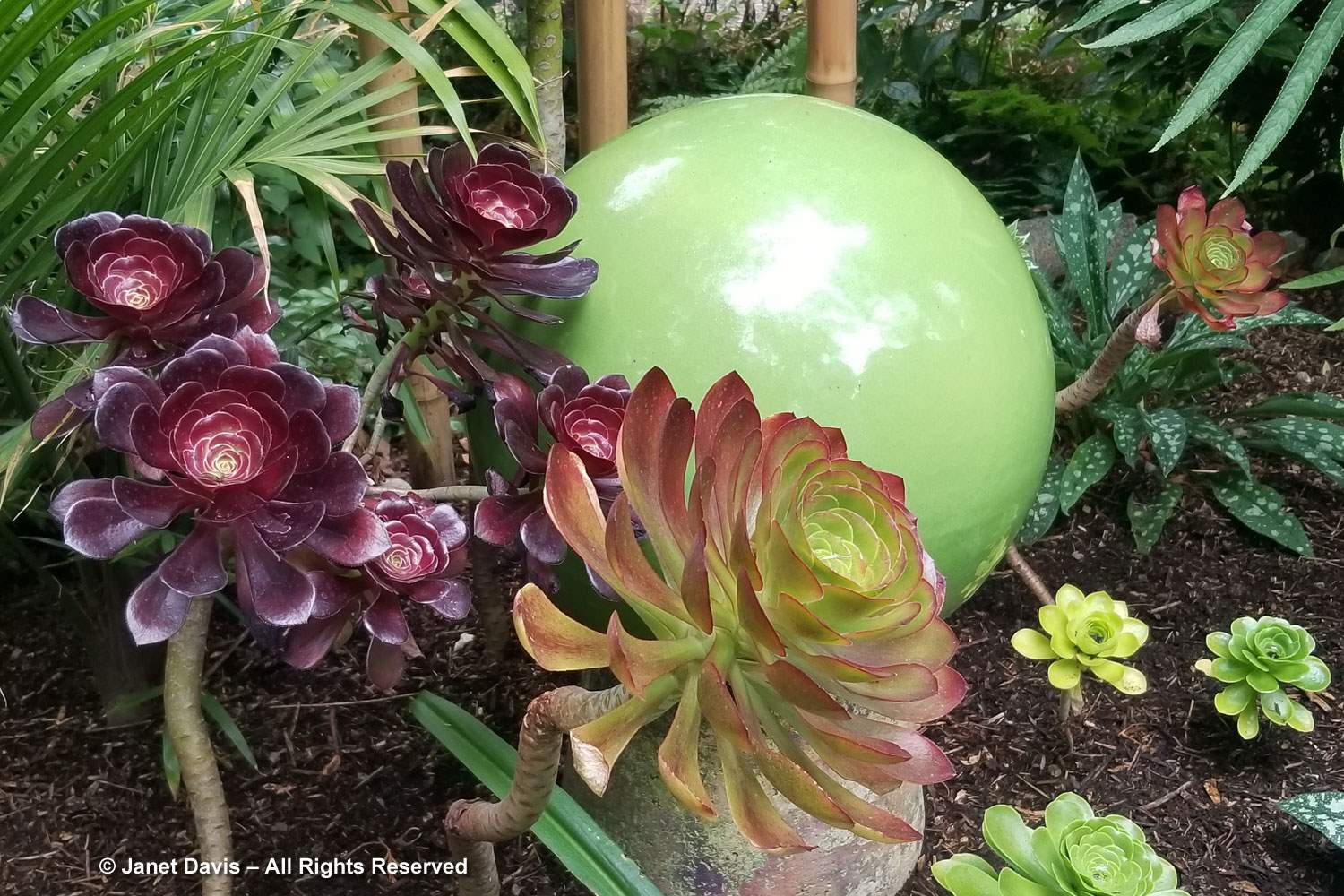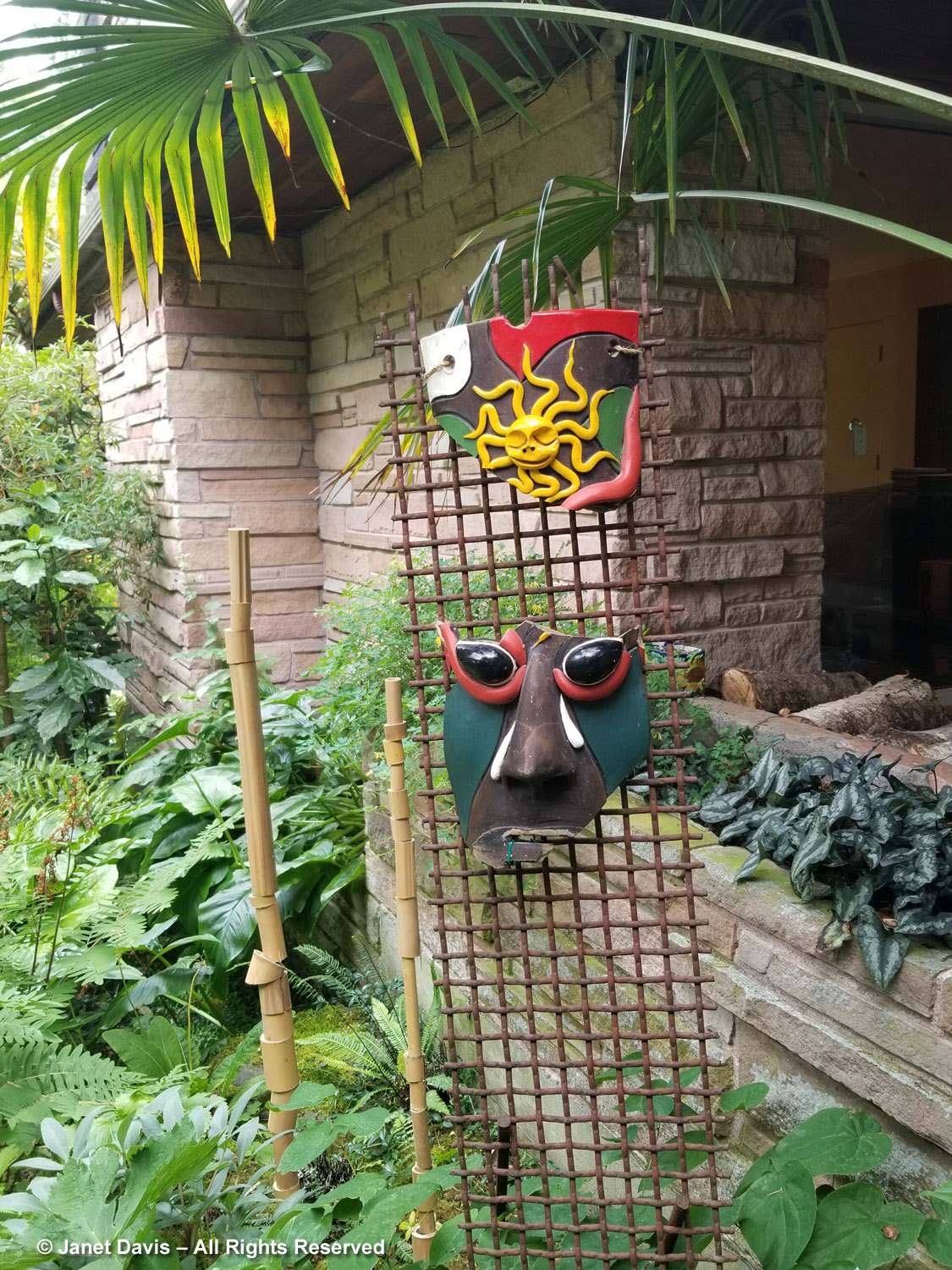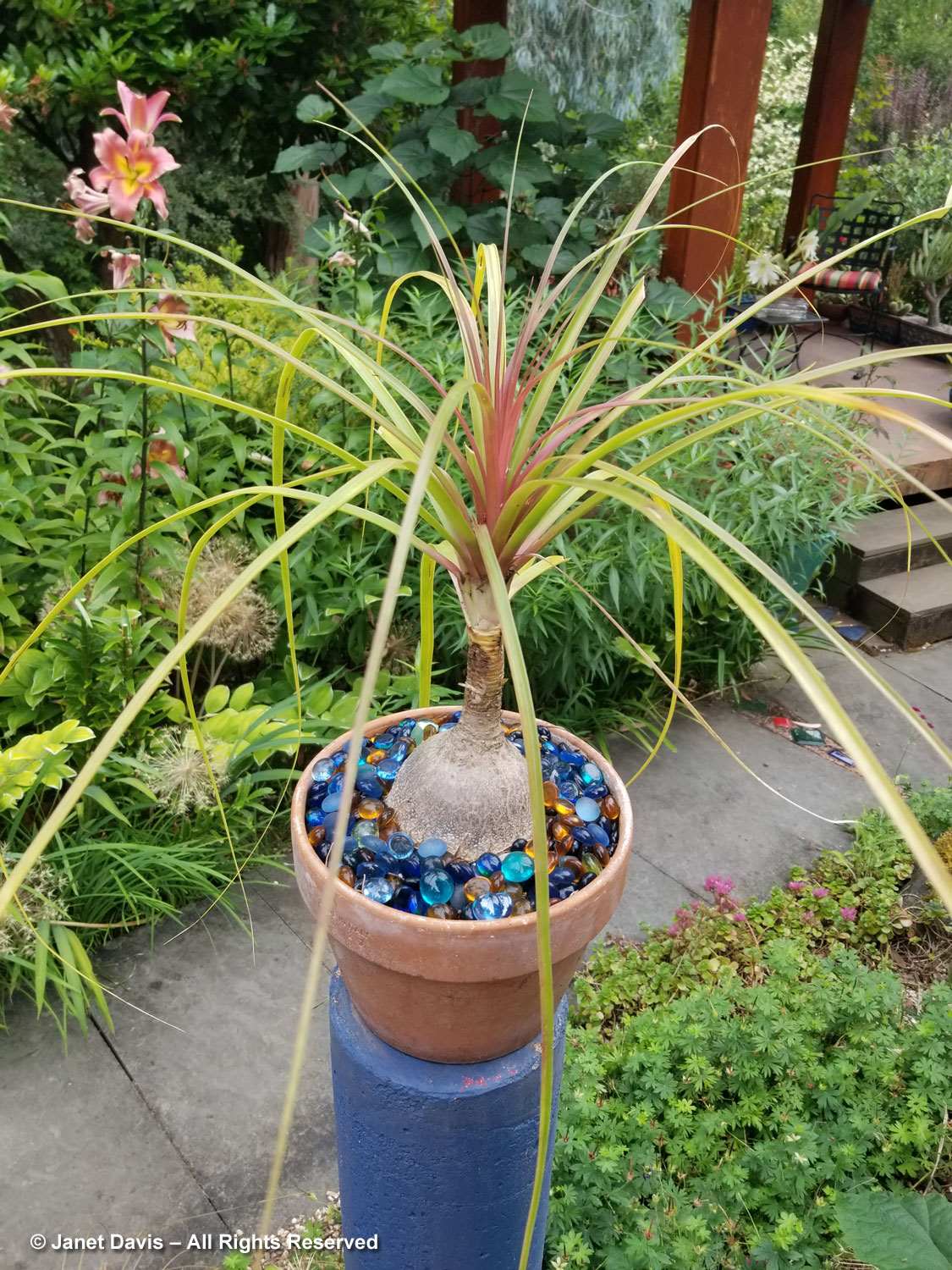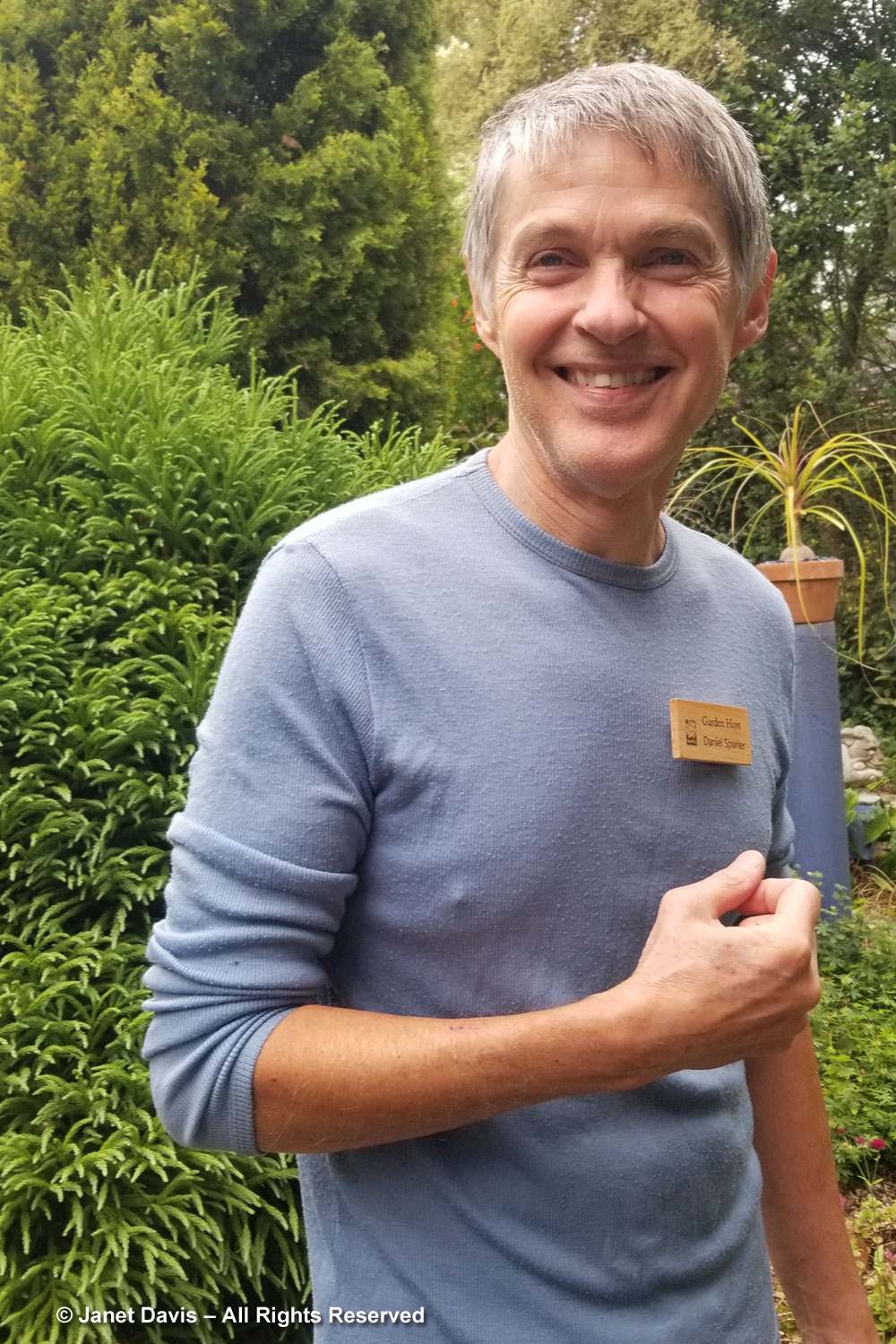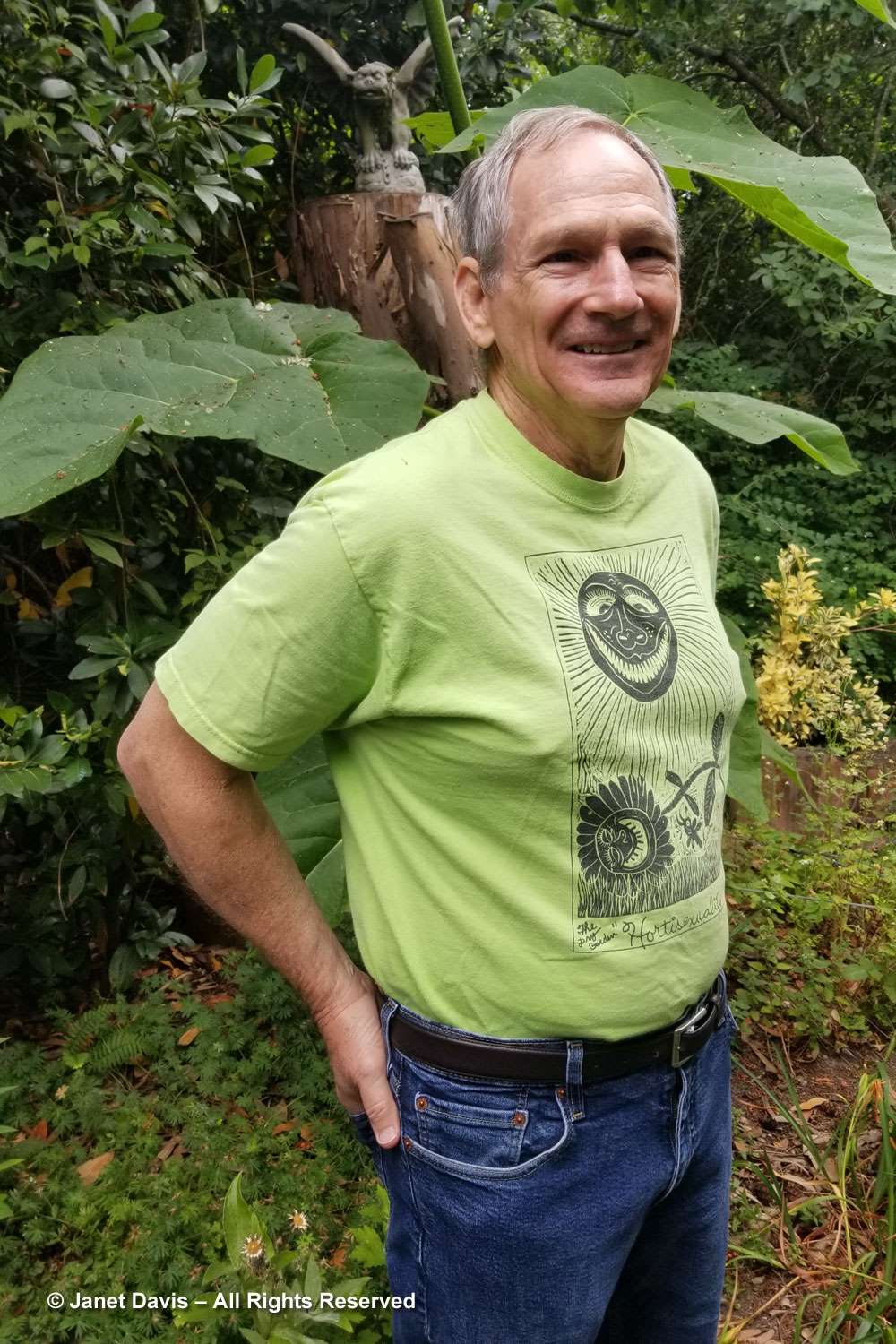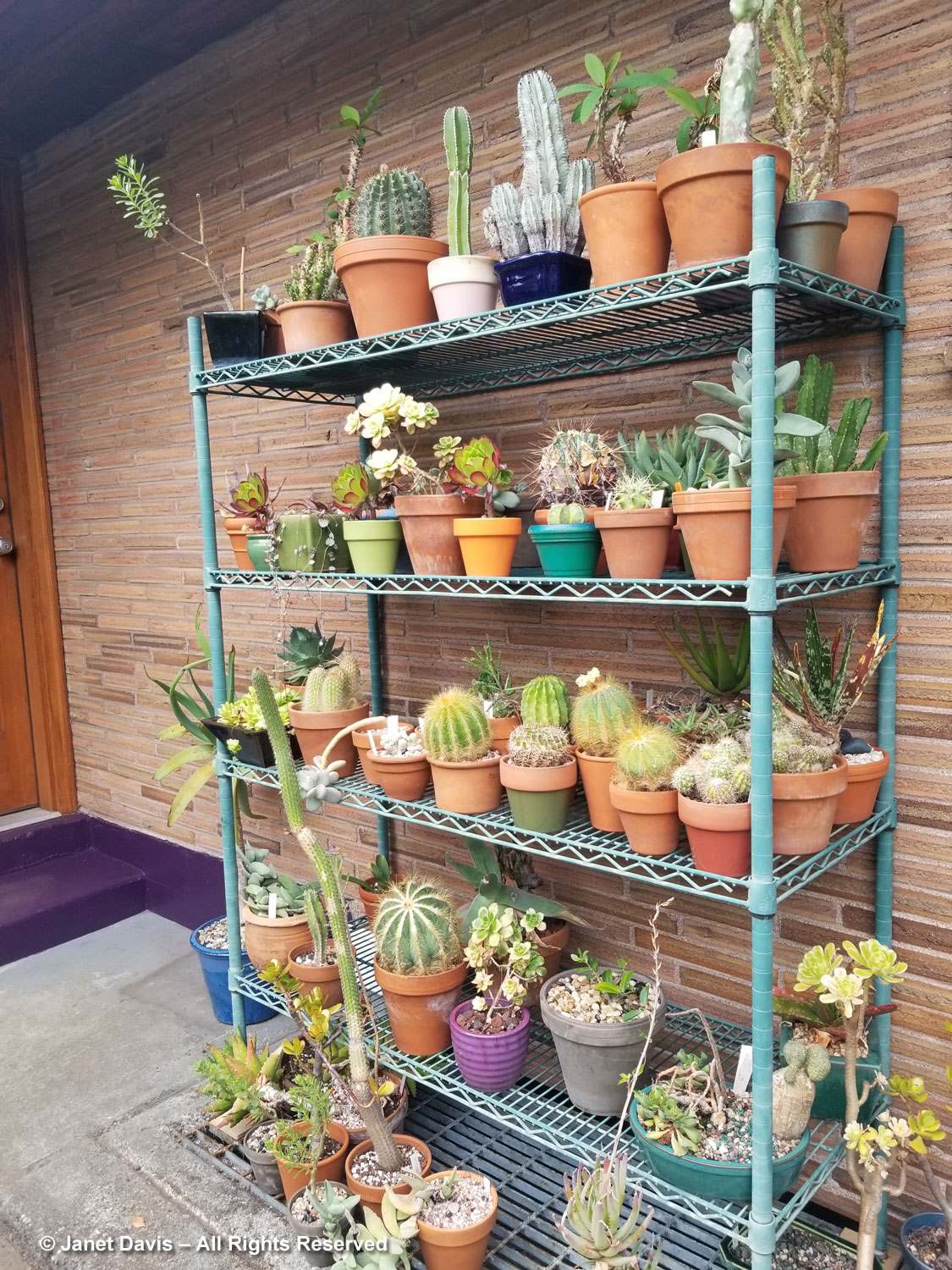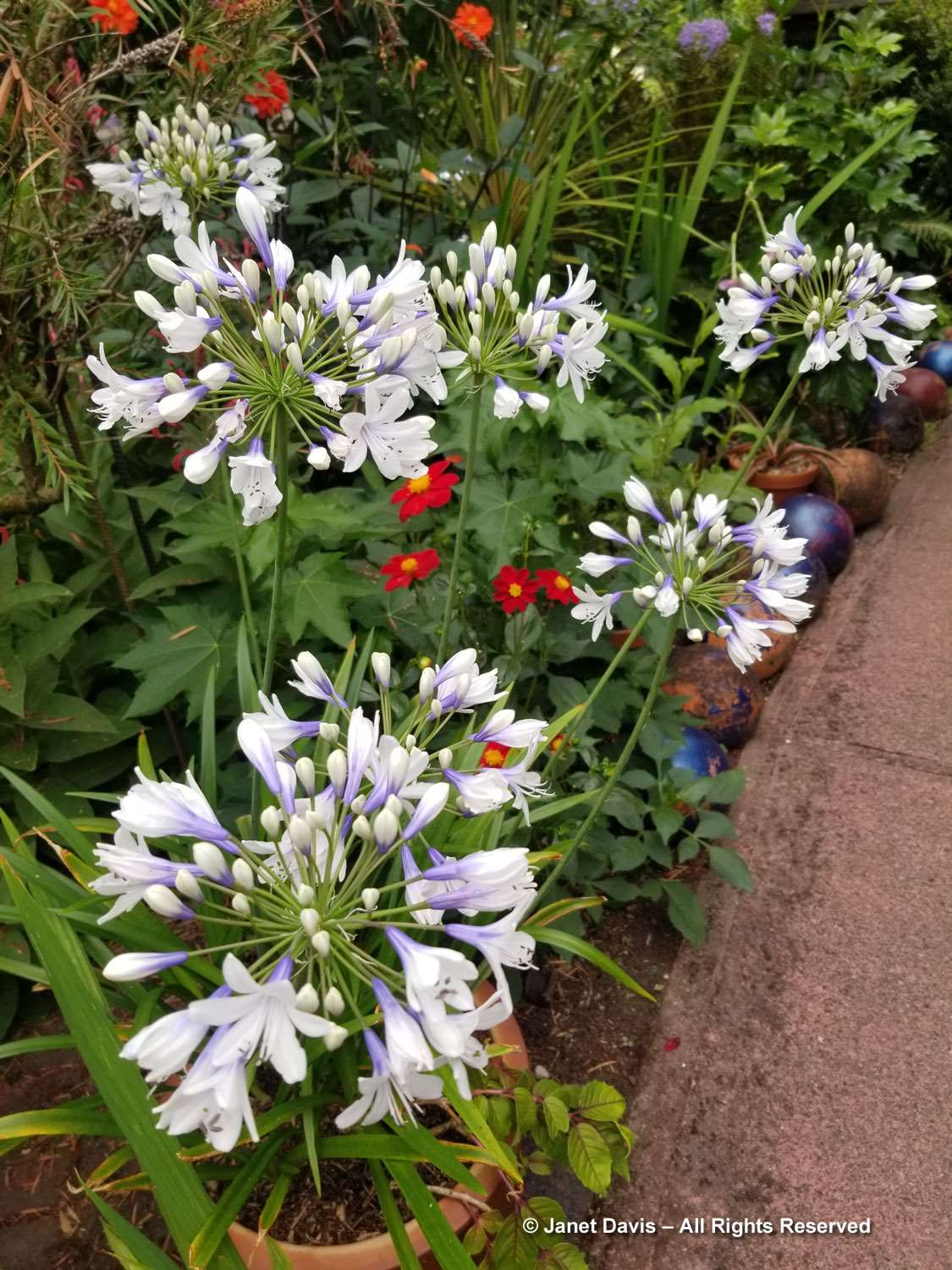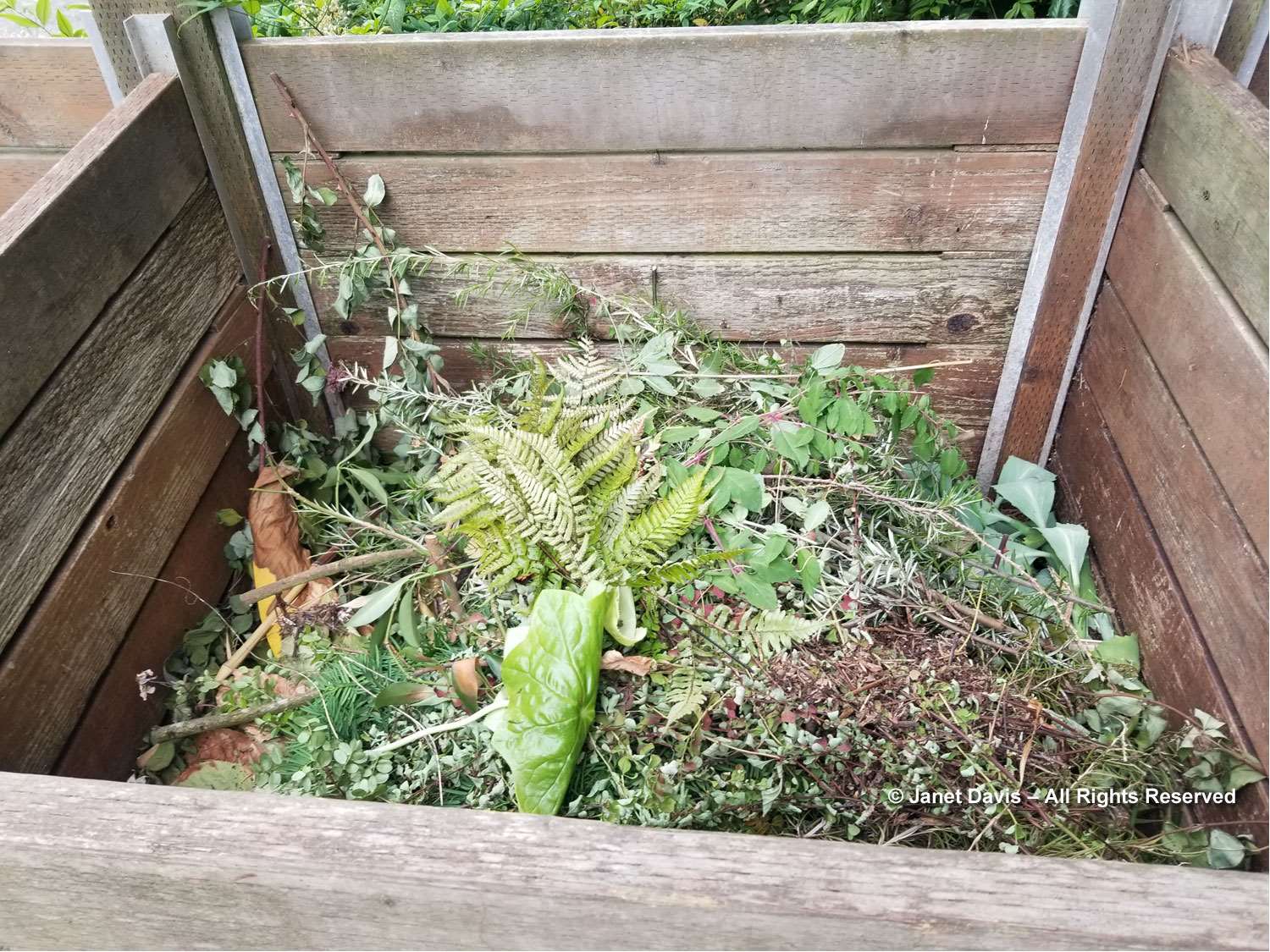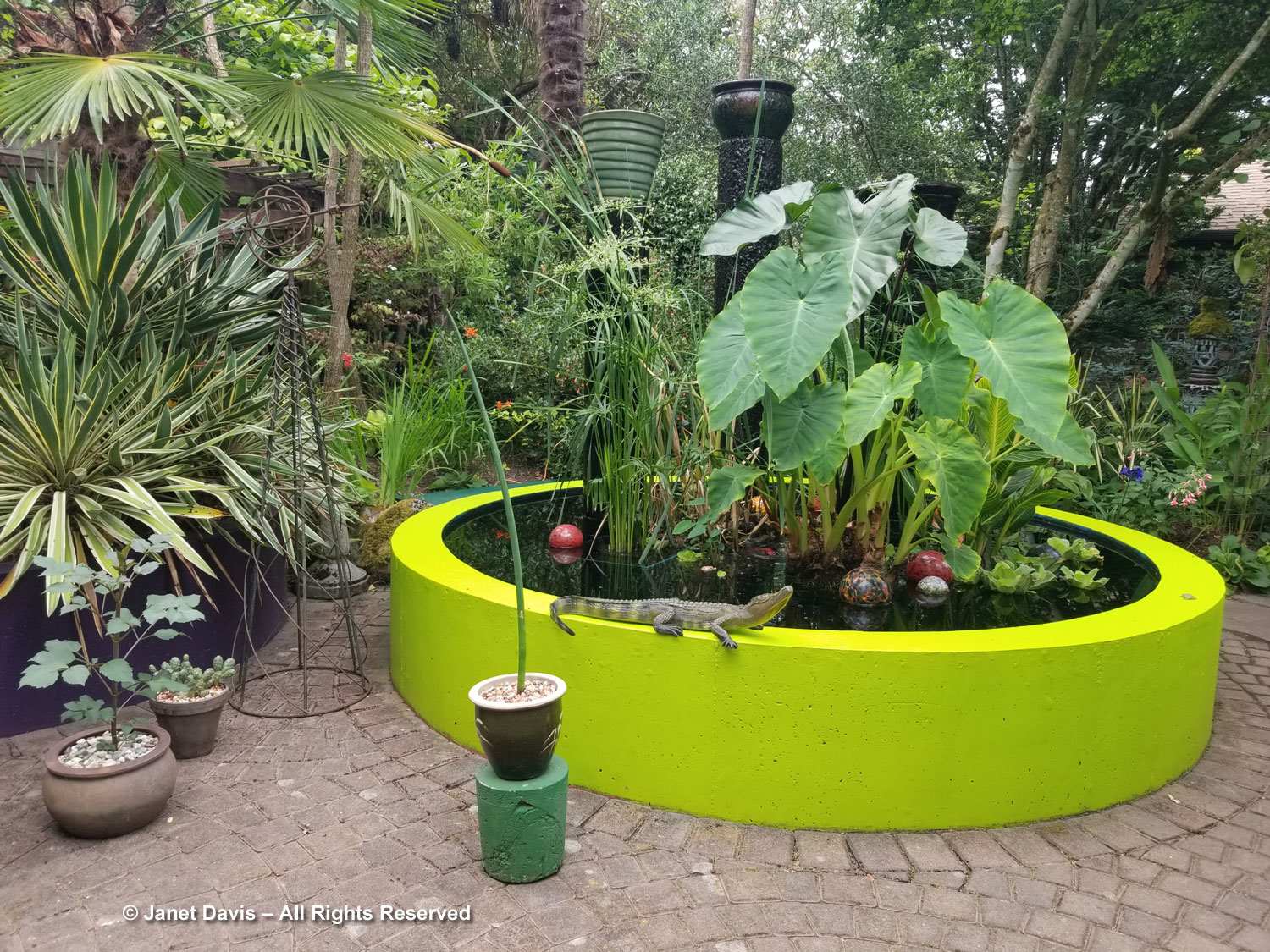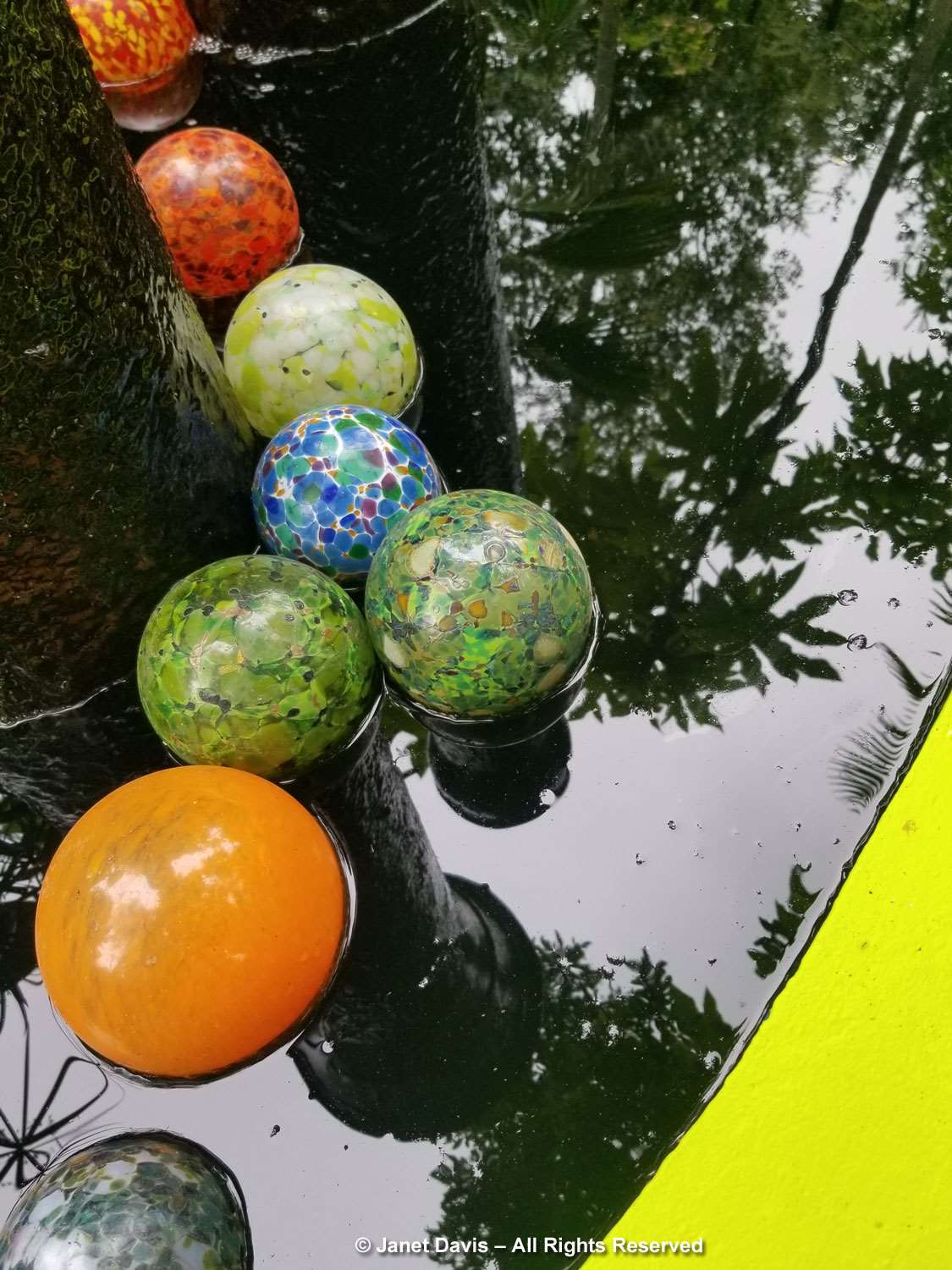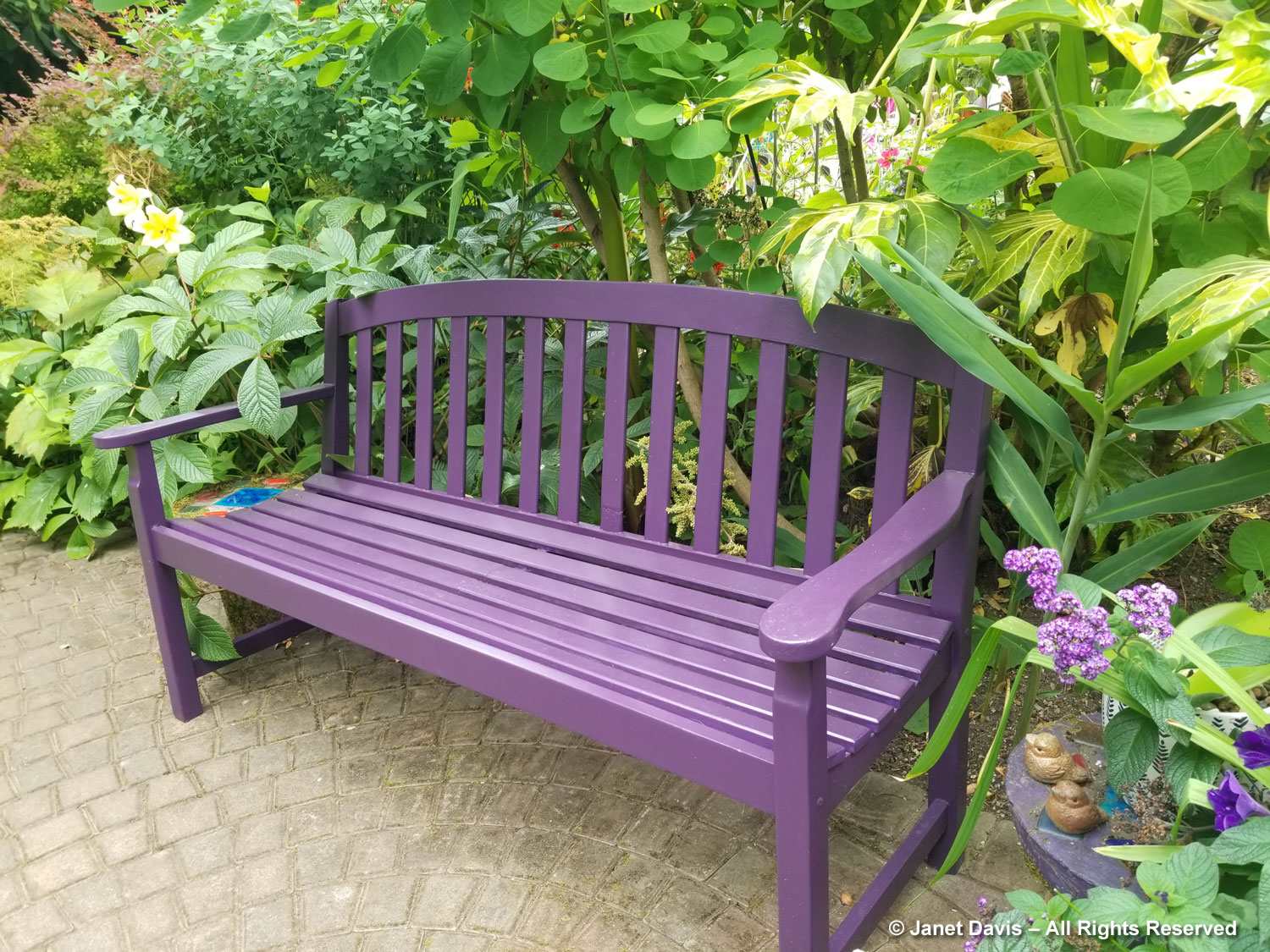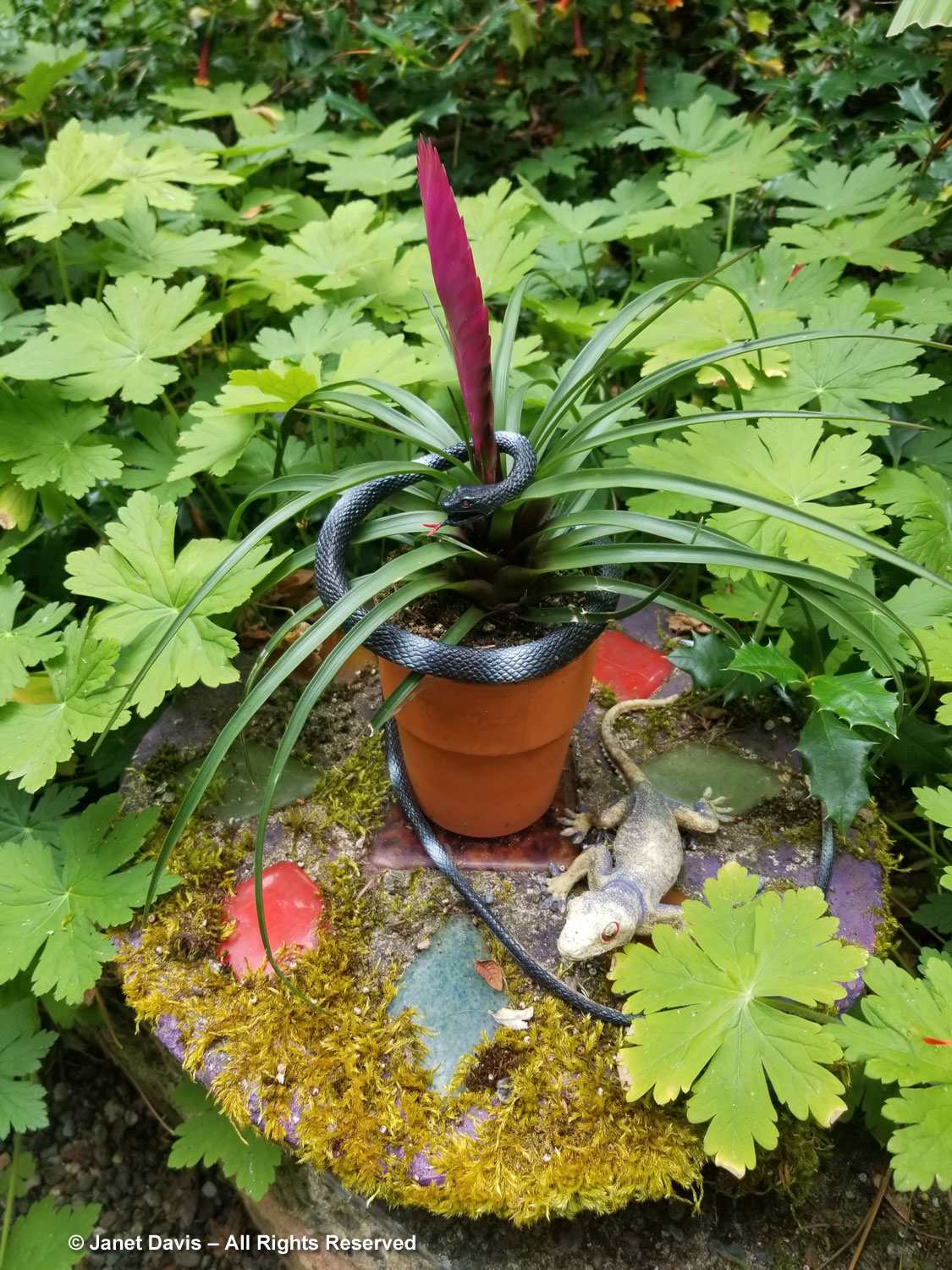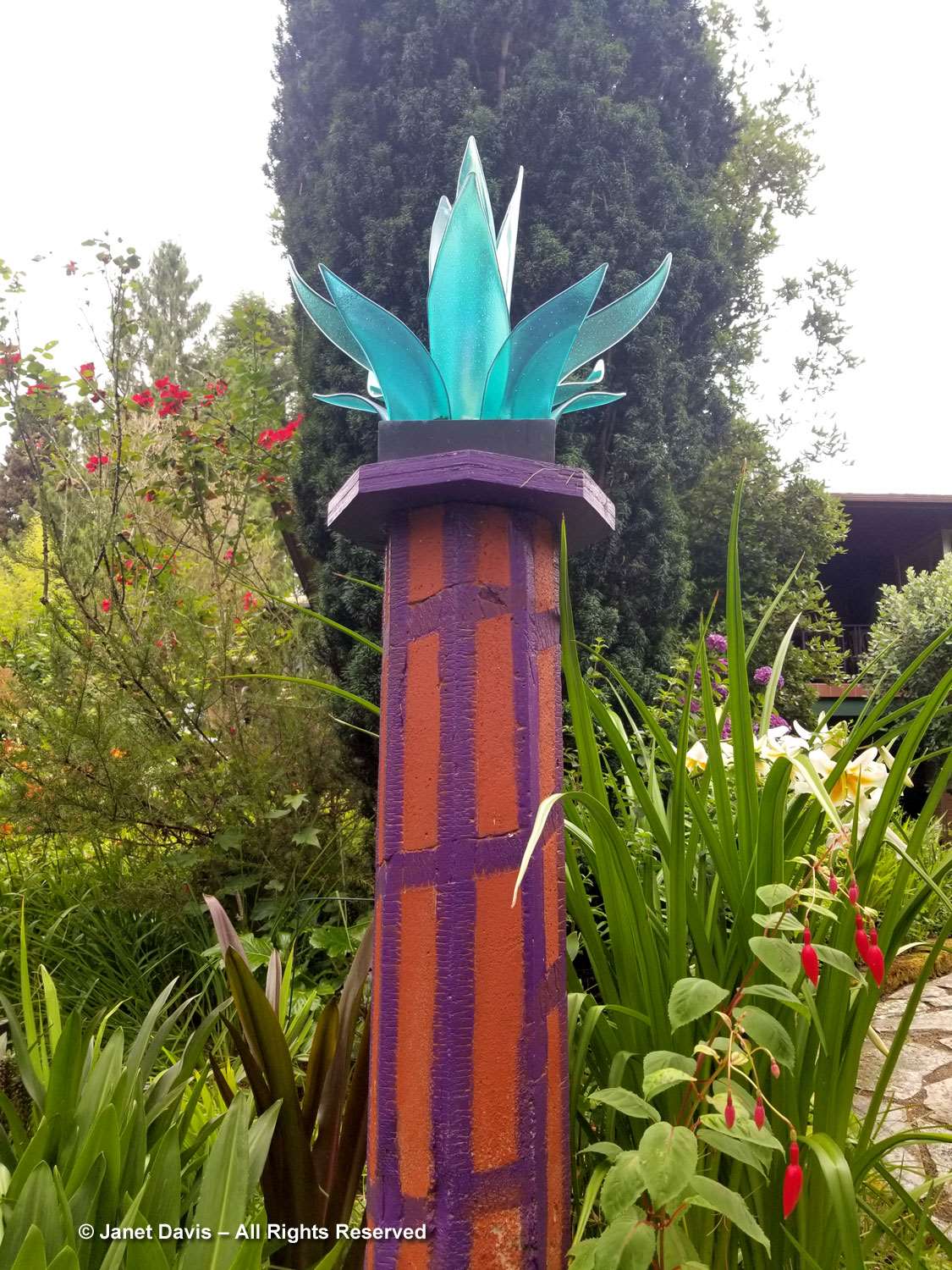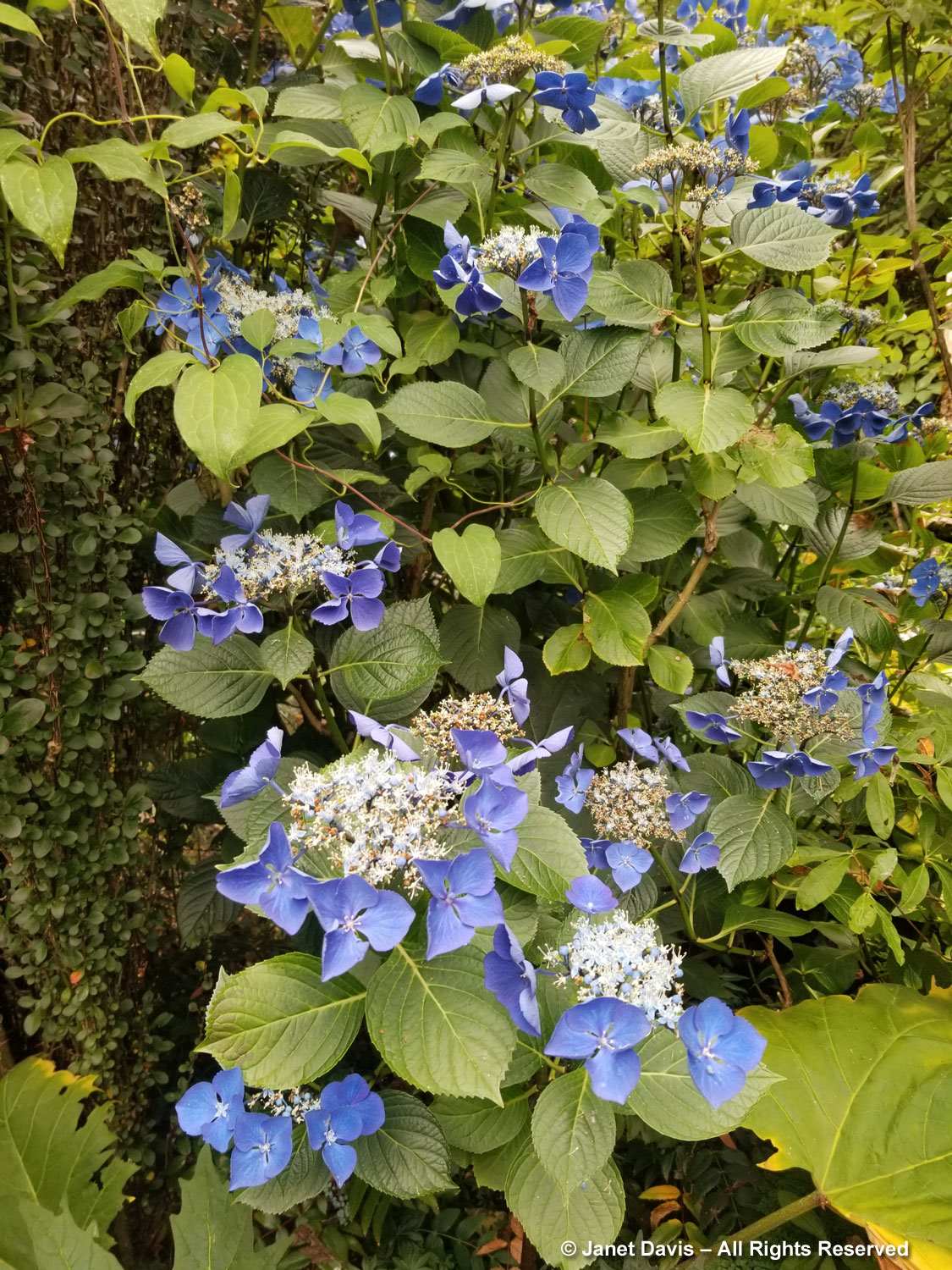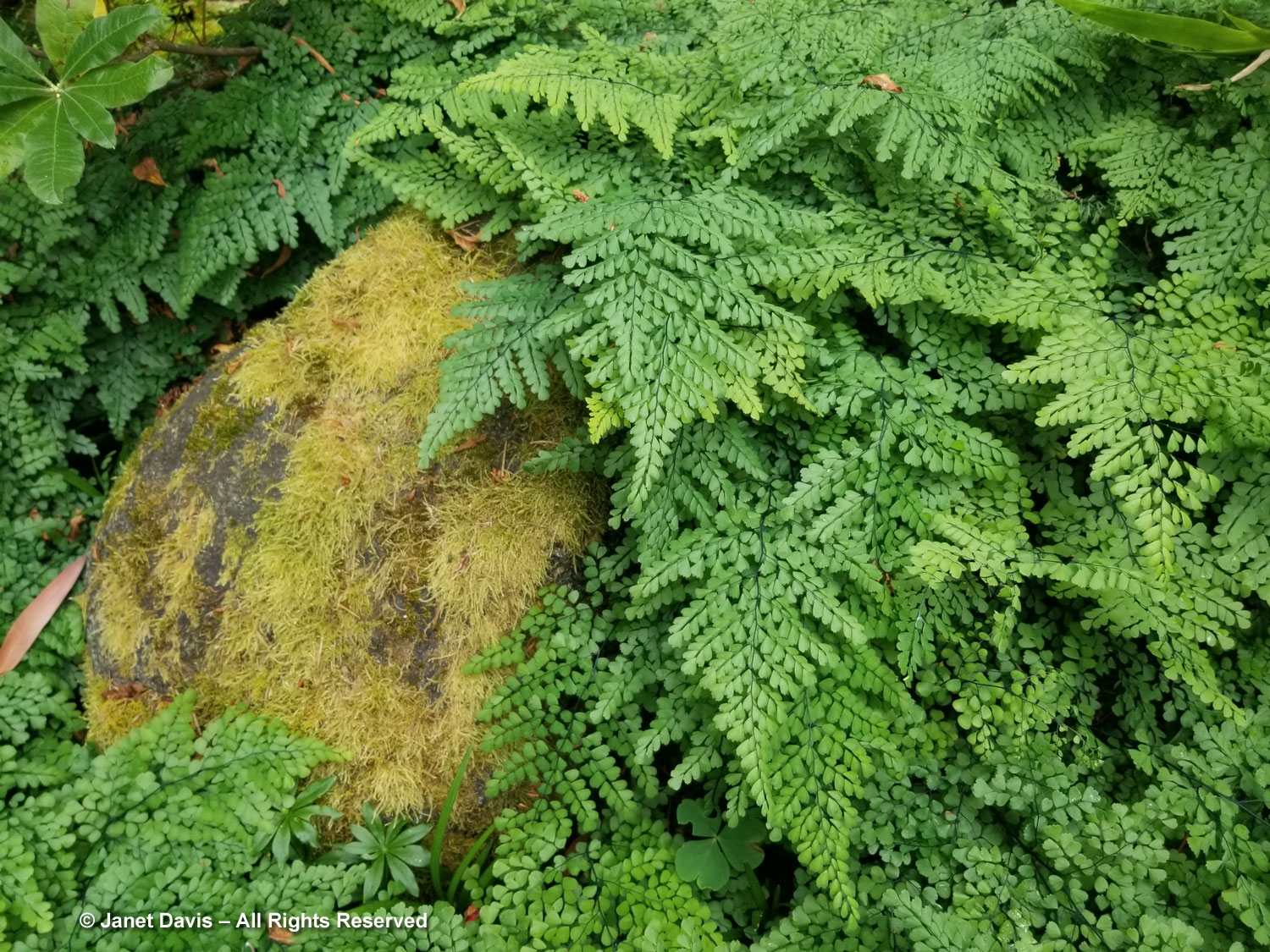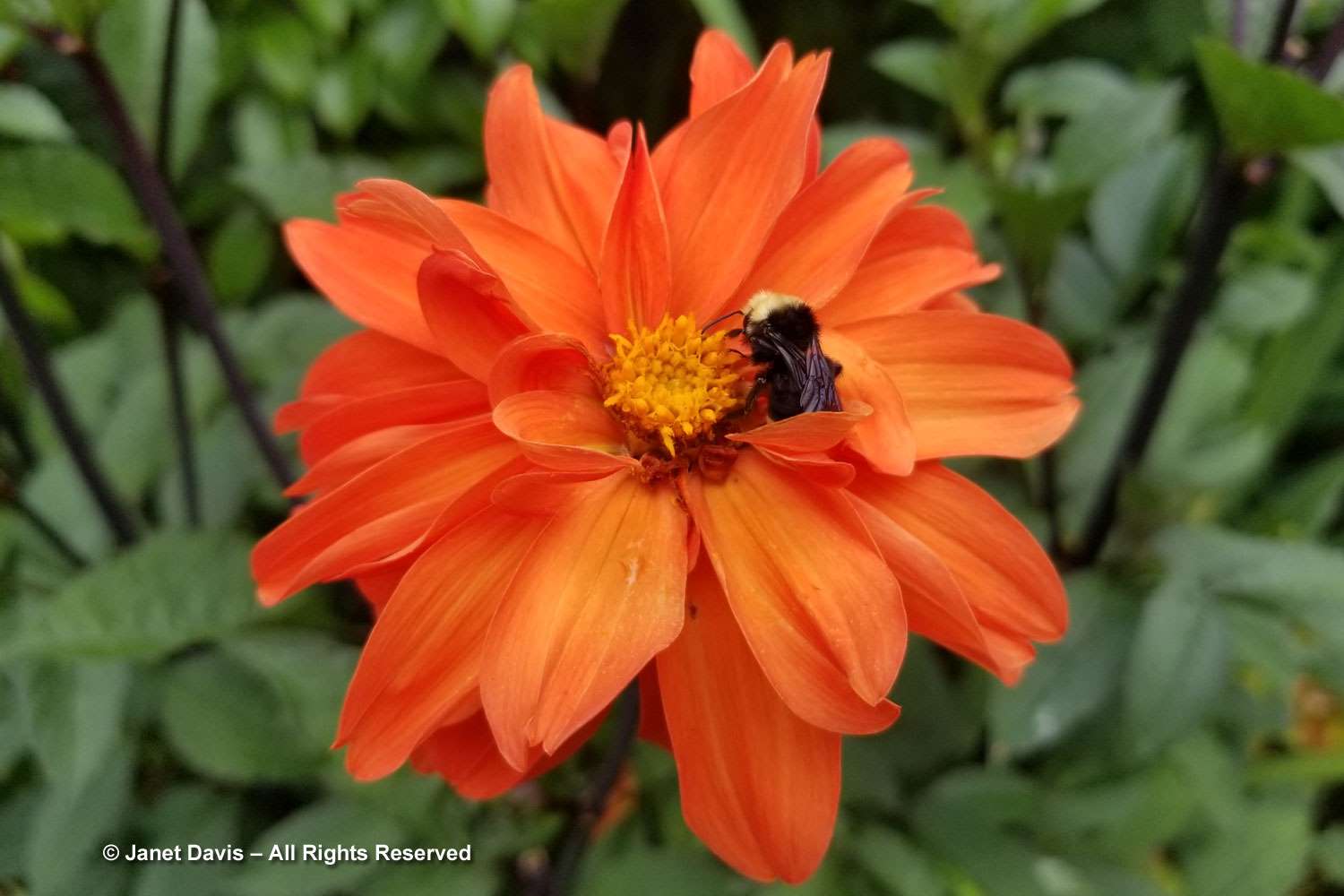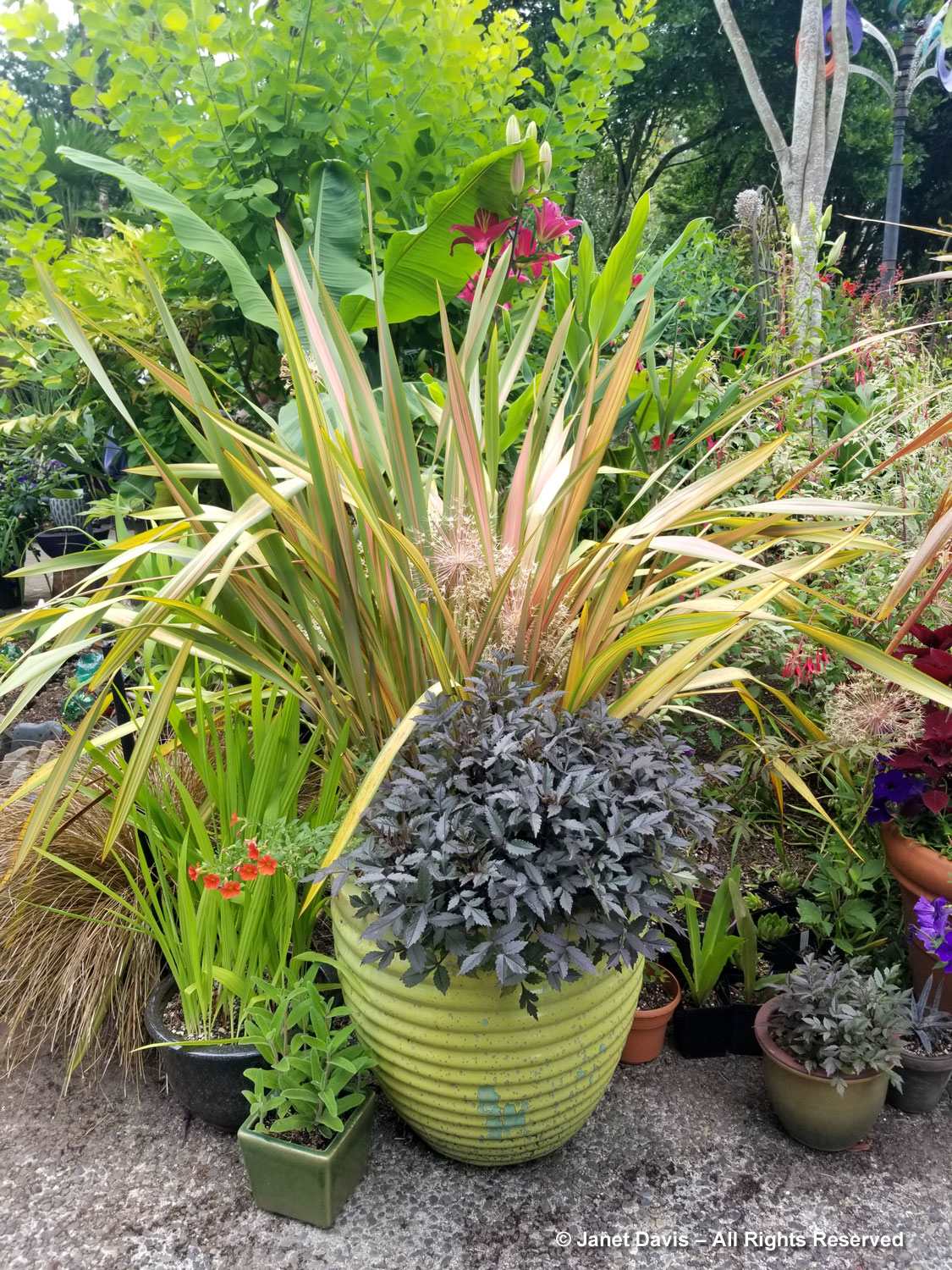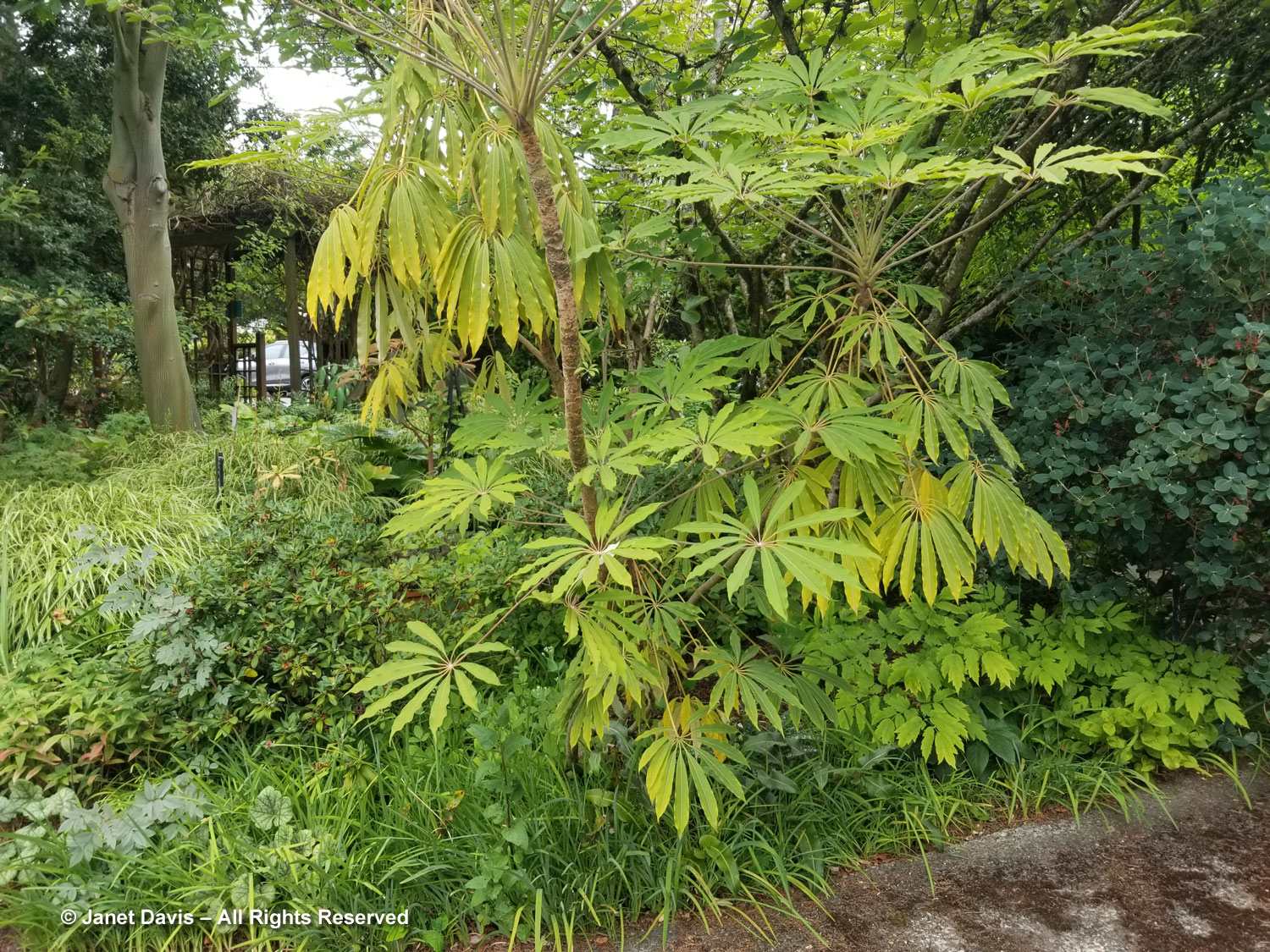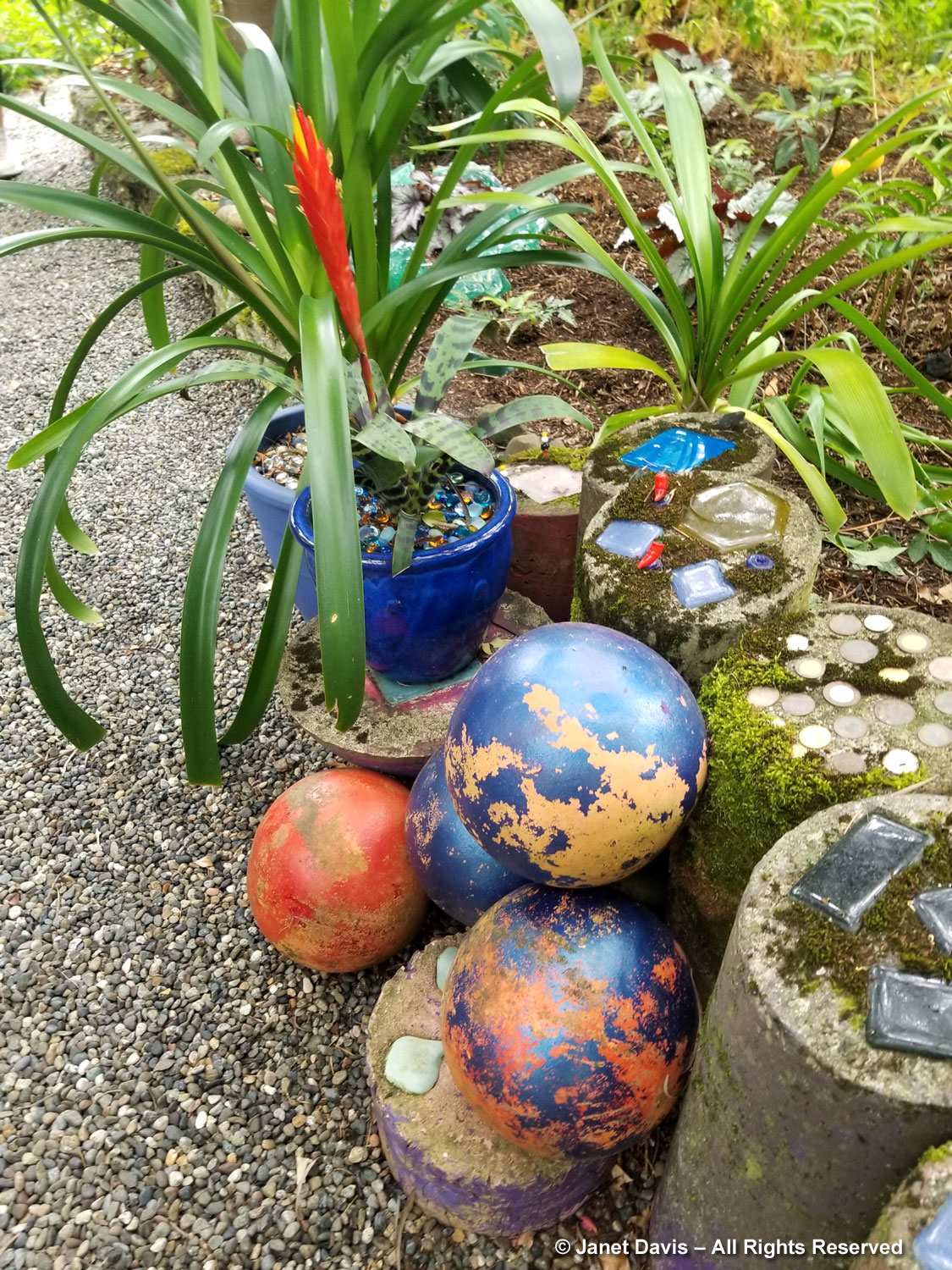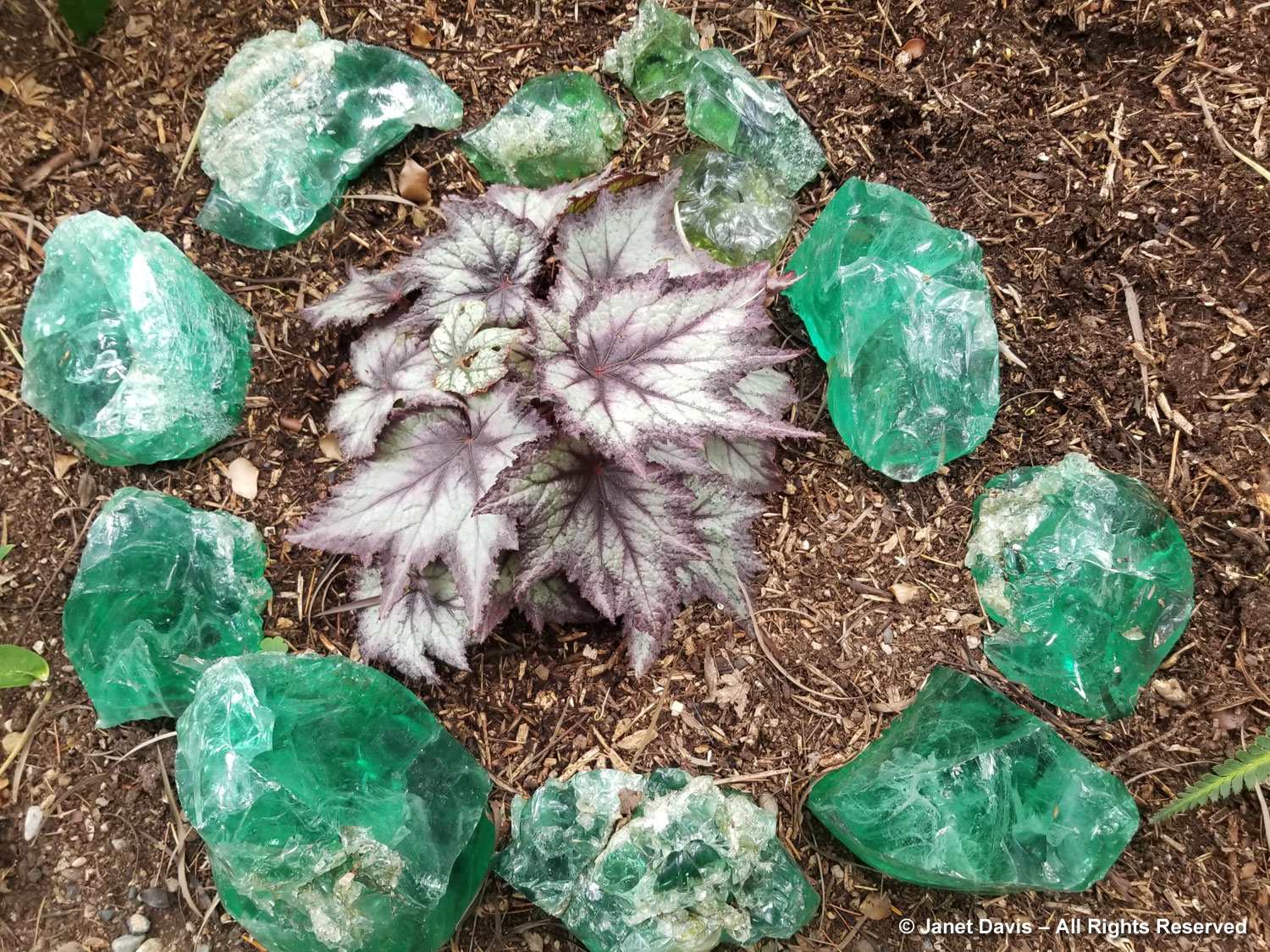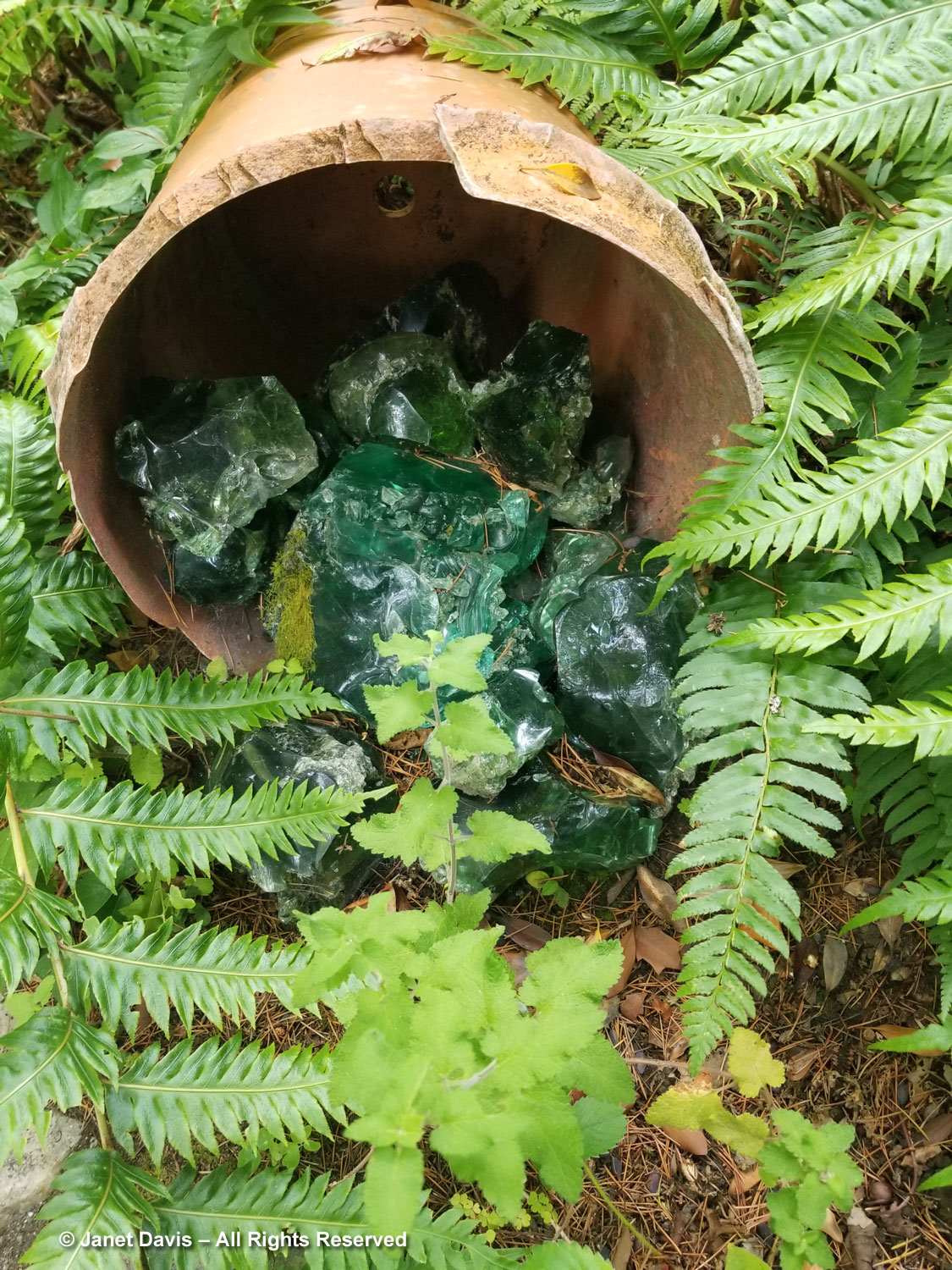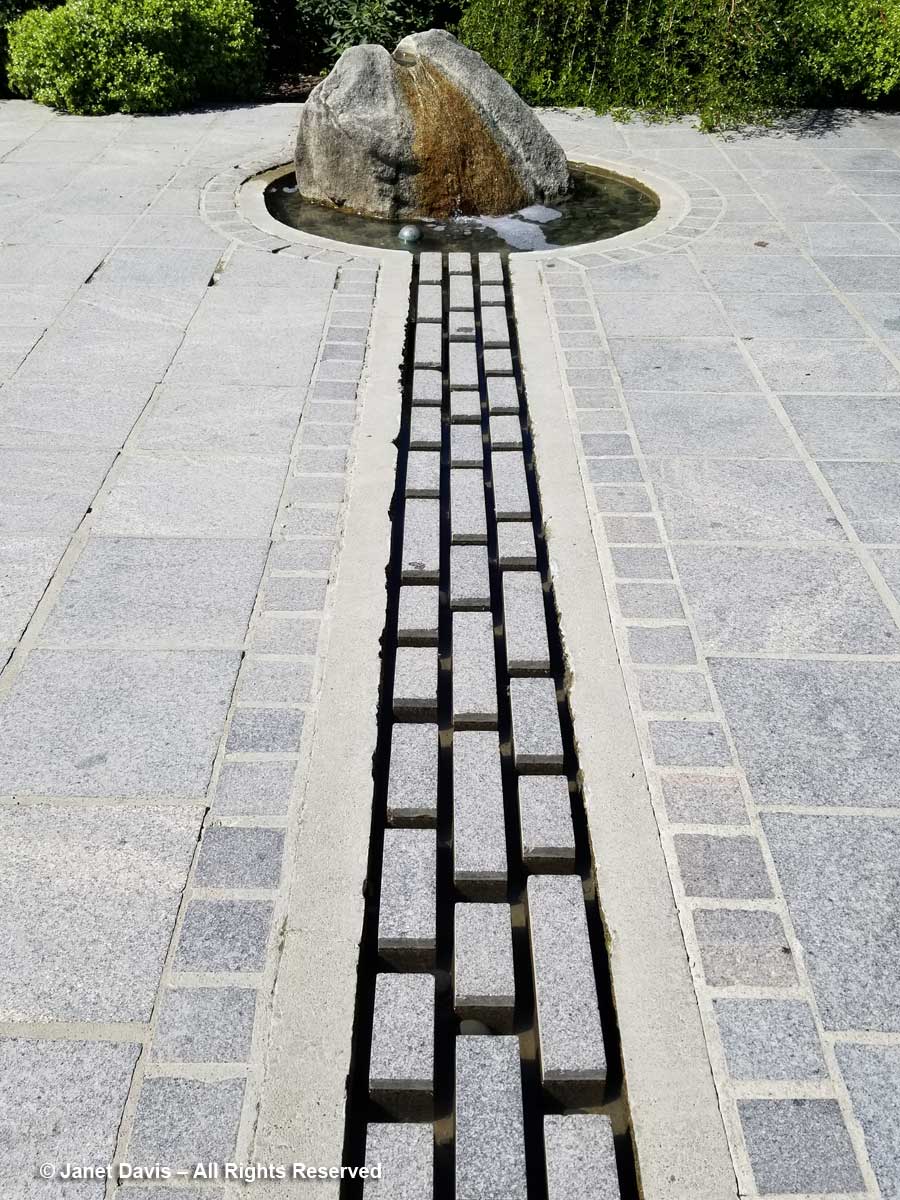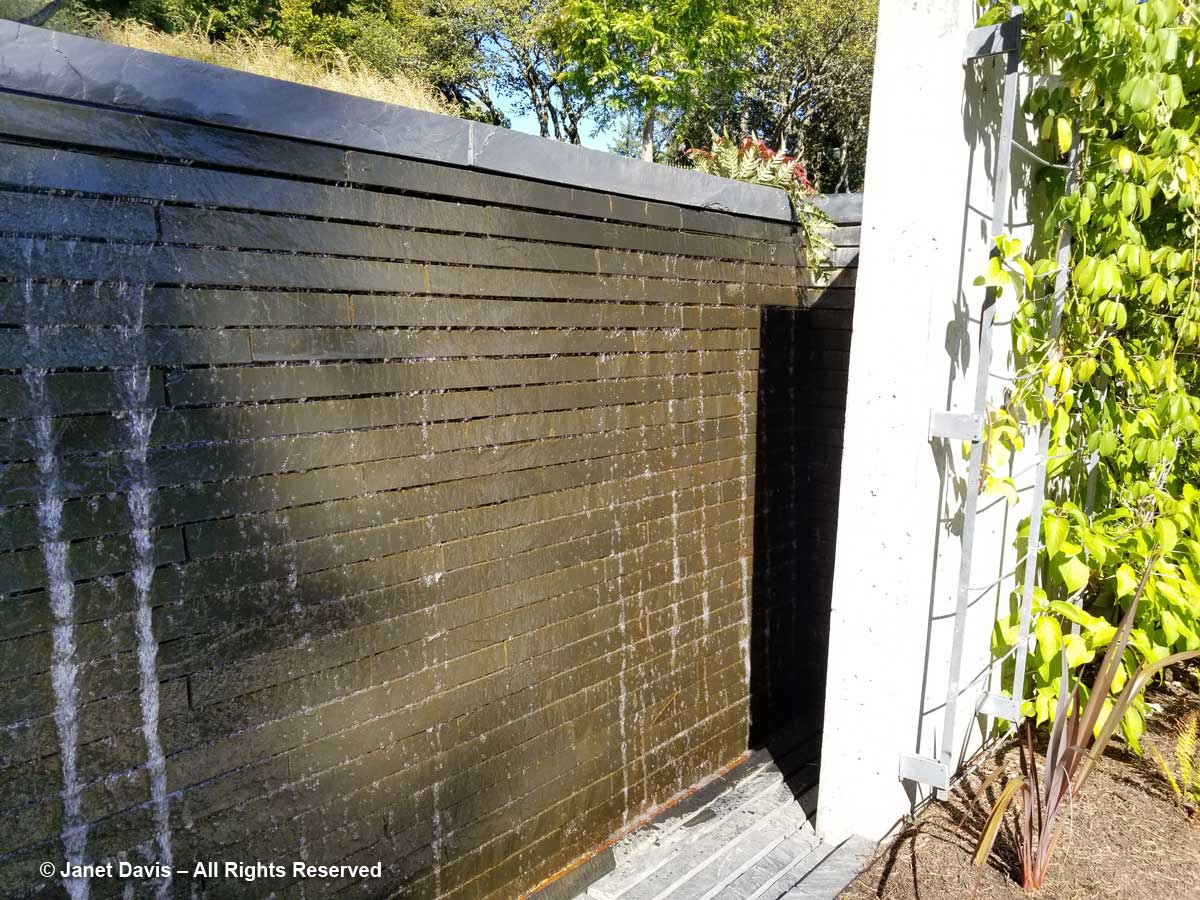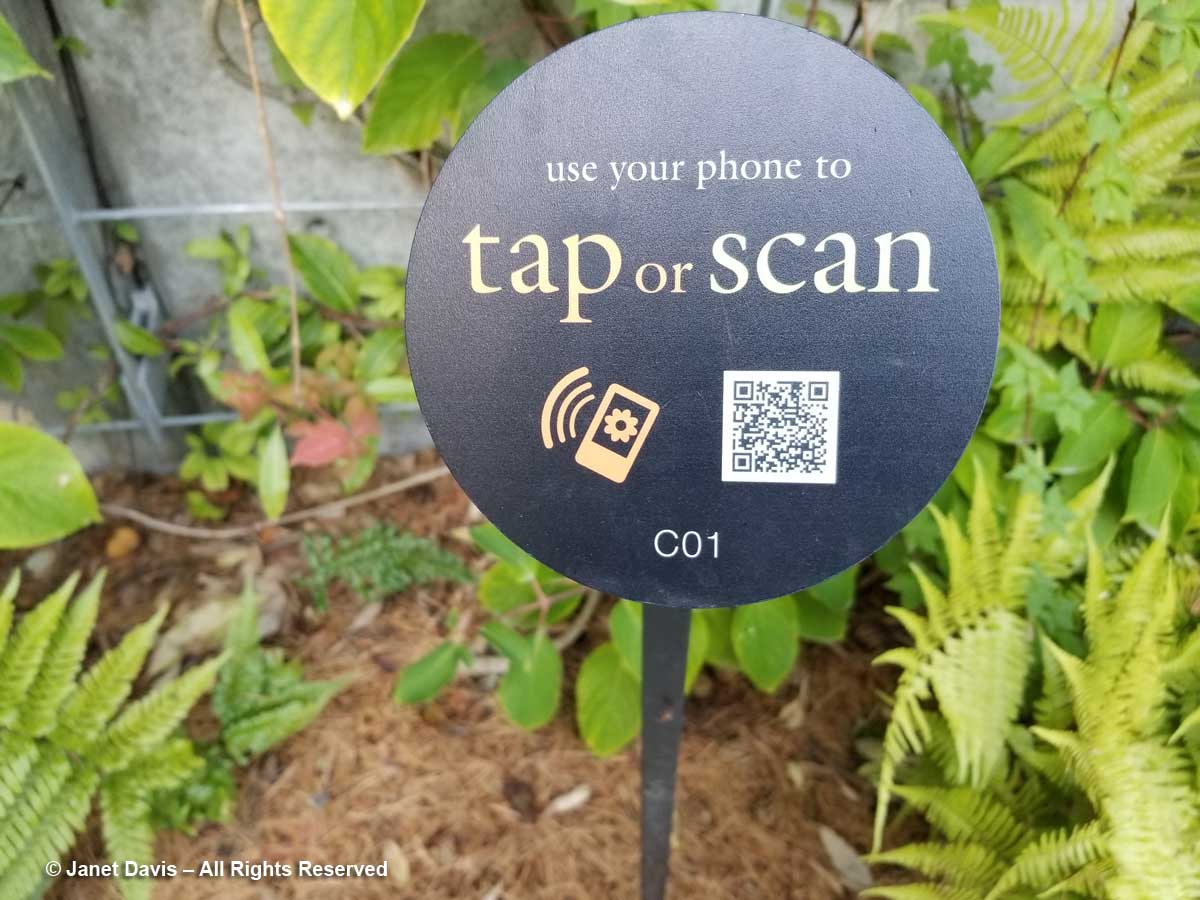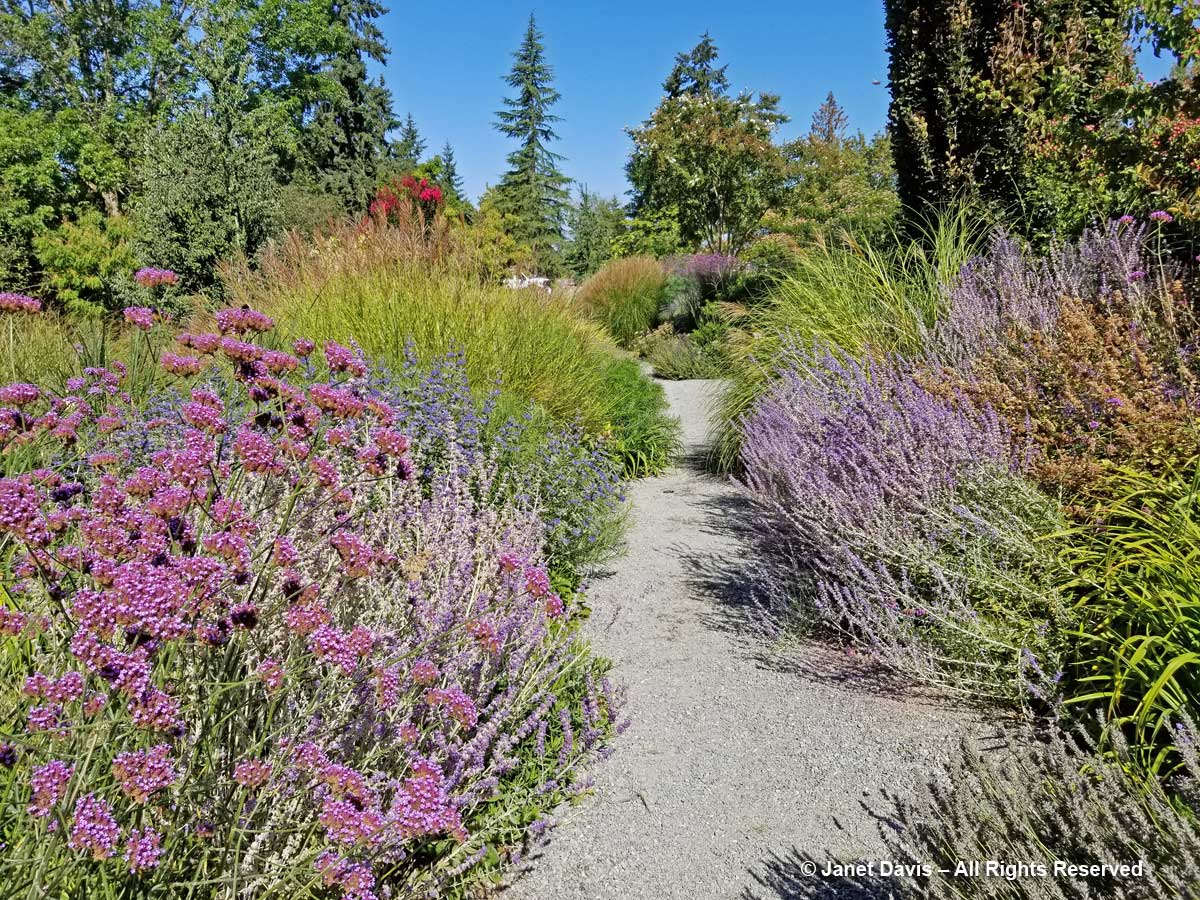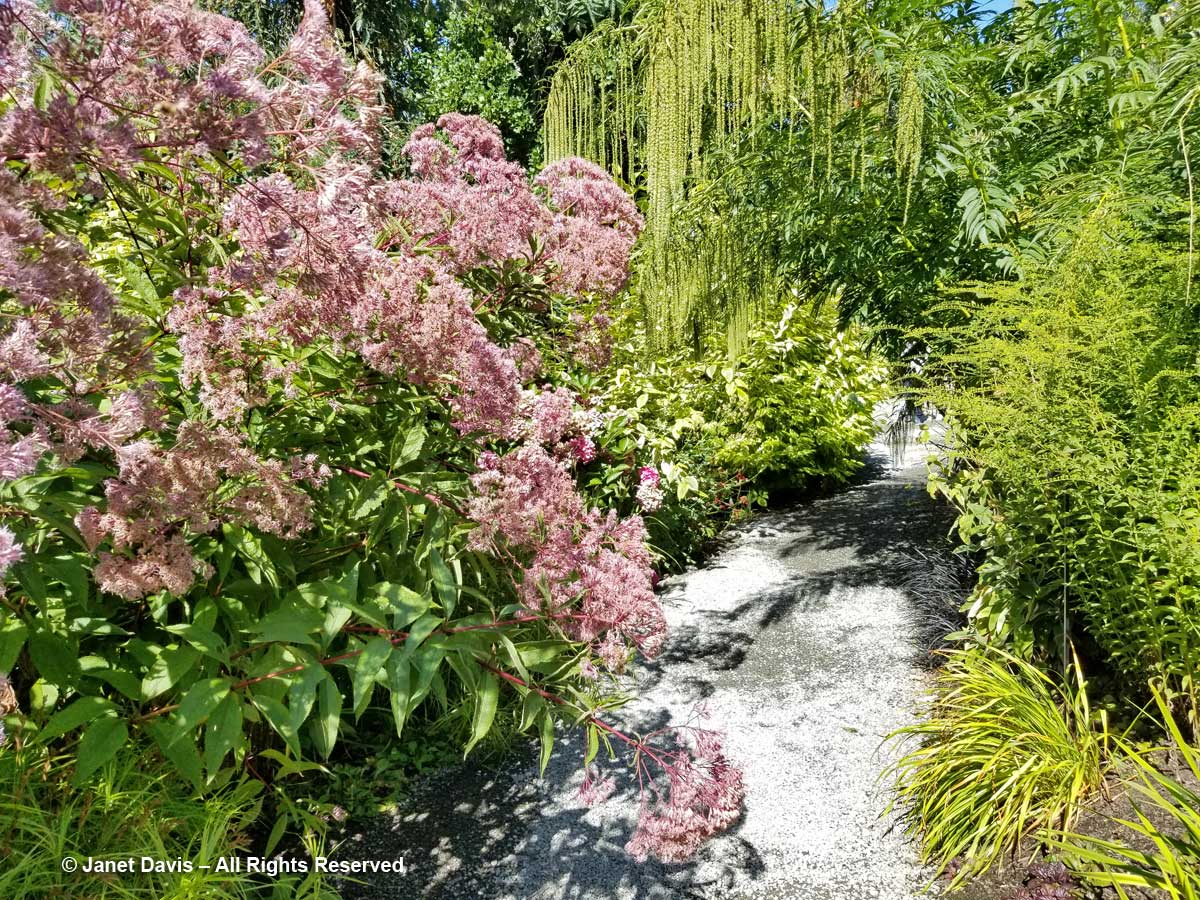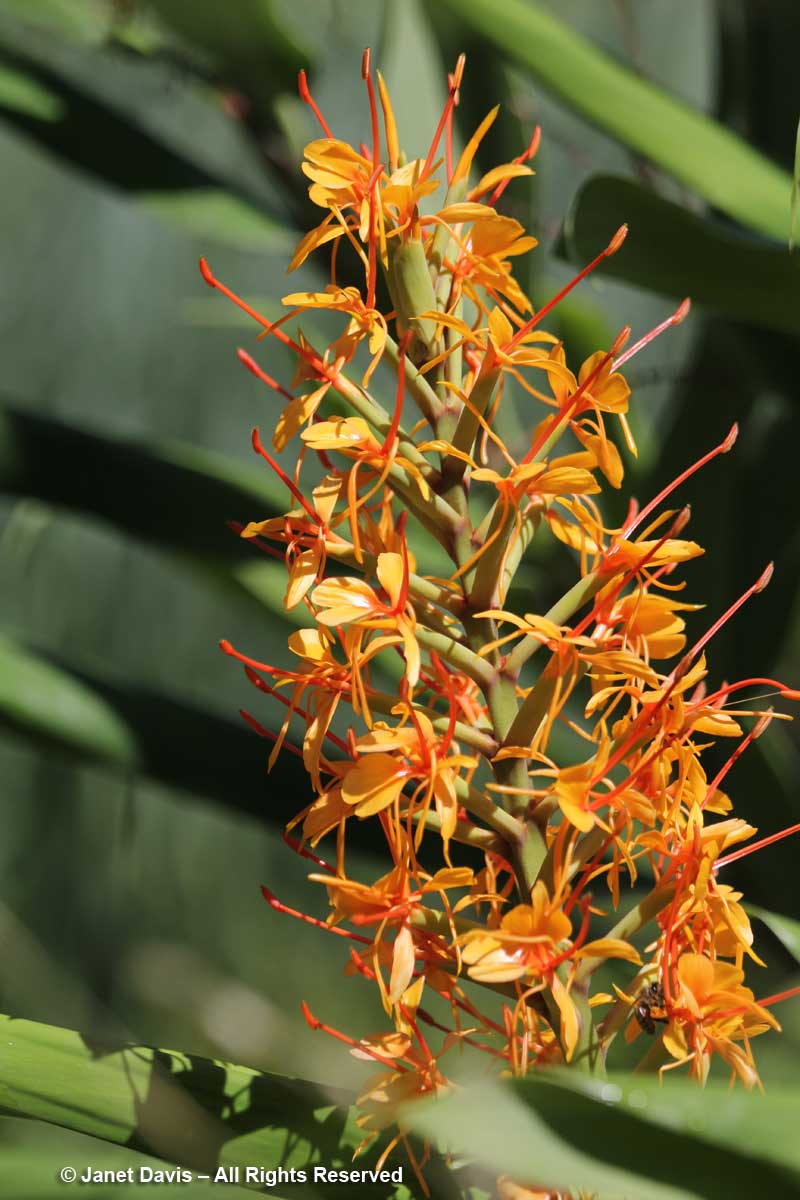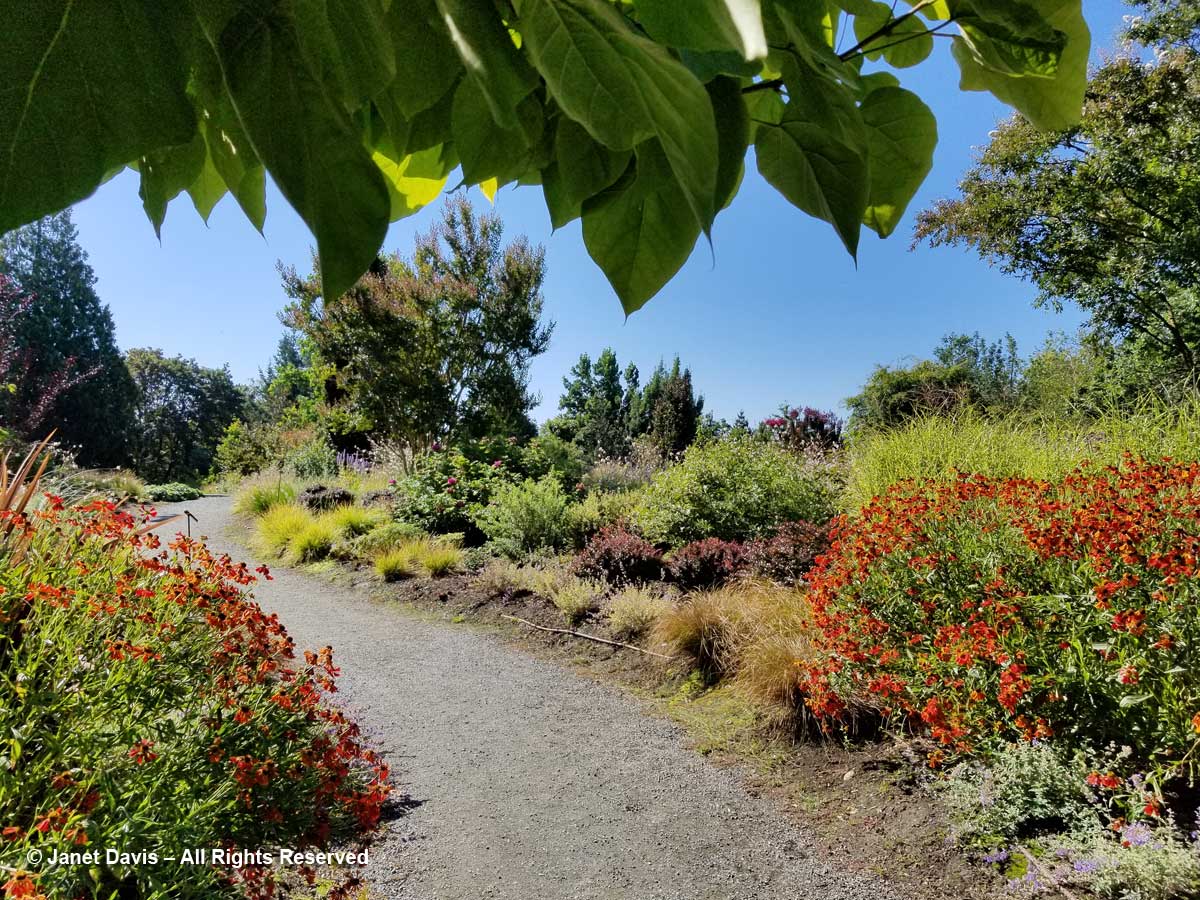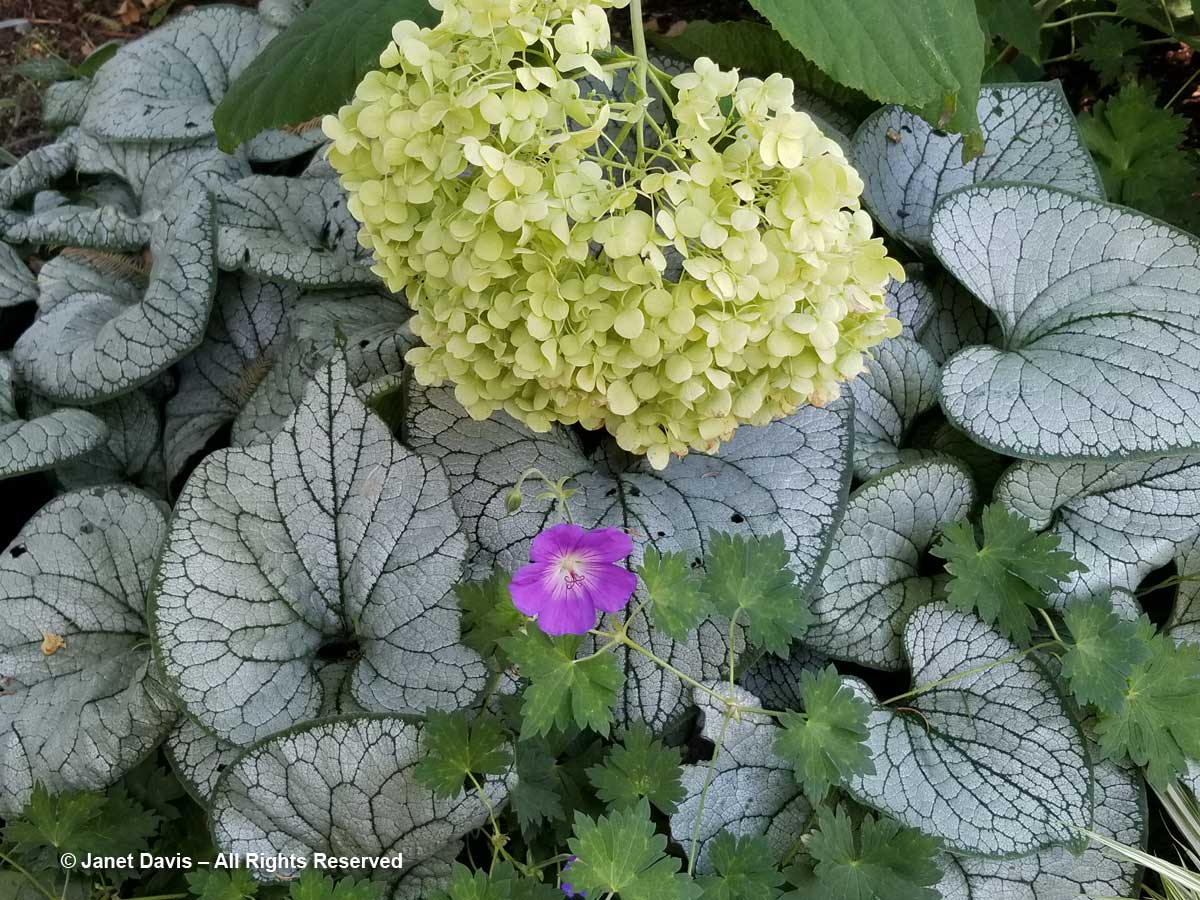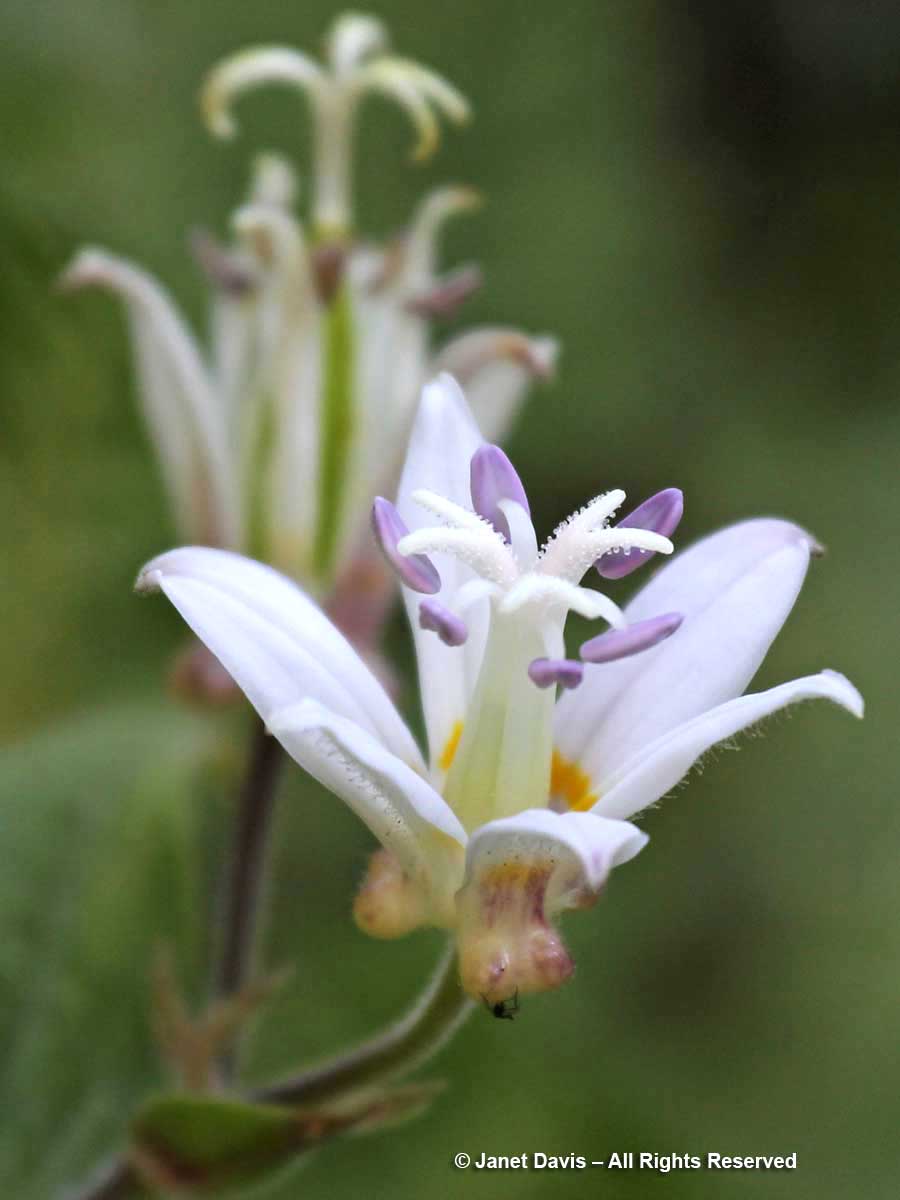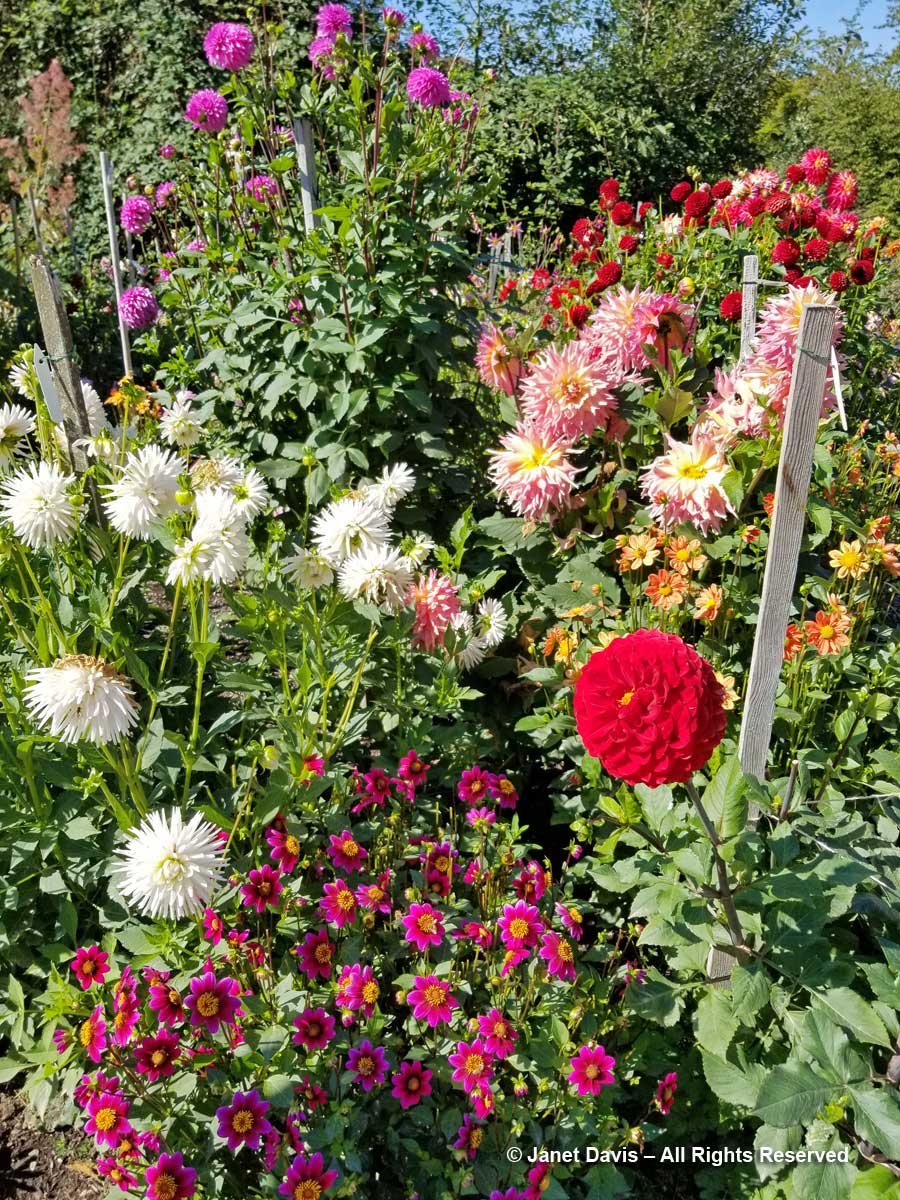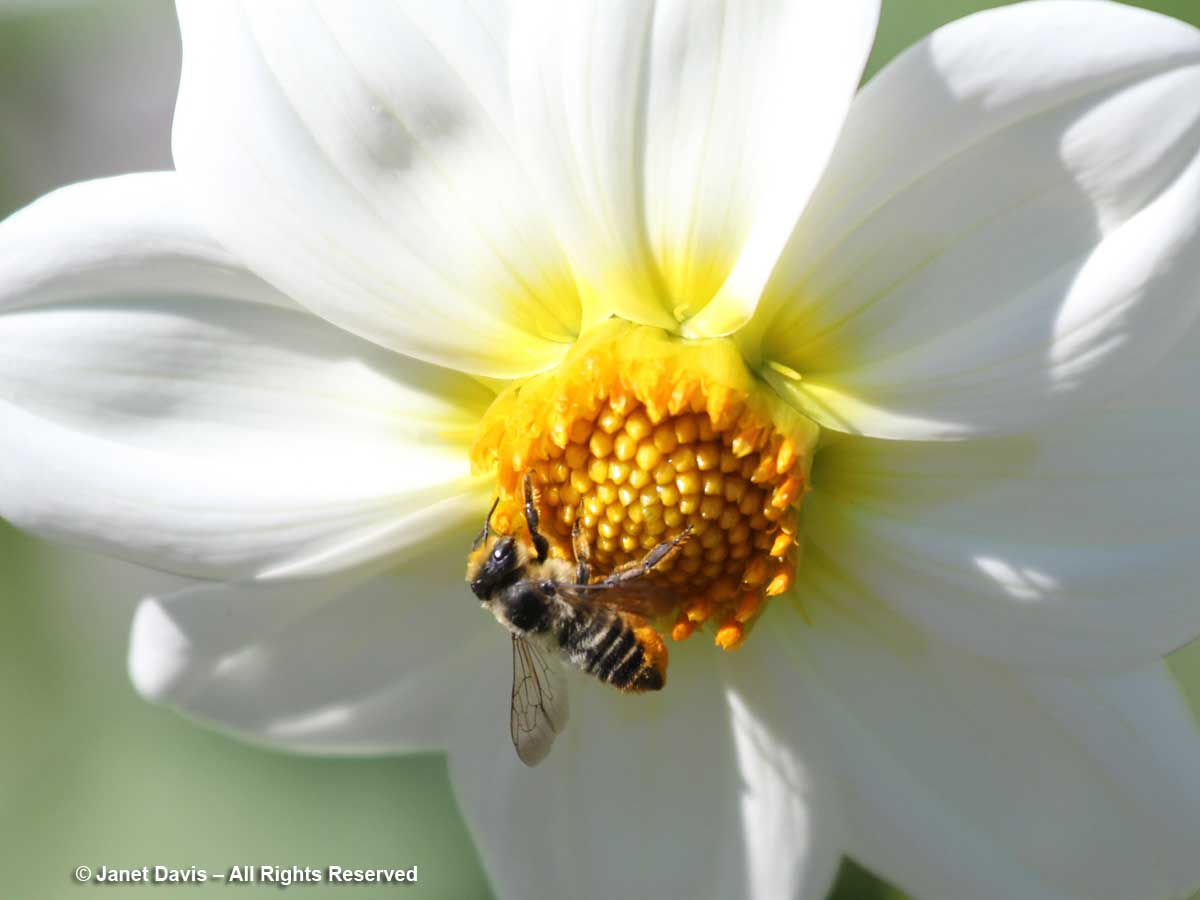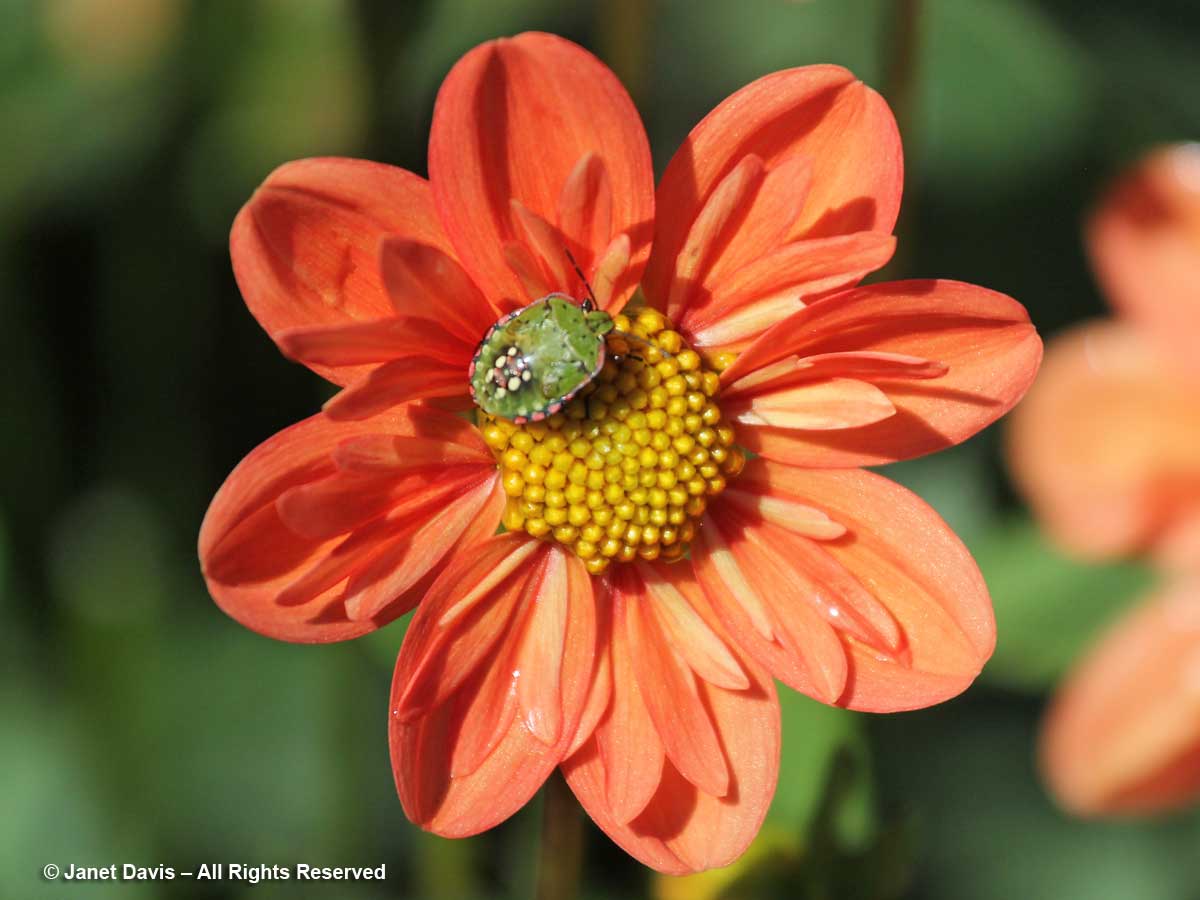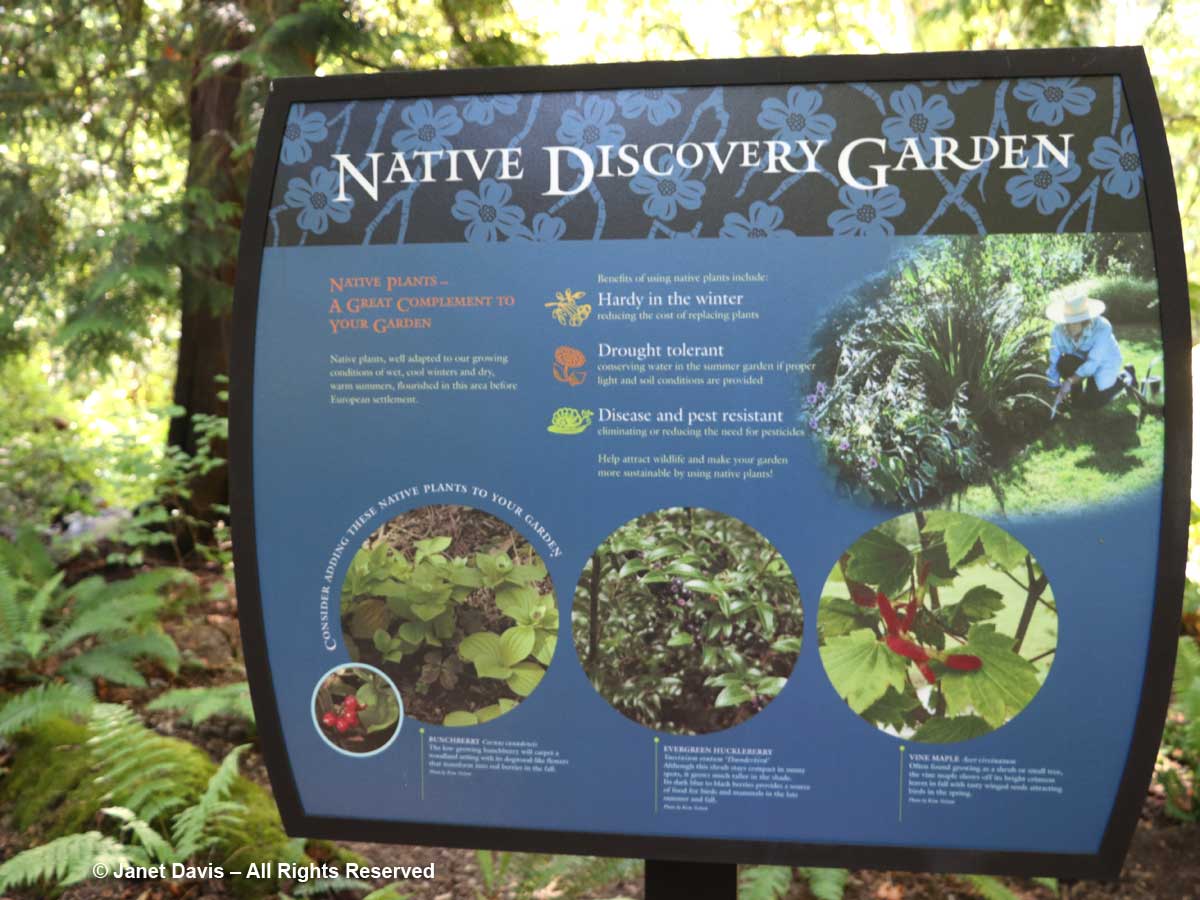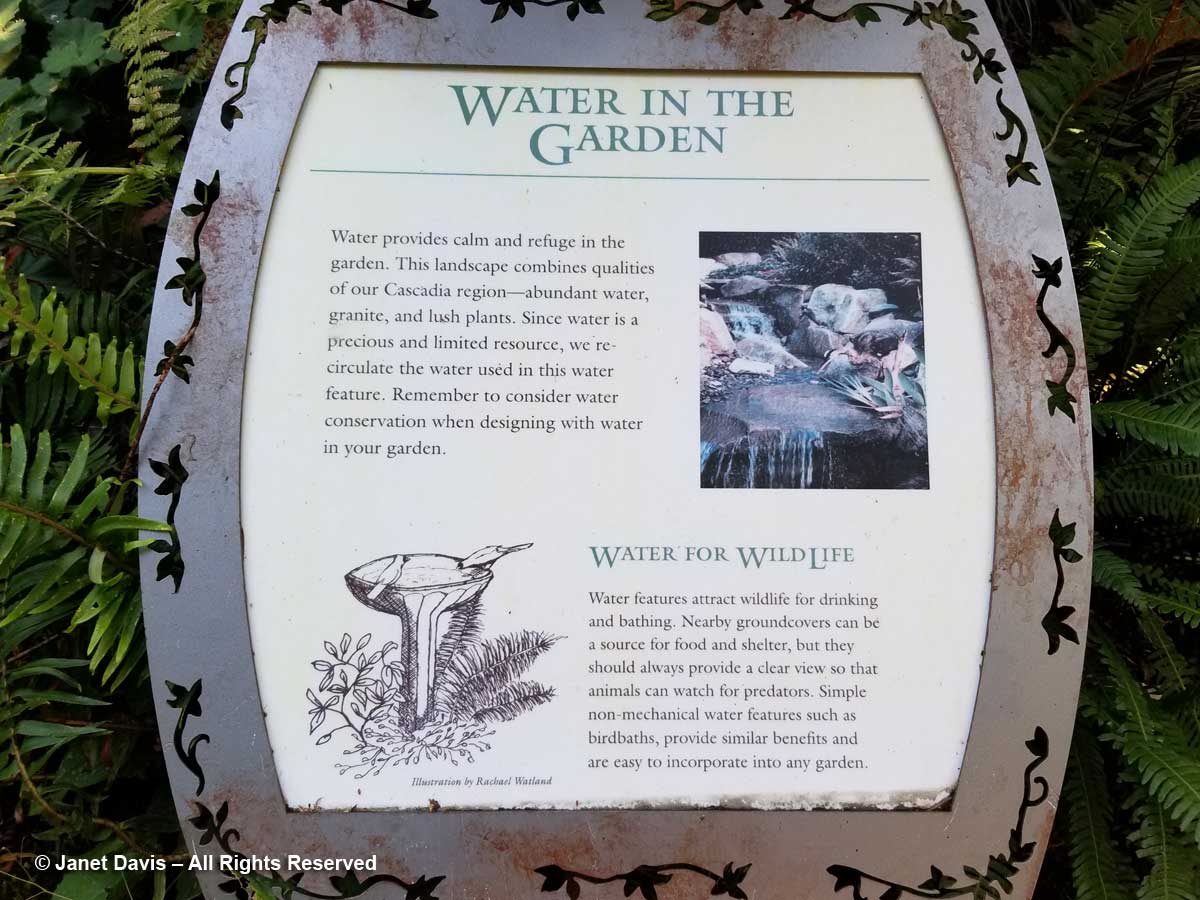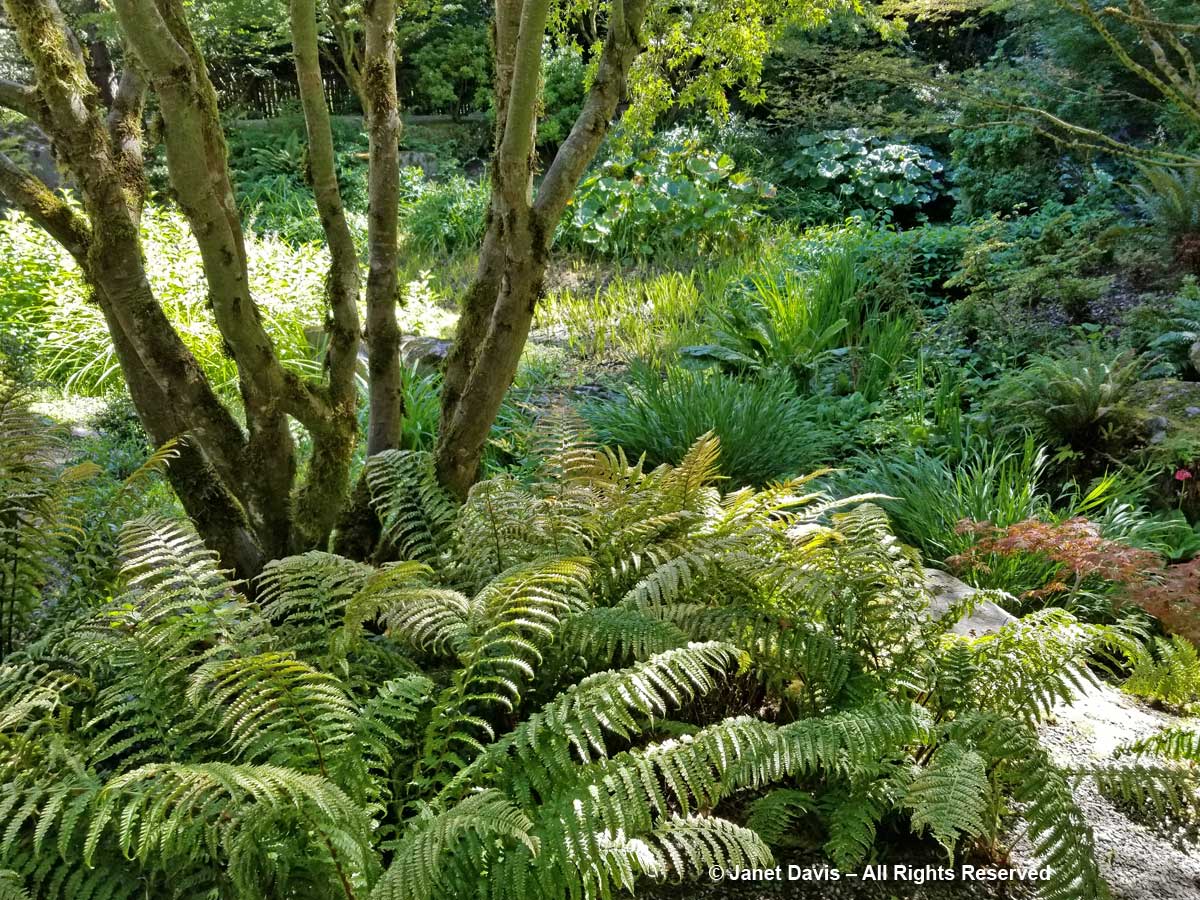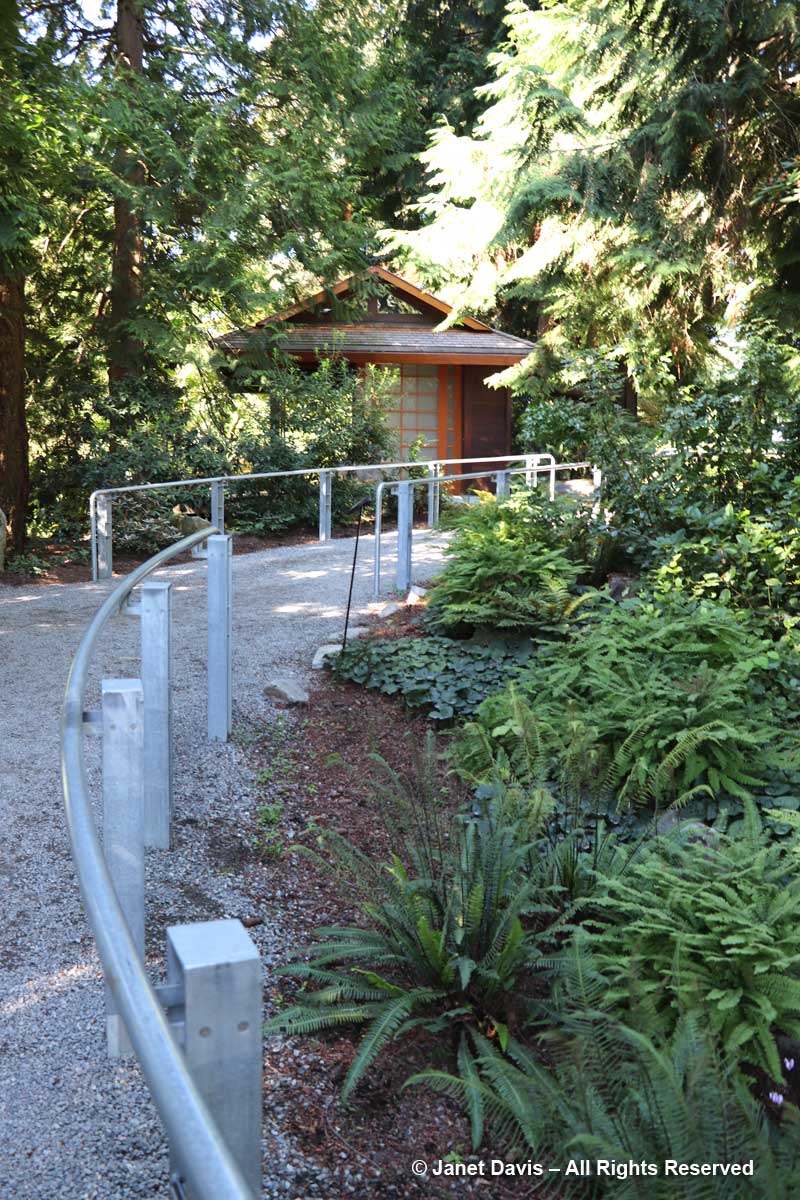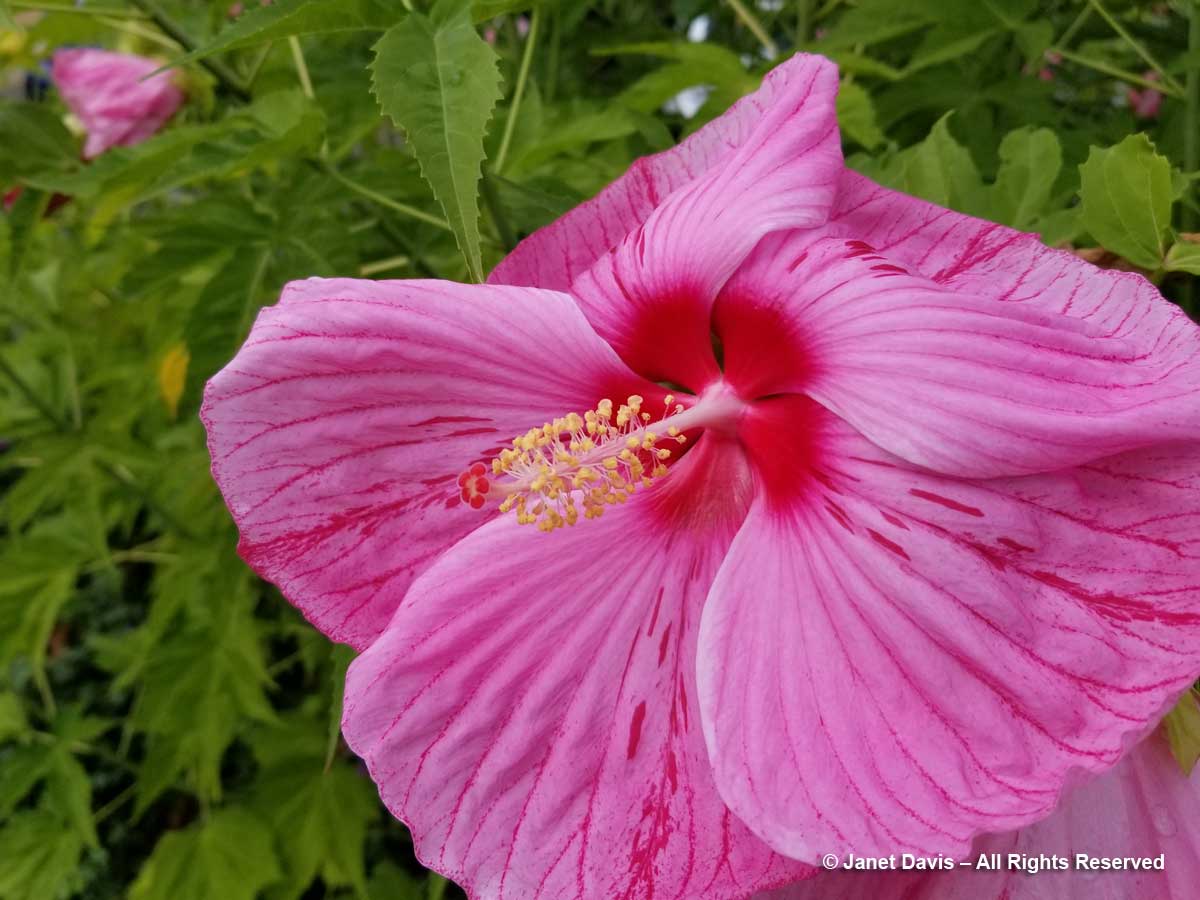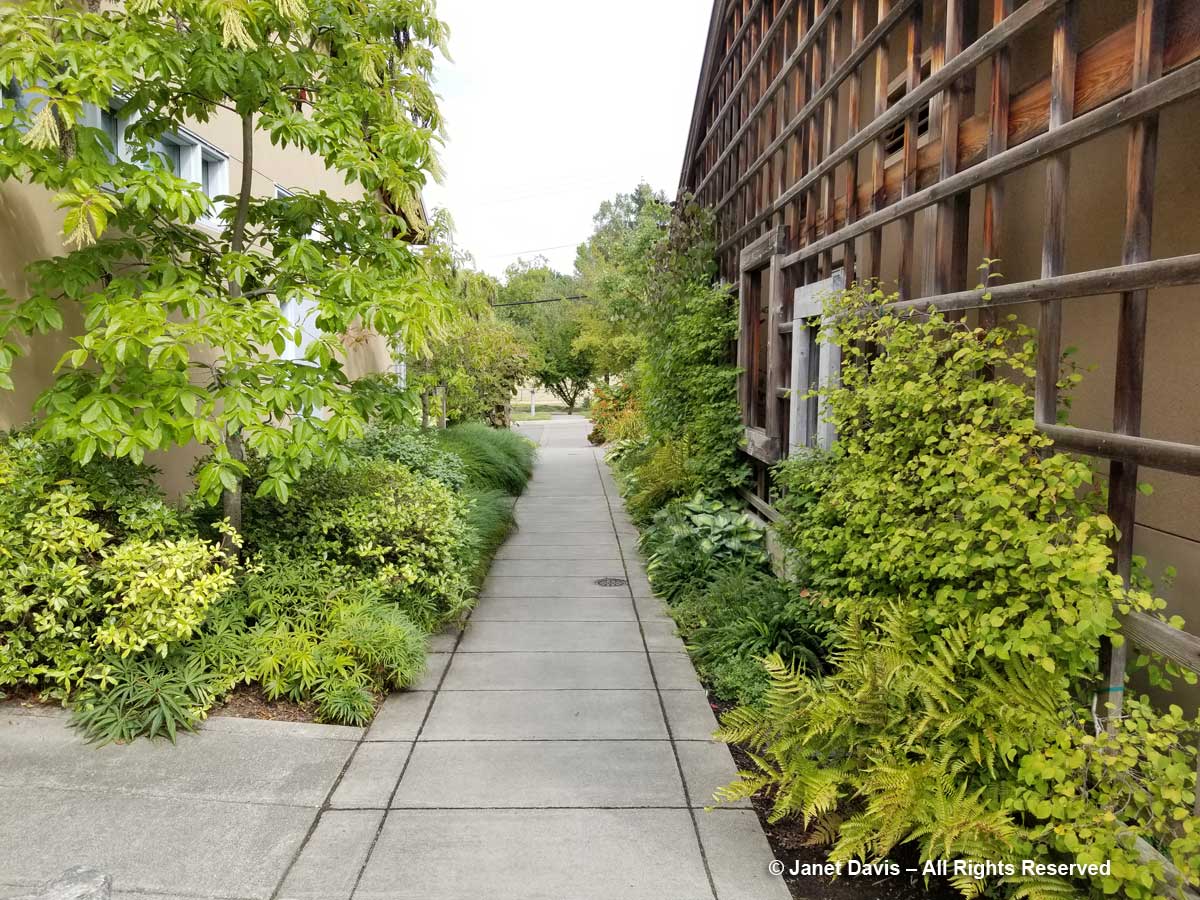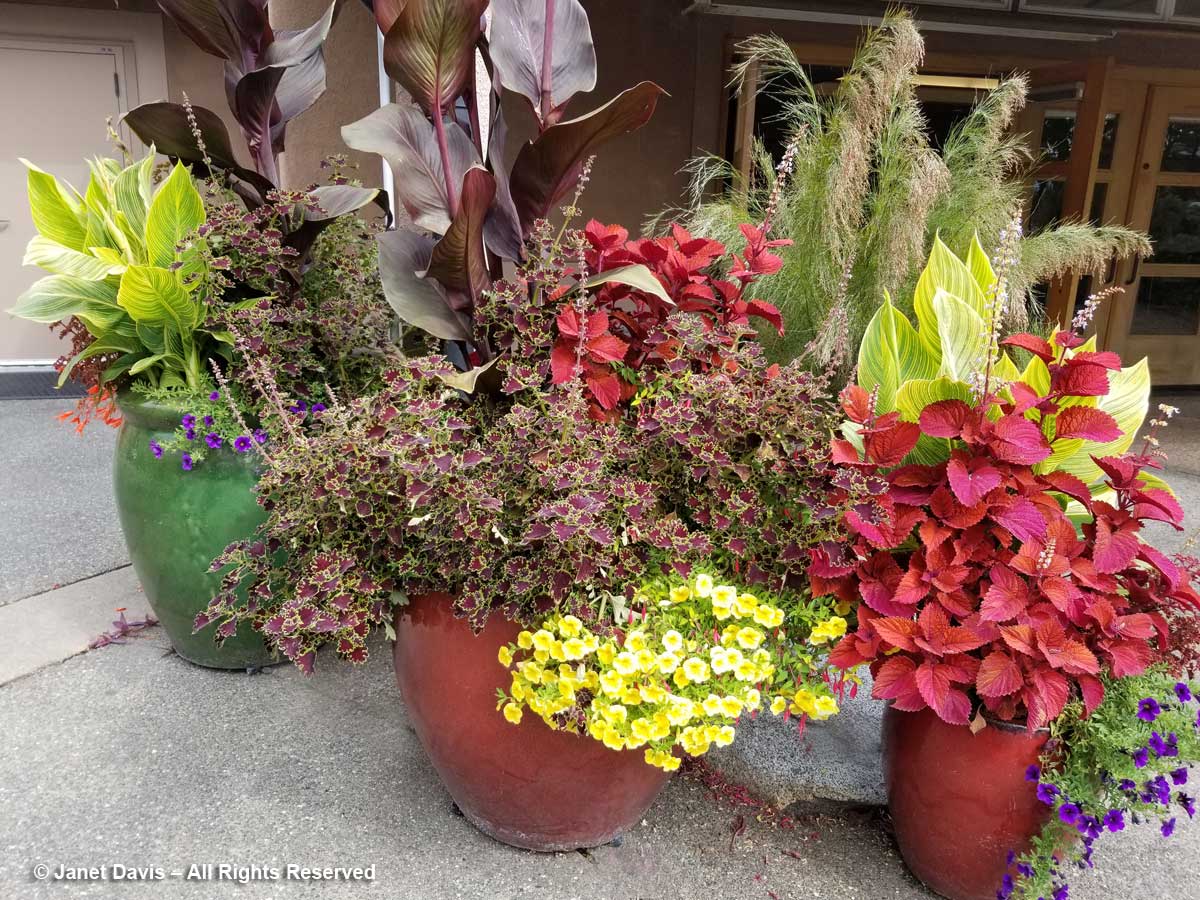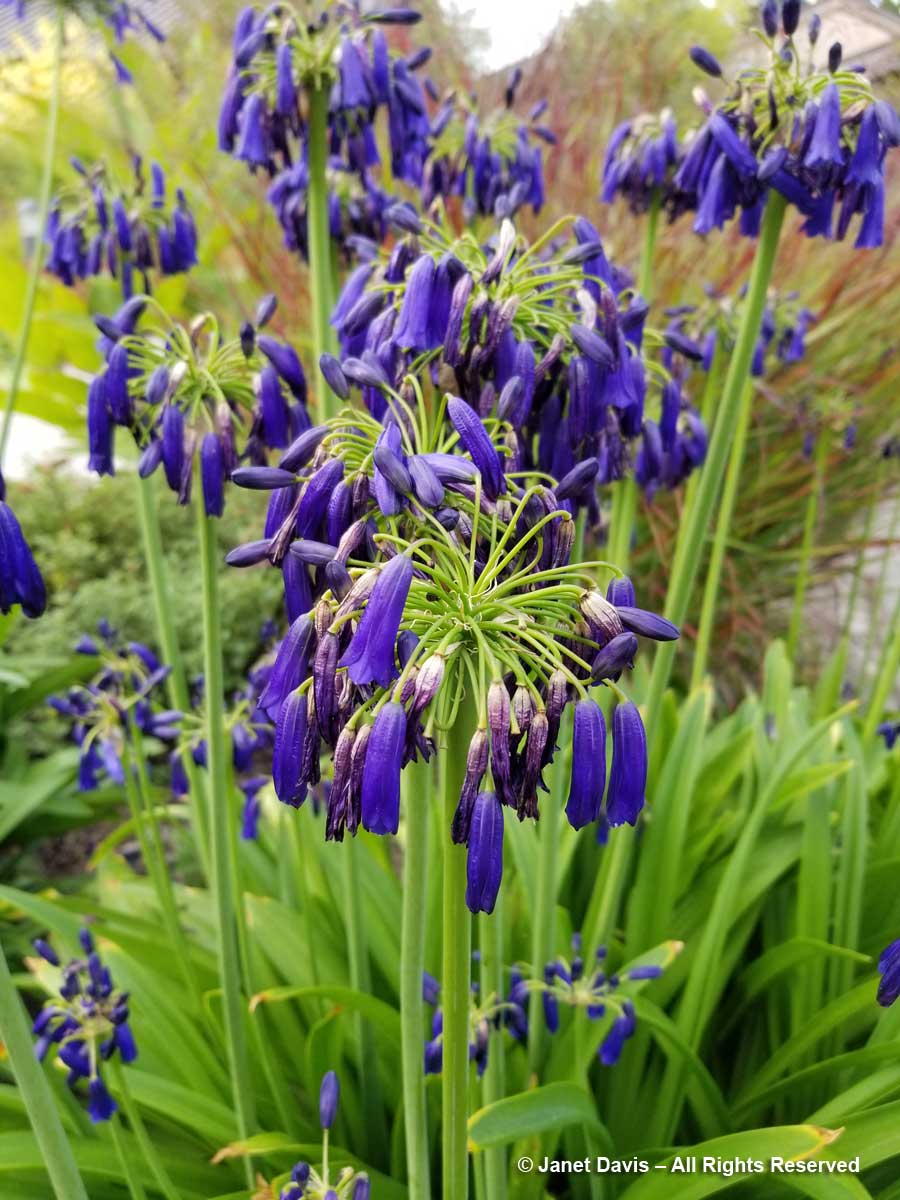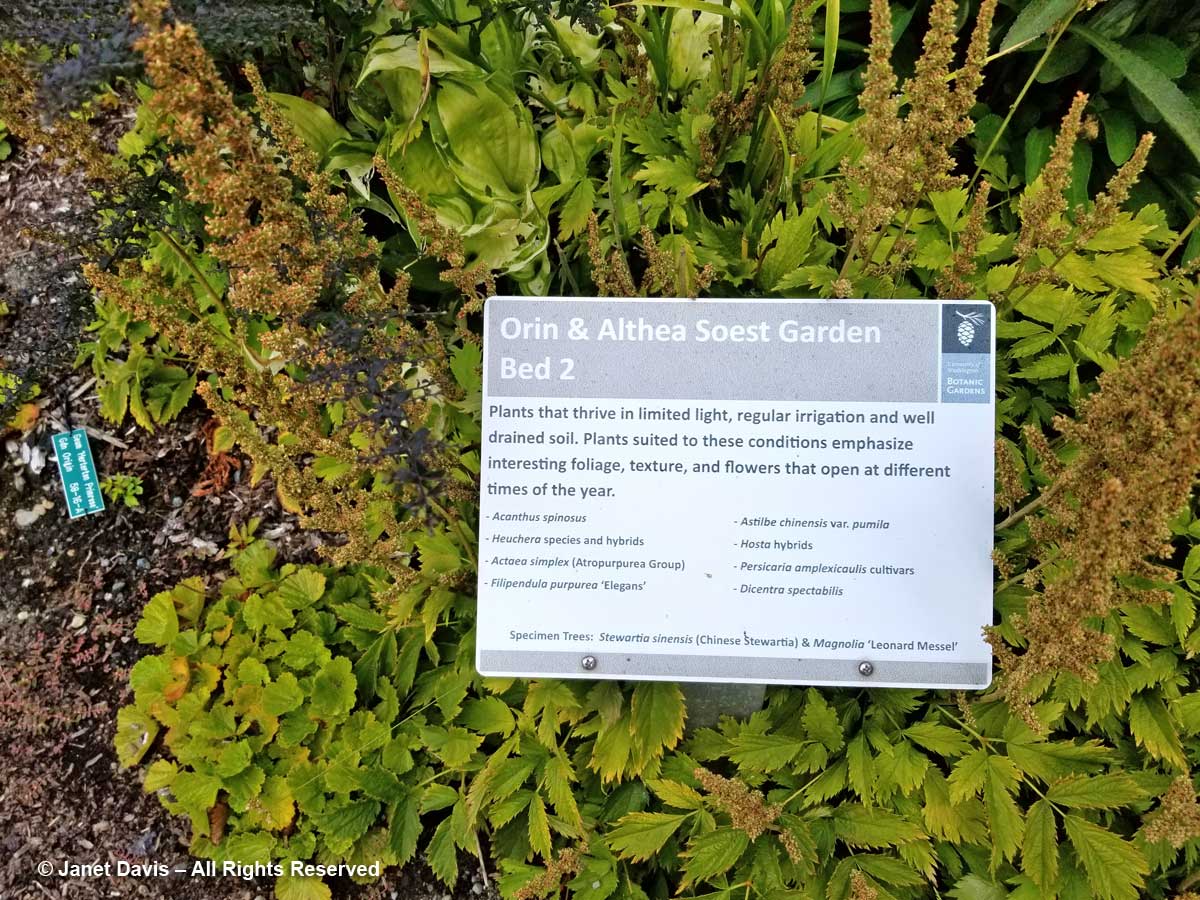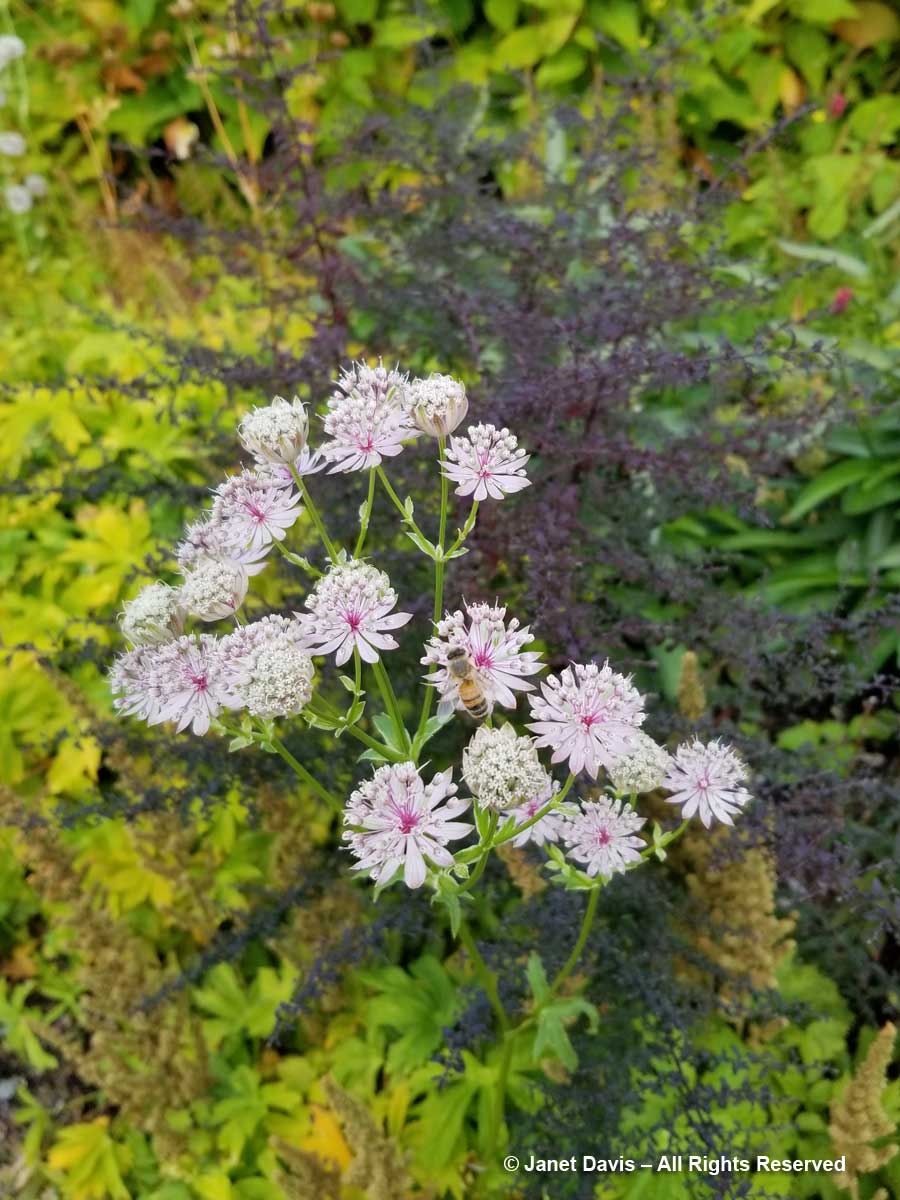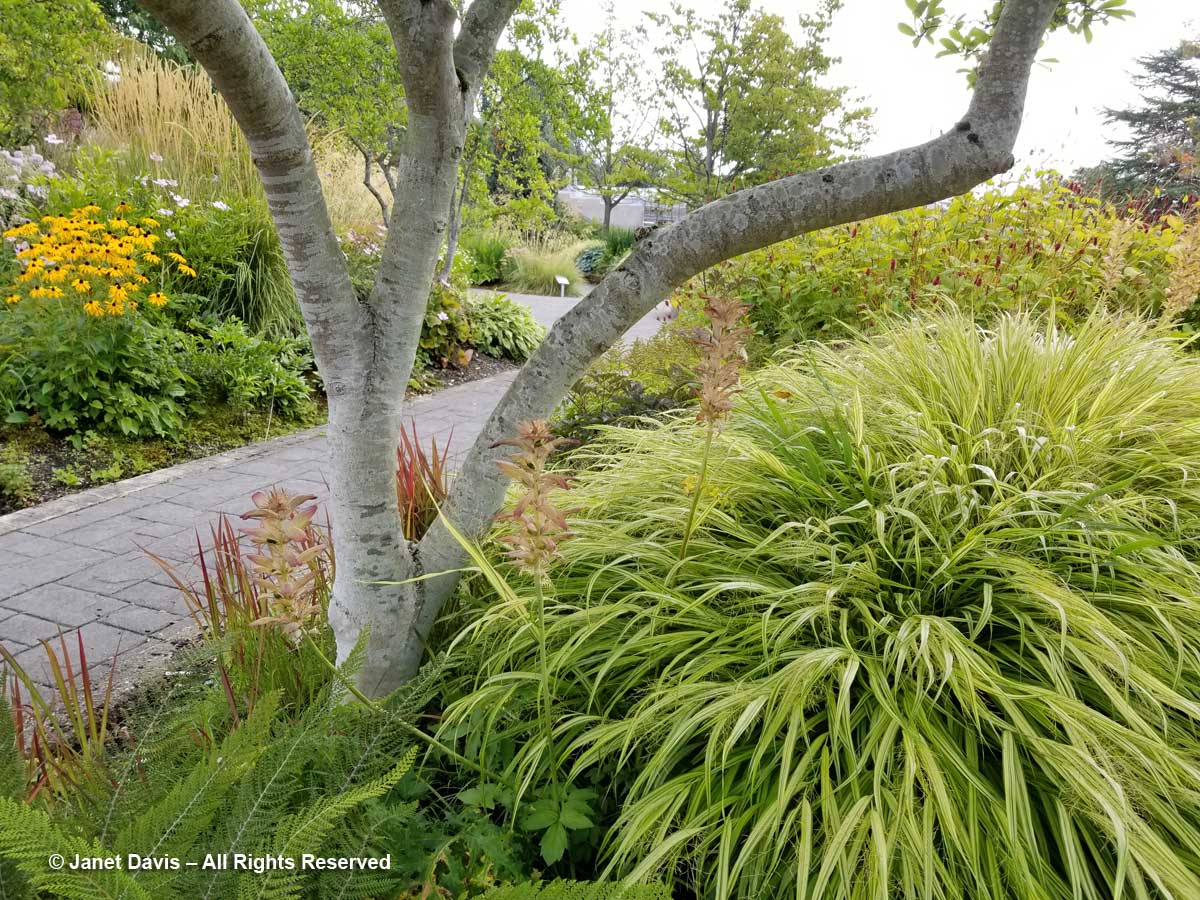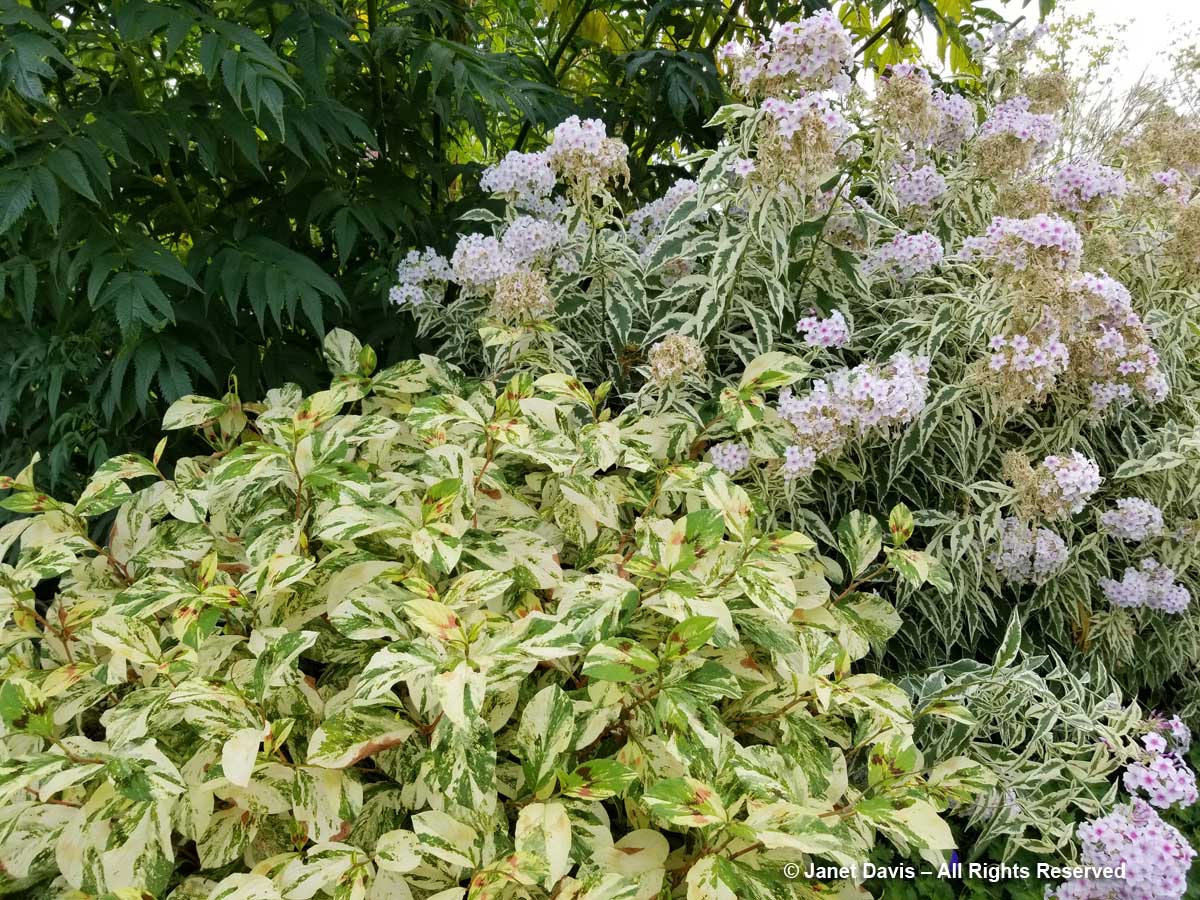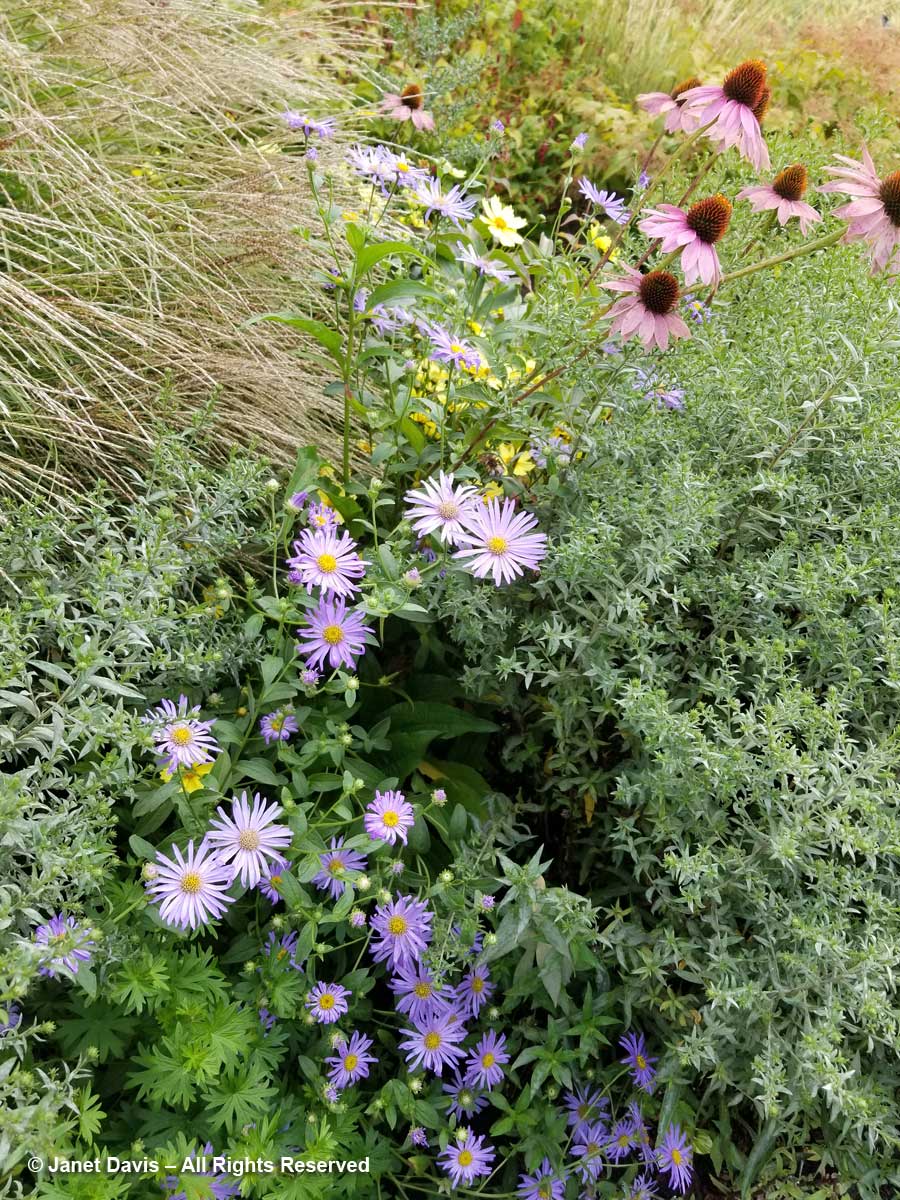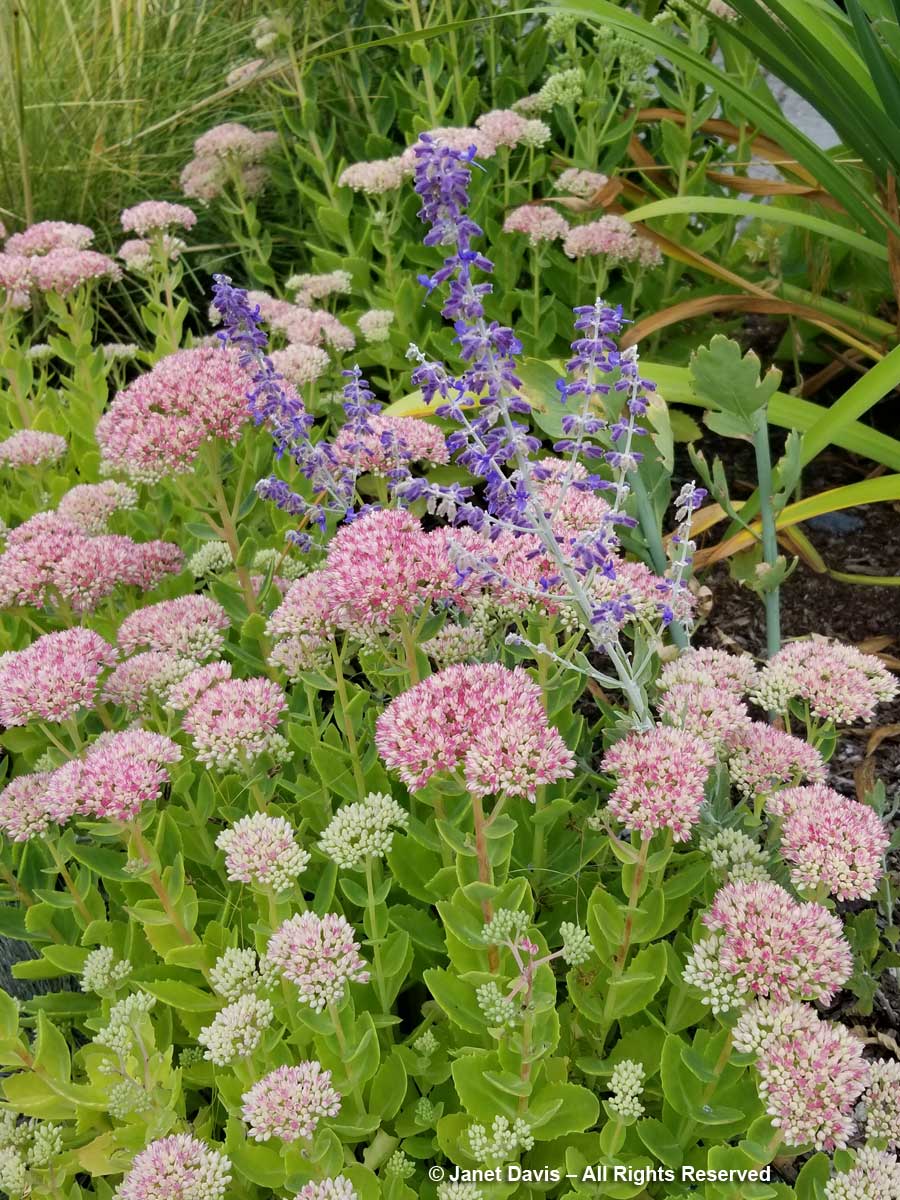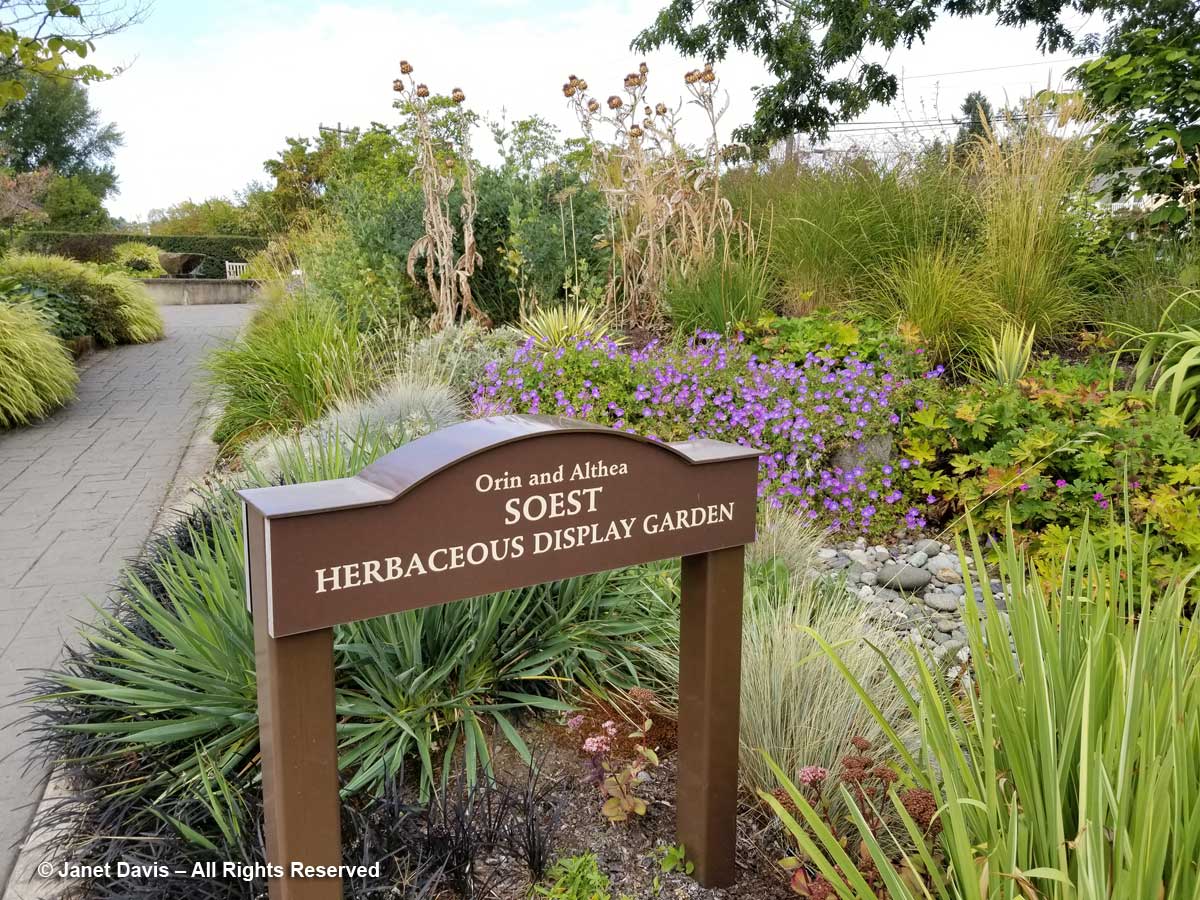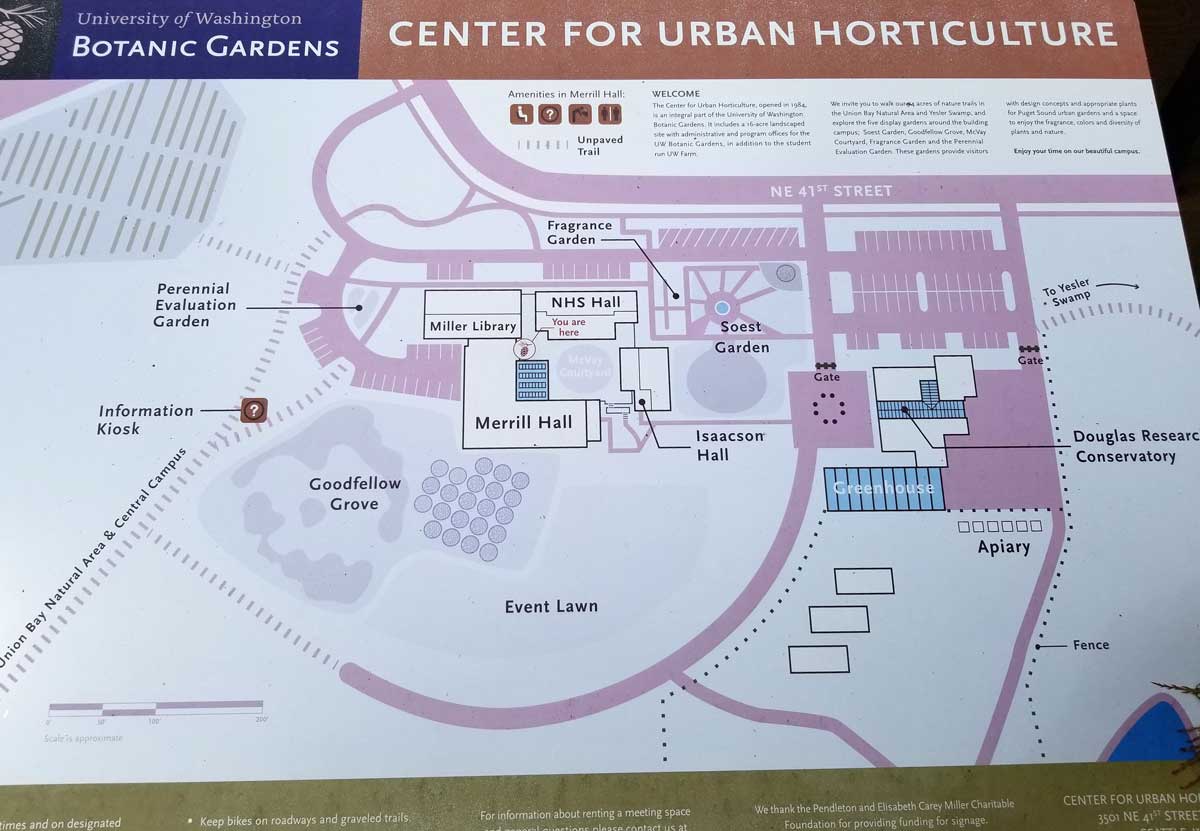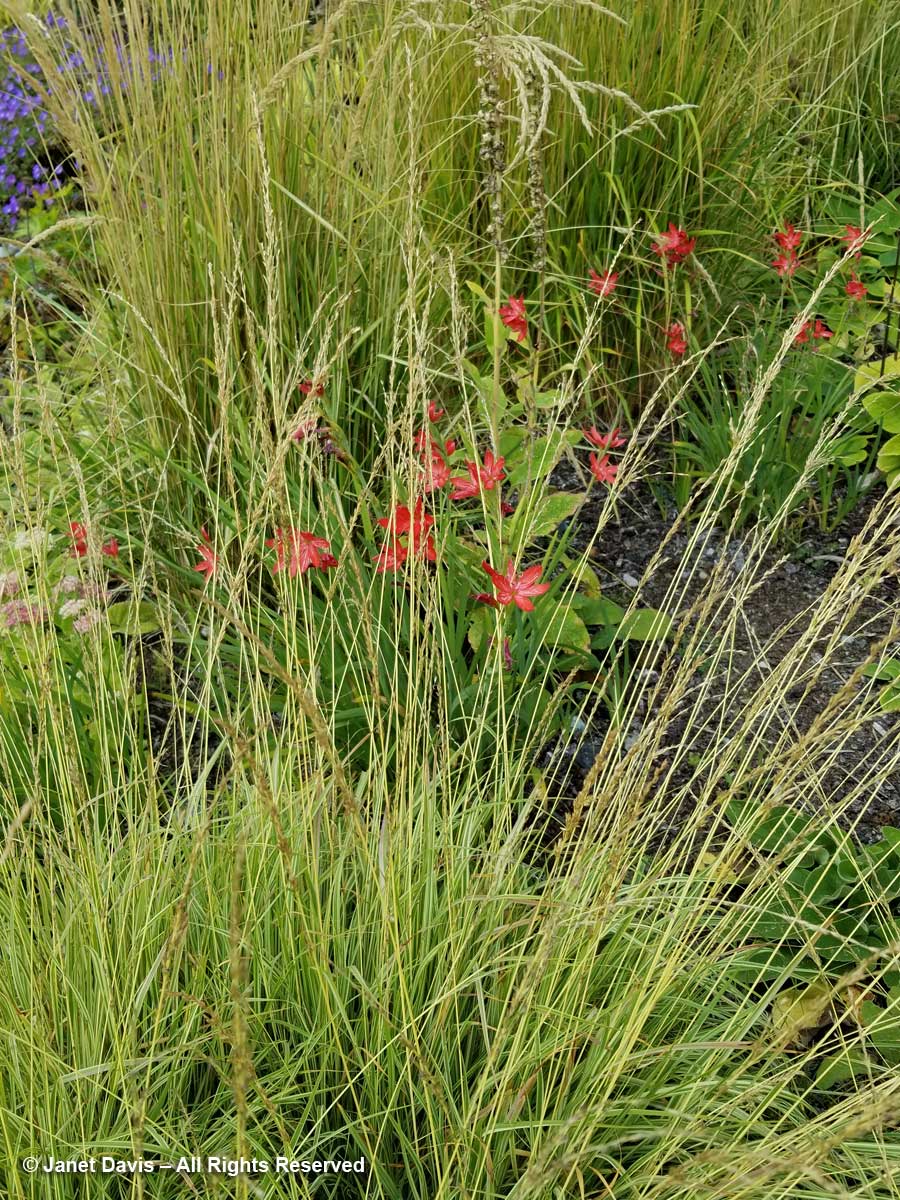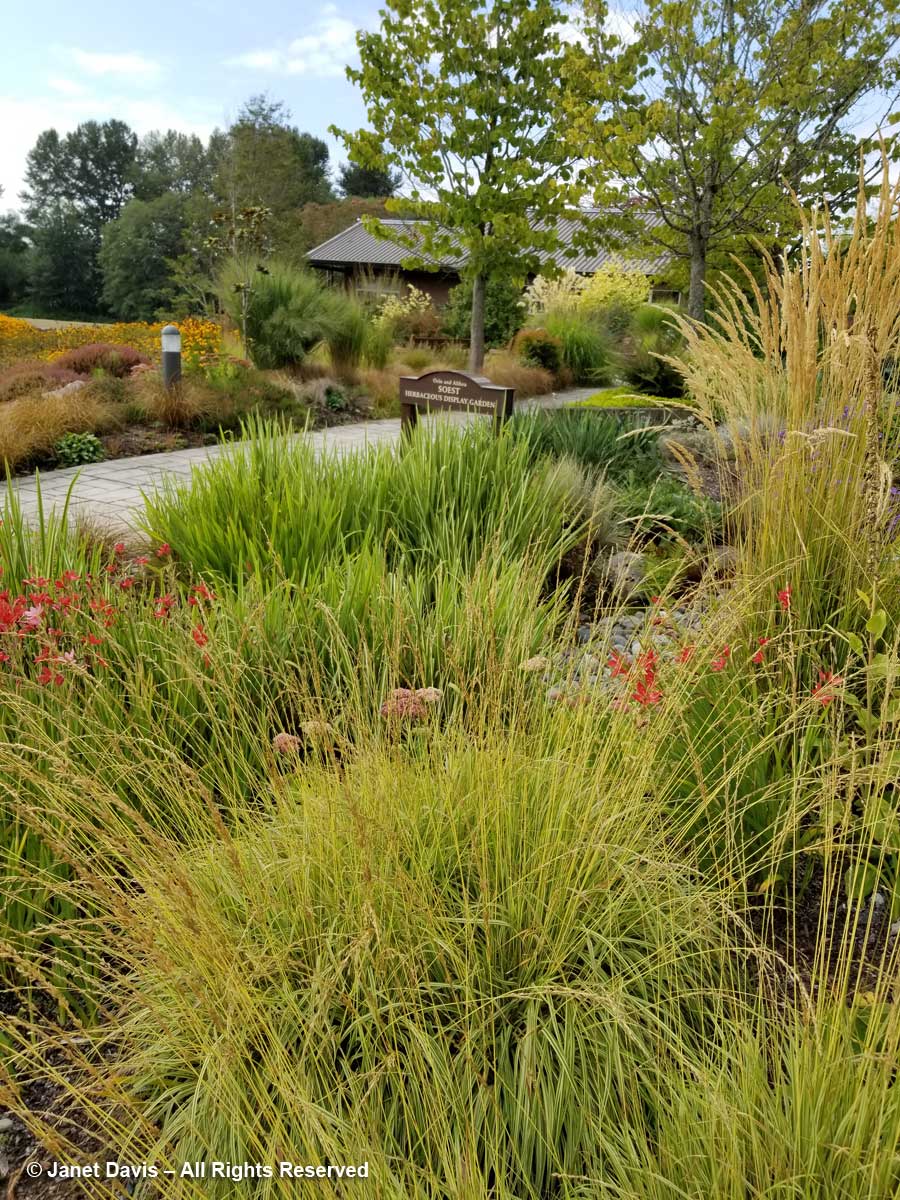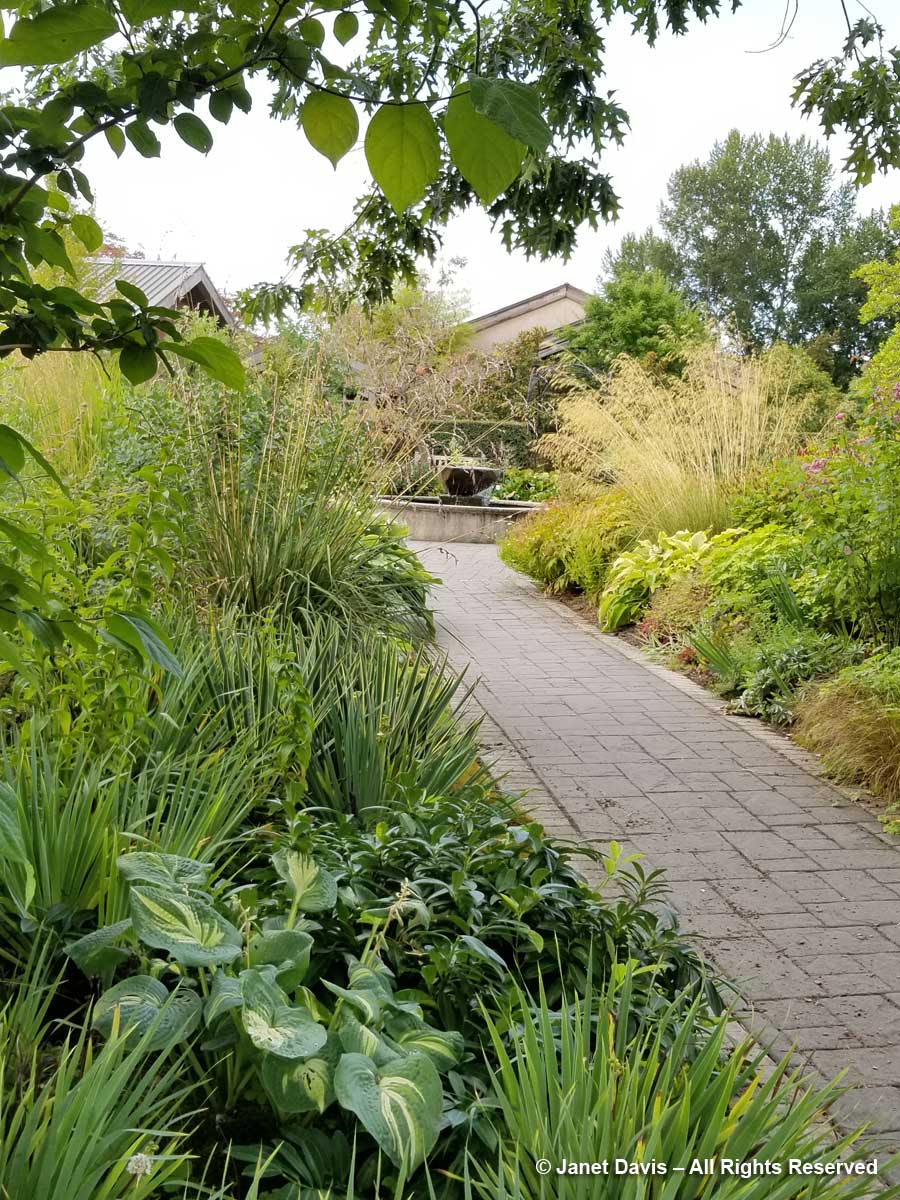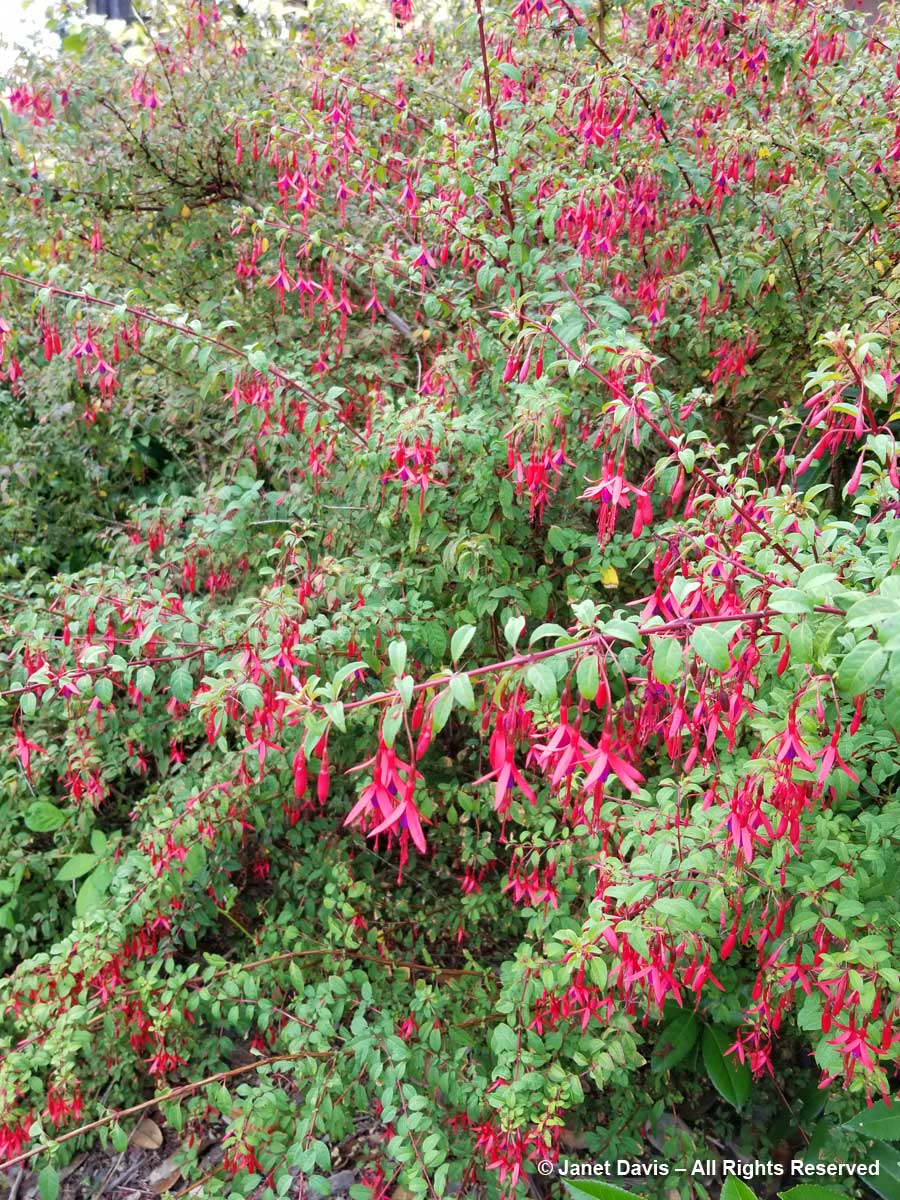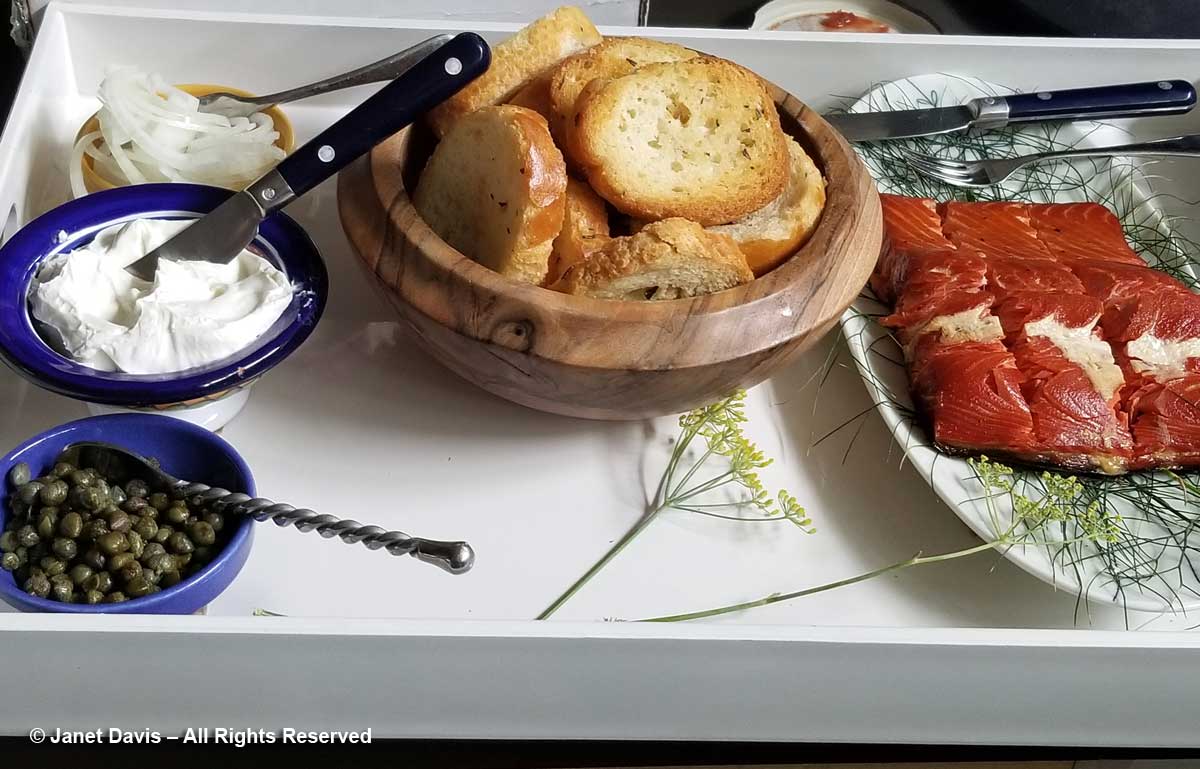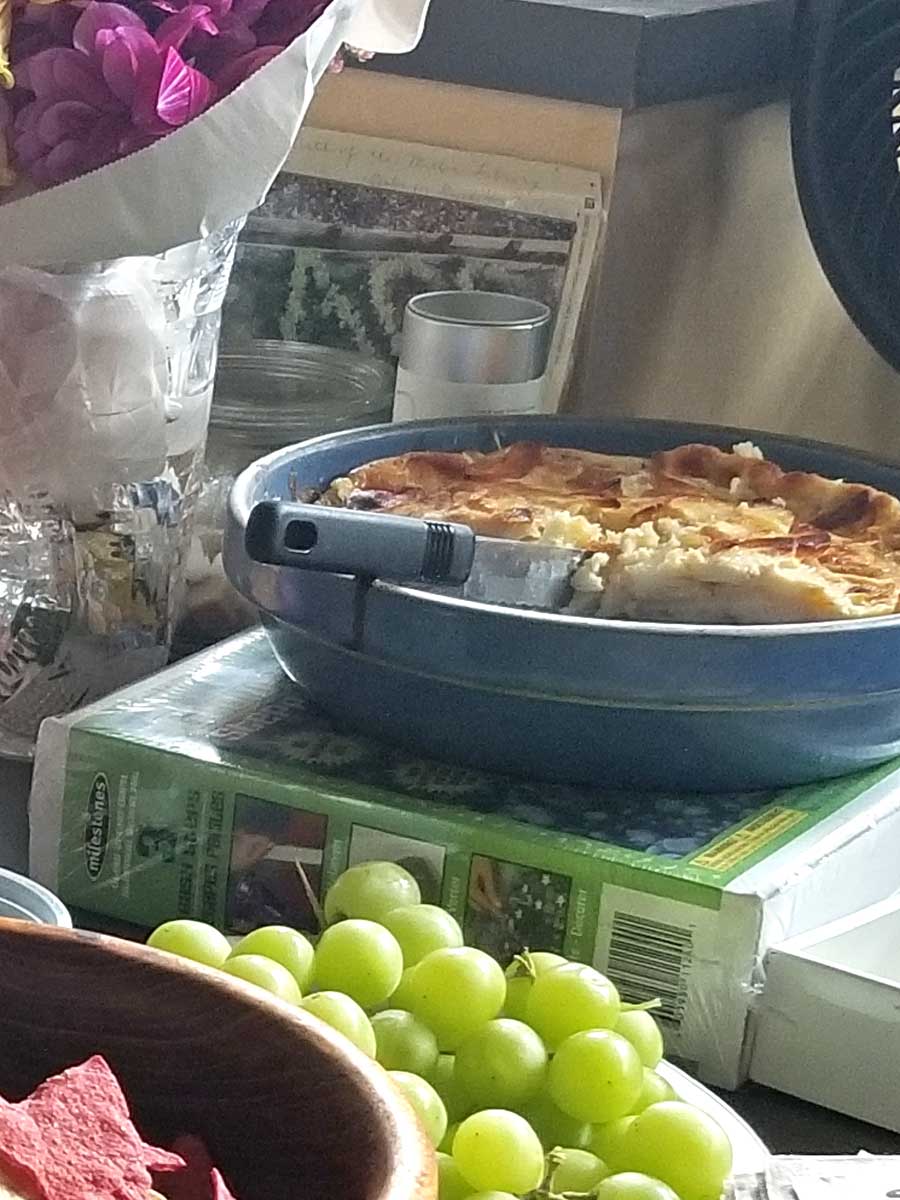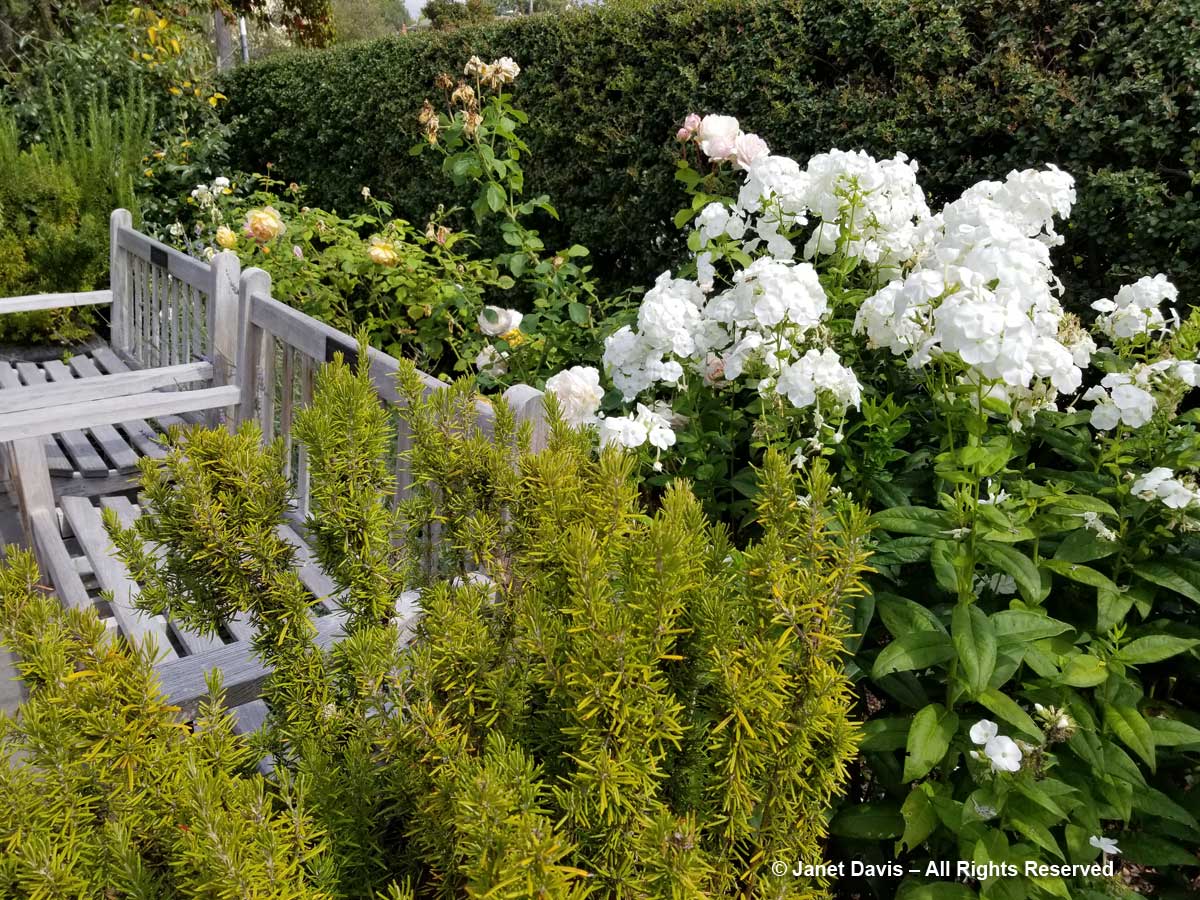Even before visiting Richard Hartlage’s luscious, eclectic garden in Seattle, I felt I’d known him for years. In fact, every time I turned a corner at the Toronto Botanical Garden in June, he was there in the beautiful flowers of the shrub that greeted me, Calycanthus x raulstonii ‘Hartlage Wine’.
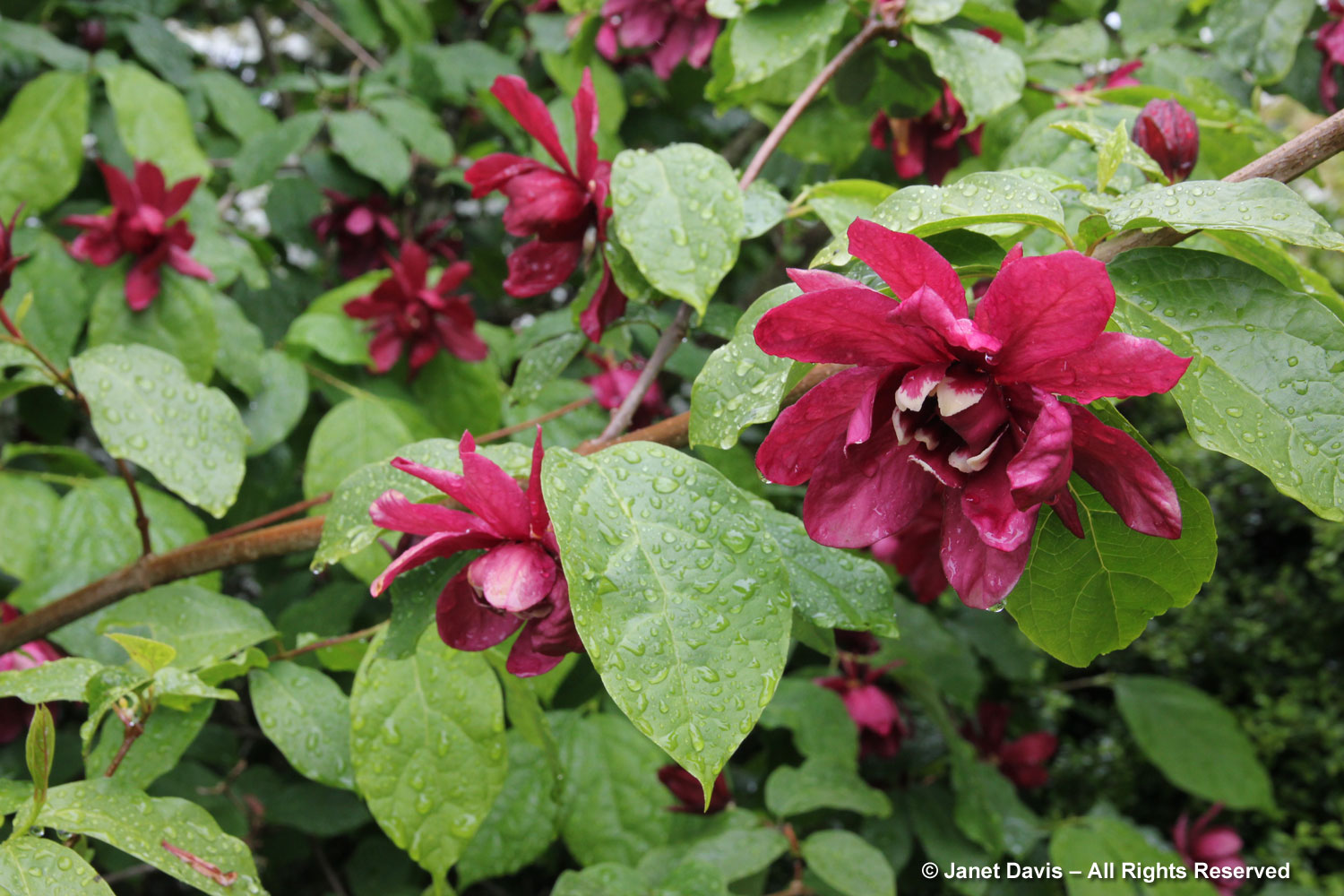
That plant was the result of a cross made by Richard Hartlage in 1991, while an undergrad student at North Carolina State University, between white-flowered Chinese sweetshrub Calycanthus chinensis with its large tepals and camellia-like blooms and the American native Carolina allspice C. floridus, with its strap-like tepals and strawberry-grapefruit scent. (At one time, it was considered a bigeneric cross, since the Chinese species, originally named Calycanthus chinensis in 1963 was renamed Sinocalycanthus in 1964, but in 1979 it was moved back into Calycanthus.) The hybrid name honours the late J.C. Raulston (1940-1996) who was then director of the NCSU Arboretum, later named the JC Raulston Arboretum. (I photographed C. chinensis at the Morris Arboretum in Philadelphia and C. floridus at the Royal Botanical Garden in Burlington, Ontario.)

A beautifully-rounded shrub, the flowers are sterile, so new plants must be made through layering or softwood cuttings. Though not as perfumed as Carolina allspice, ‘Hartlage Wine’ has a slight fragrance. The leathery leaves turn yellow in fall.
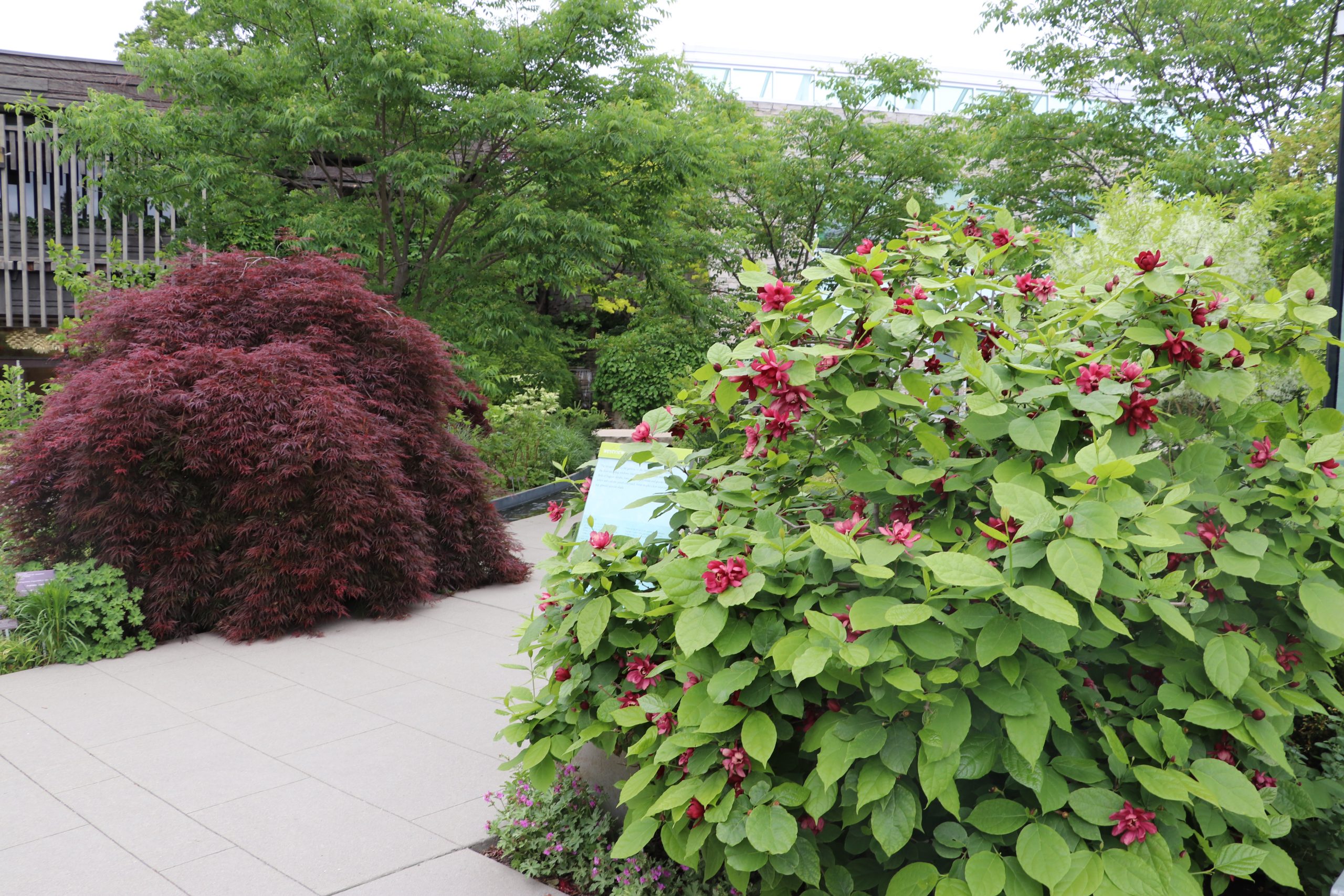
More than 30 years later, Richard Hartlage is still in love with plants of all kinds. That much was clear, arriving at his house, below, in the Montake area of Seattle as I did this July with my fellow gardeners on our annual Garden Fling. He calls his house colour ‘vermilion’ and I love it; there is much-too-much conformity and conservatism in the world of exterior colour choices. (I read in a Seattle Times story by Lorene Edwards Forkner that the hue is echoed in a massive spring tulip display.) An indigo-purple portico with a bold street number frames the front door. And those steps? Chunky granite slabs, then aluminum tread!

Who’s heard of using aluminum in a residential setting? So it’s clear that there’s an innovative hardscaping mind at work here, even as the diverse plant palette suggests someone who is enamored with flora, fragrance… and fun.
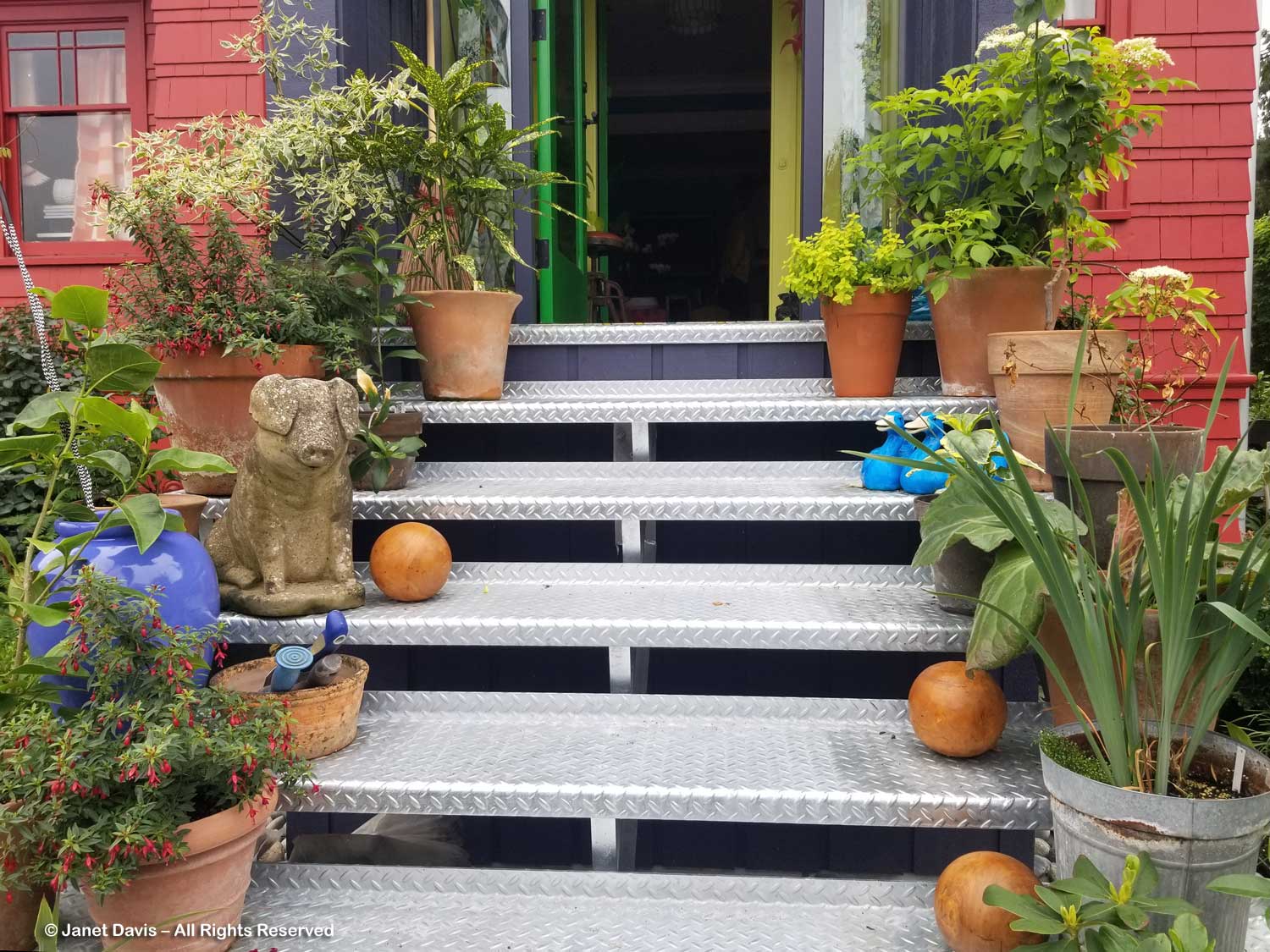
And, of course, as the CEO and President of the 12-person design firm (not counting his 4 schanuzers) Land Morphology, Hartlage’s home garden is his experimental laboratory. His history in gardening and design is deep. In the late 80s, he was plant propagator at North Carolina’s famous Montrose Garden, followed by stints at other NC gardens. He was Morris County Parks Commissioner in Morristown New Jersey in charge of two arboretums before moving to Seattle in 1996 to become Director/Curator of the Elisabeth C. Miller Botanical Garden, where he introduced the Great Plant Picks program during his 7-year tenure there. Beginning in 2003, he spent 10 years with the large design/engineering firm AHBL as an associate principle managing the landscape architecture group before launching Land Morphology in 2013. Projects include numerous residential designs (including Stephen Colbert and other New Jersey clients like the Mountsier Estate); Chihuly Garden and Glass in Seattle; the new Herb Garden at the Brooklyn Botanic Garden; and a new Castle Garden at Yew Dell Botanical Garden down the street from Hartlage’s Crestwood, Kentucky childhood home. Just completed is the impressive planting design for Seattle’s new 26-block Waterfront Park, in collaboration with architect Field Operations (High Line-NY, Navy Pier-Chicago), featuring more than 124,000 plants representing over 500 varieties of natives and ornamentals.
A few months after our visit, there were railings on those aluminum stairs above and an airy, iron arbor over the upper walkway (more vertical gardening opportunity) – topped by heraldic schnauzers in the place of lions!
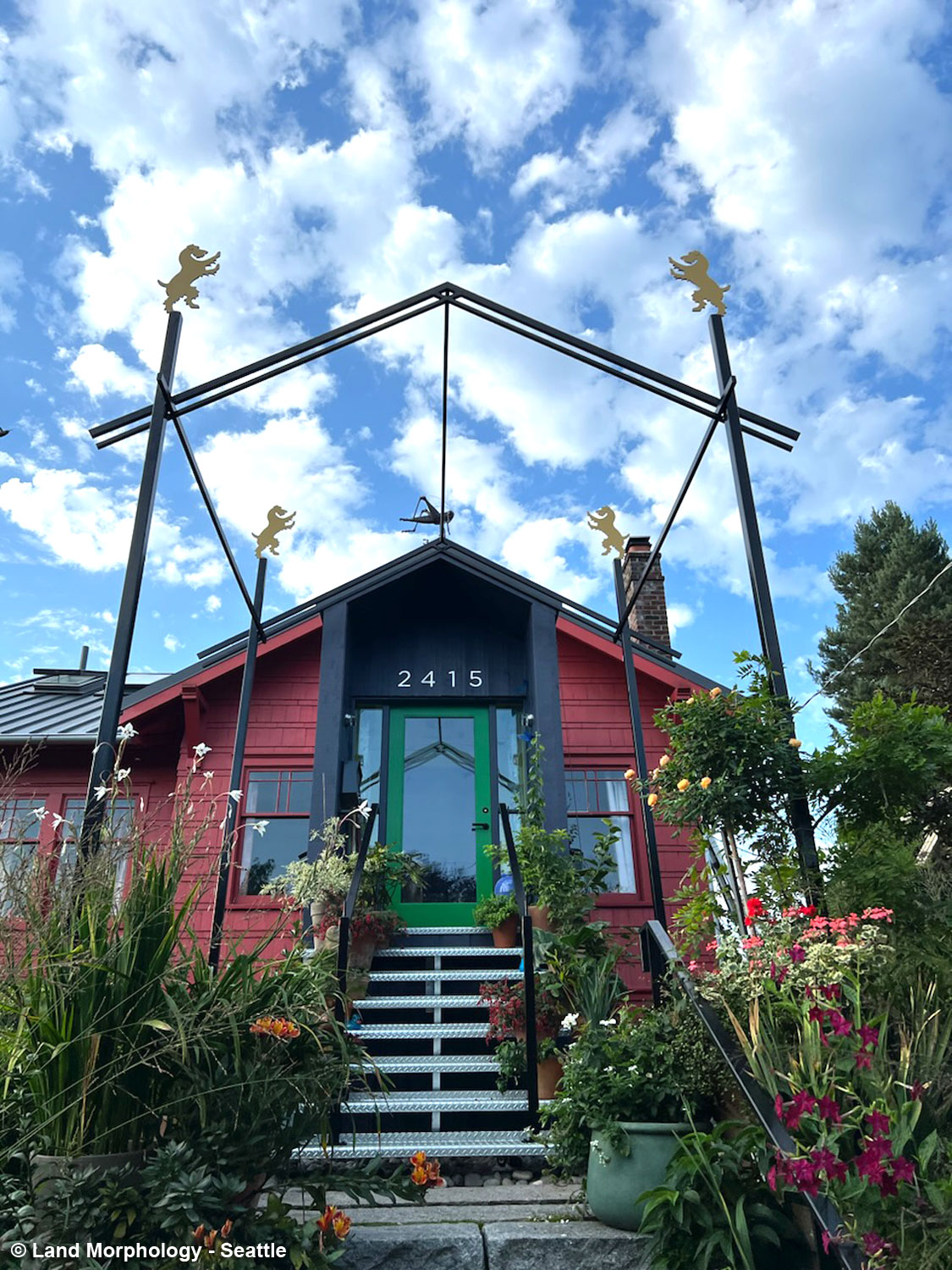
Richard’s beloved schnauzers have been worked into the back garden’s design as well!

Back to my July visit now, on either side of the steps that lead to the house on the steeply-sloped property is a serpentine hedge of Korean boxwood (Buxus sinica var. insularis ‘Wintergreen’). Suffice to say I’ve photographed countless boxwood hedges over the decades – including the spectacular potager at France’s Villandry – but this is the only one I’ve seen that meanders like an undulating green paintbrush across a slope. In its midst are lilies, alliums, ornamental grasses, persicaria and perennial geranium.
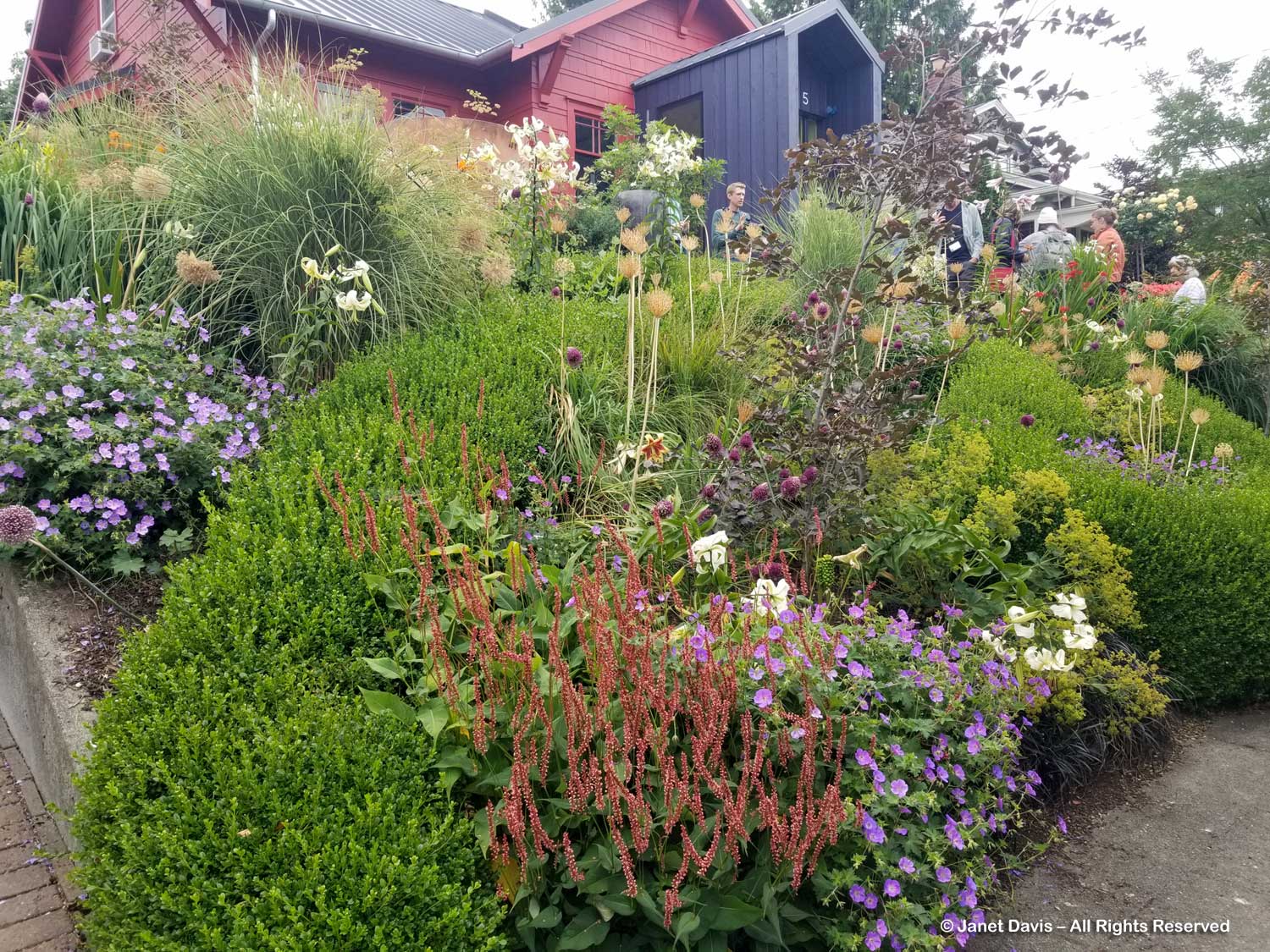
Small matching trees emerge from the serpentine hedge.
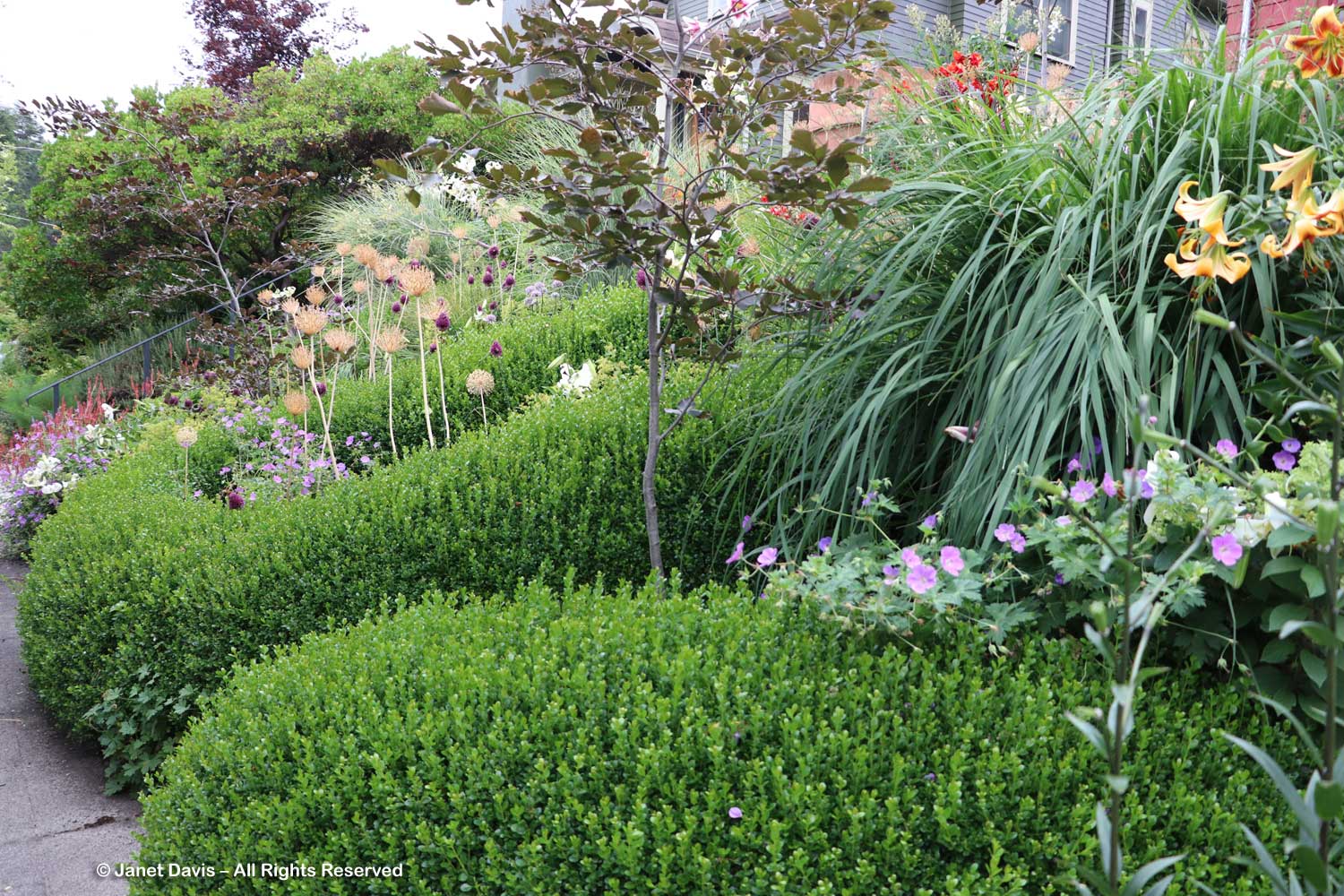
Spent allium seedheads are left to create texture and interest, along with deep-purple drumstick alliums (A. sphaerocephalon).

Scented lilies, alstroemeria and hydrangeas are part of the summer plant palette, along with perfumed Gladiolus murielae in the clay pot.
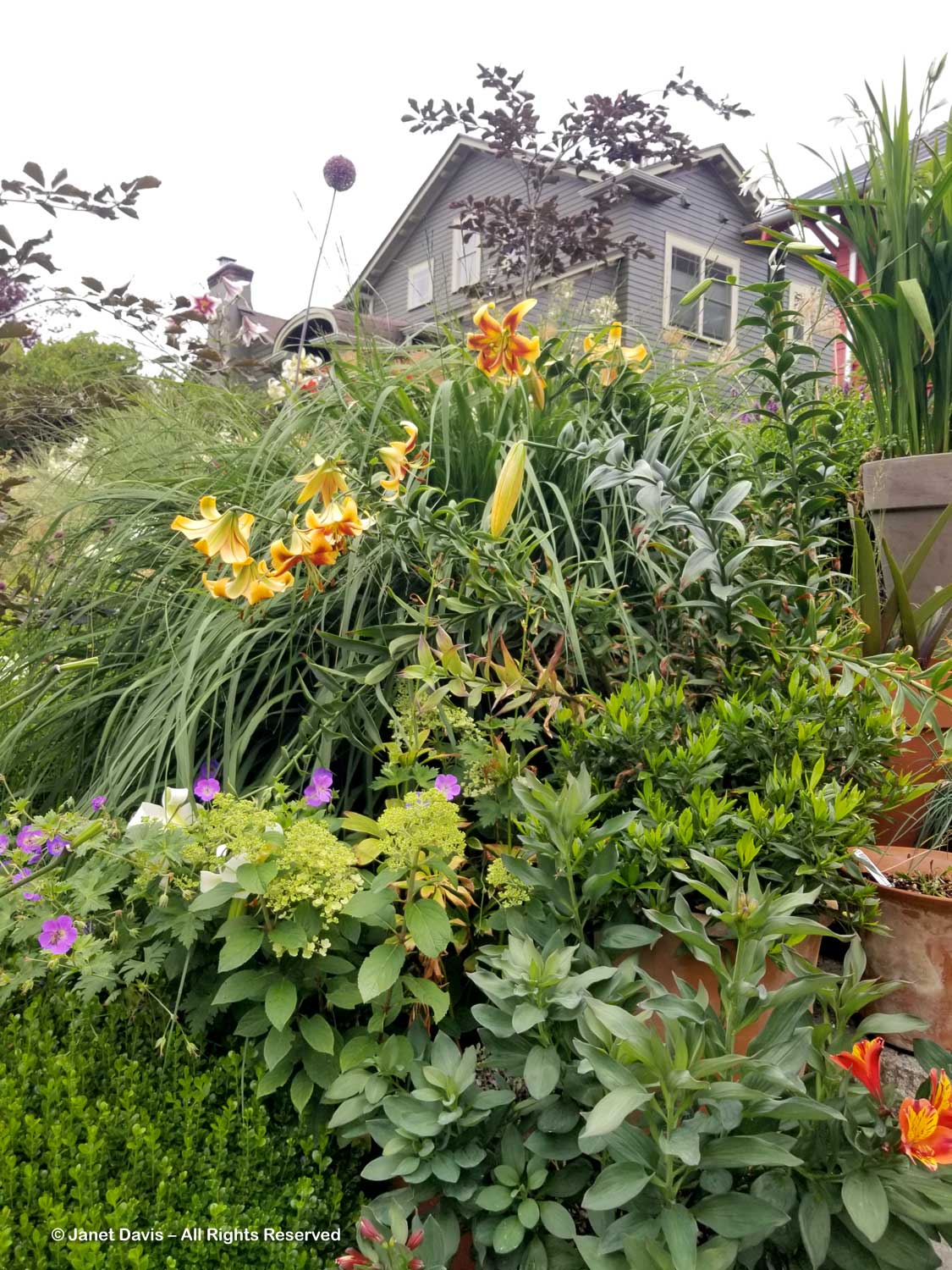
A spectacular lily that might be the Orienpet (Oriental x Trumpet) hybrid ‘Debby’.
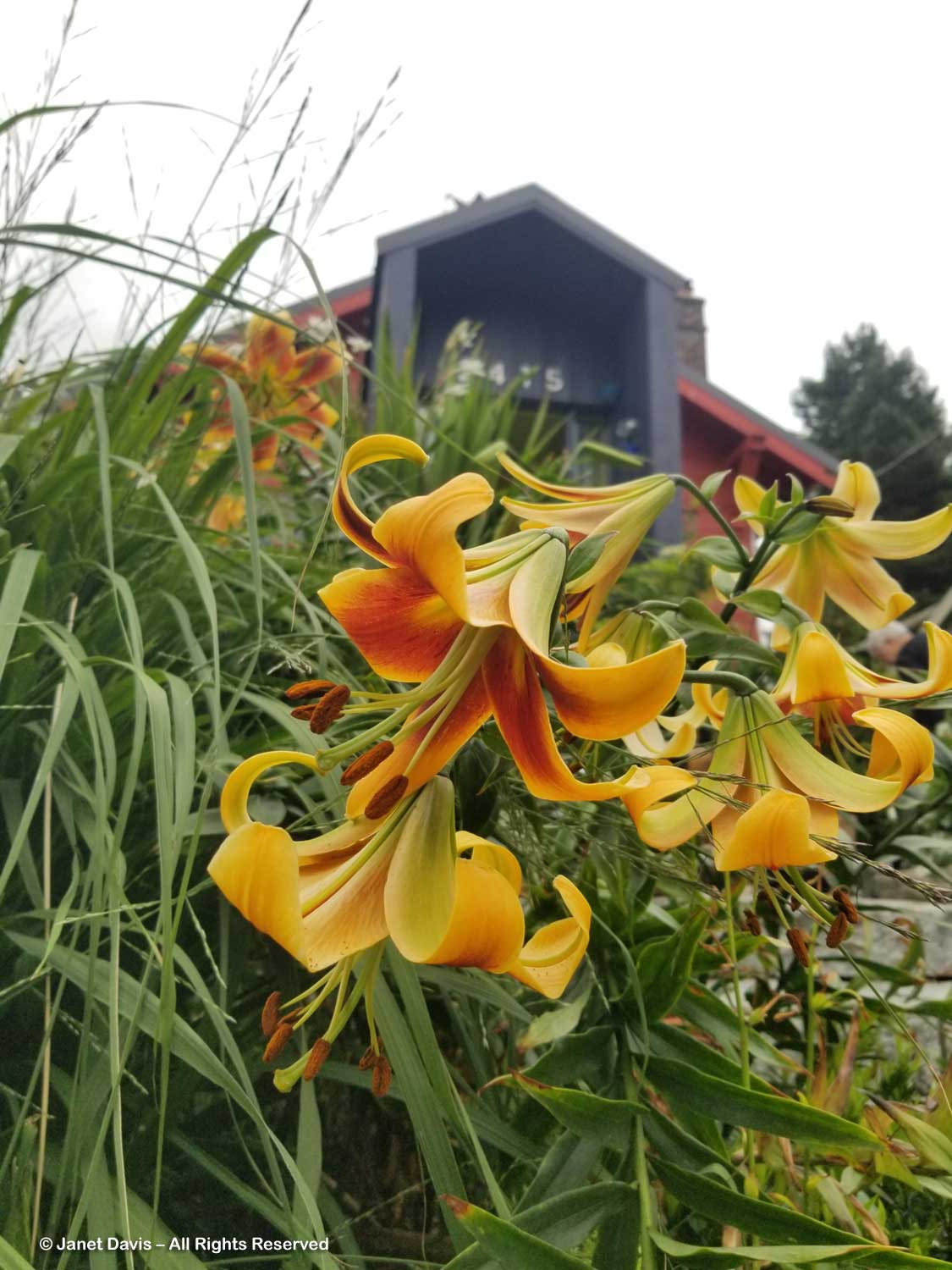
A massive terracotta pot serves as focal point on the slope terrace.

Spears of gladiolus pop up here and there. These ones look like direct descendants of G. dalenii.
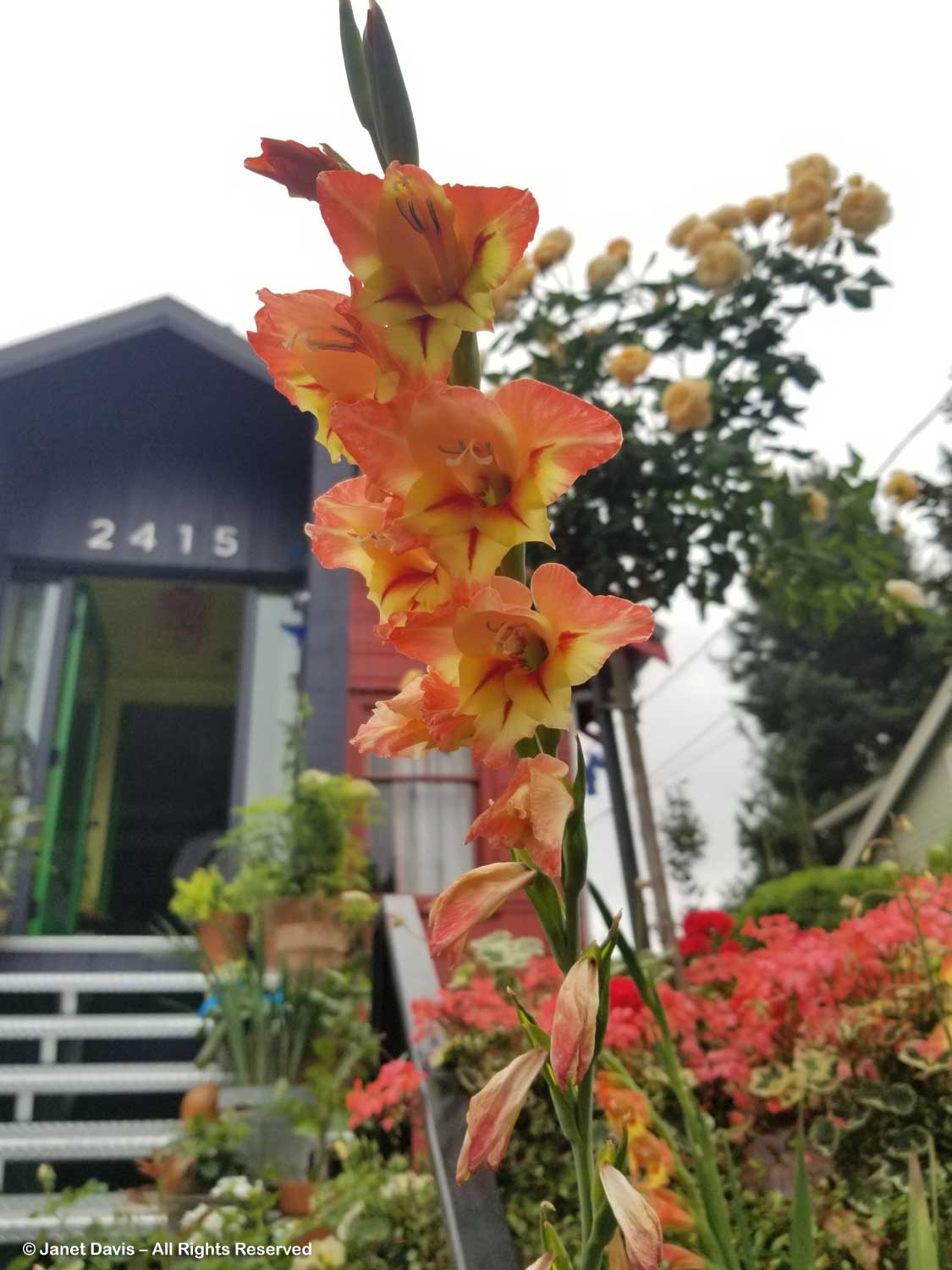
Luscious, light-blue mophead hydrangeas (H. macrophylla) partner with Taiwanese schefflera (Heptapleurum taiwanianum) and lilies in front of the house.

The bracts on this dogwood were still beautiful.

The back garden, though small, was filled to the gills with interesting and textural plants, myriad containers, whimsical furnishings…. and loads of people! So if my photos tend to be vignettes, be assured that the overall view was fabulous. I noticed that metal grid screens and hanging basket frames seemed to be occuping an aerial dimension – in part, perhaps, to screen out the view of neighbours.
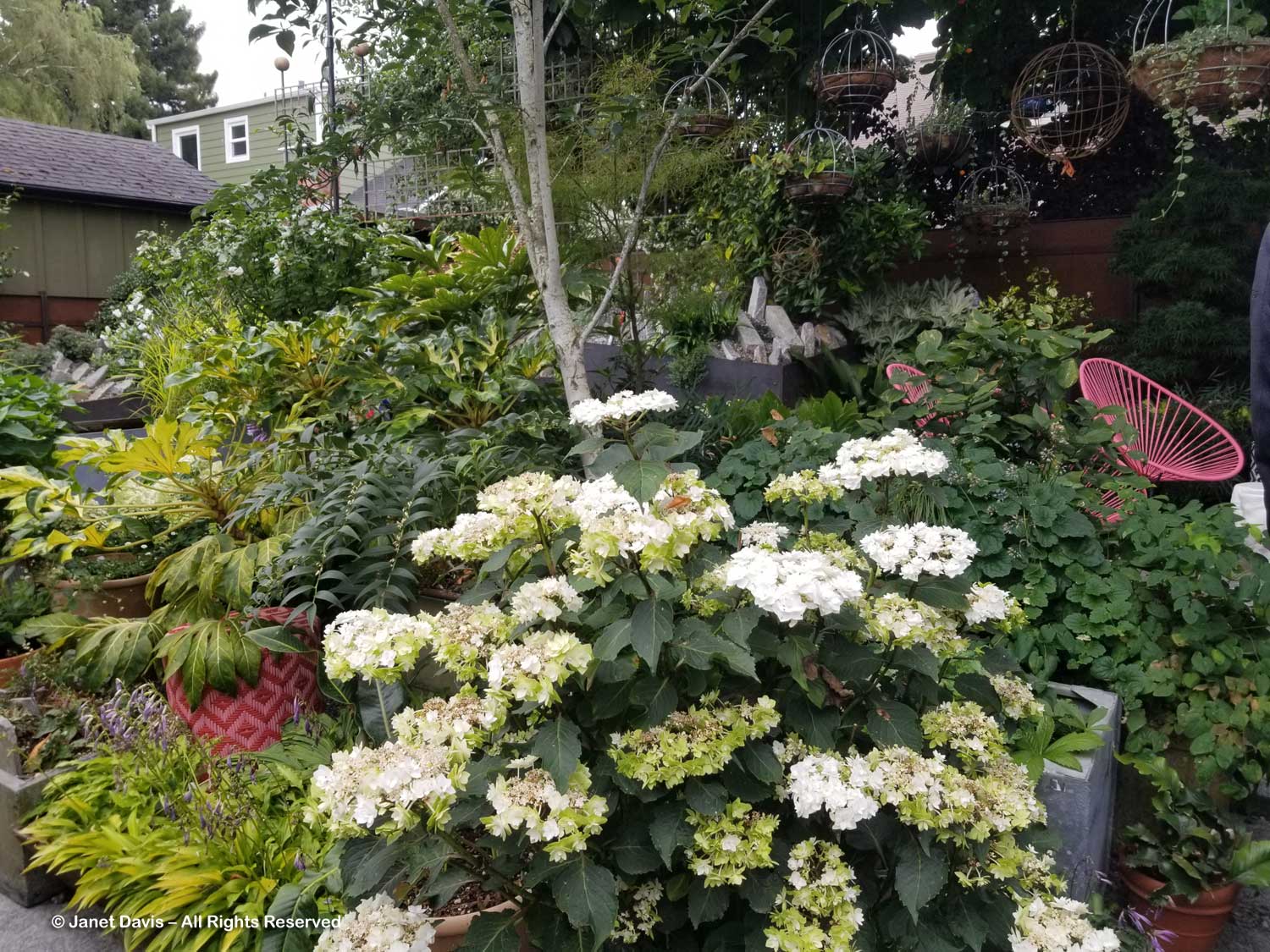
As someone who has painted her neighbour’s property-line garage wall (with permission) to become her own garden backdrop, I liked that the same arrangement seems to have happened here, with interesting materials. And amidst myriad containers, an attractive rectangular trough brings the reflective magic of water to the garden, including waterlilies and….

…. a retro spring-rider playground duck configured as a fountain peeking out of the sedges and rushes!
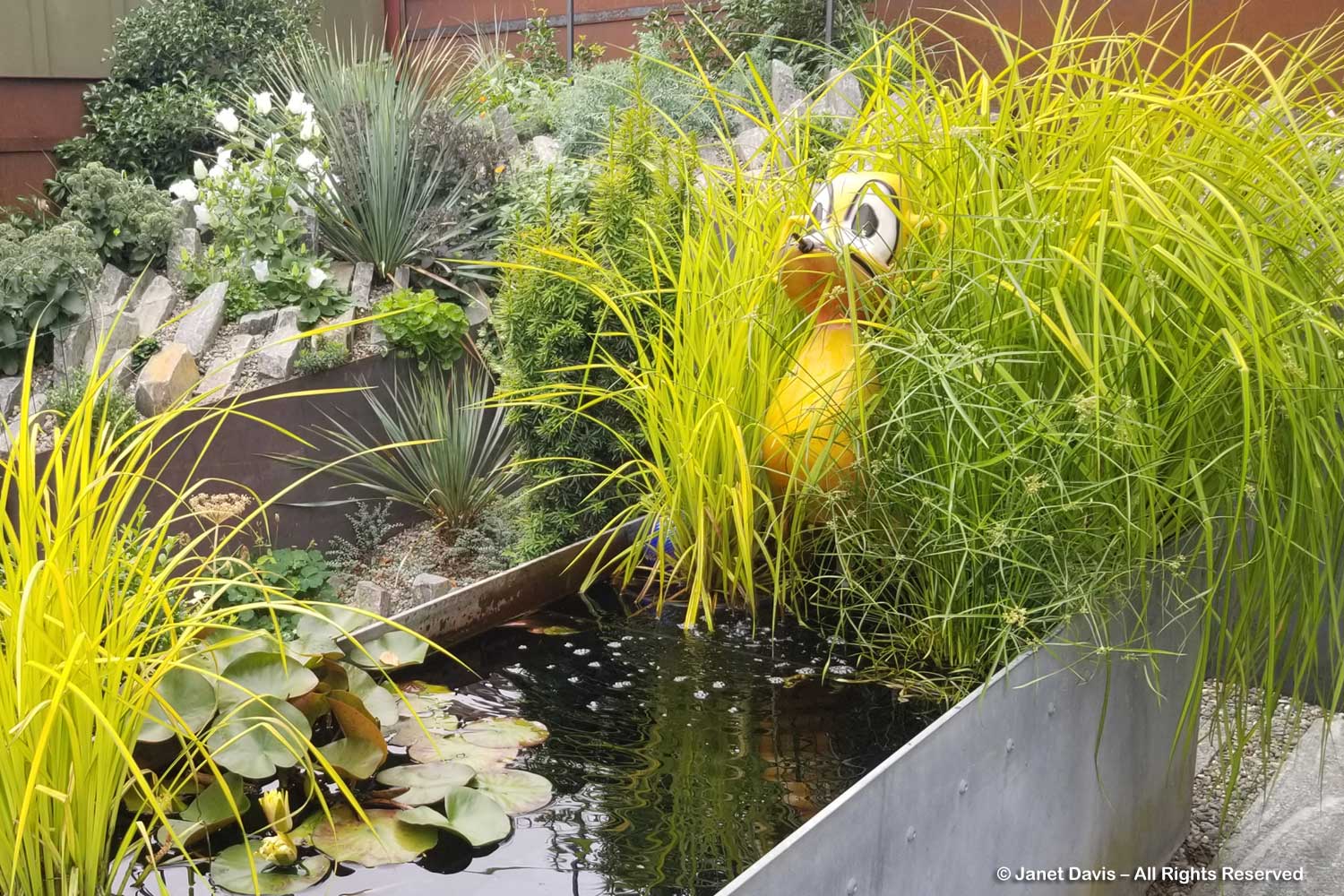
Nearby is a spring rider seahorse, its platinum finish reminding me of the silvery Adonis mannequin in Andrew Bunting’s Swarthmore garden which I wrote about last year. The hardscape in the Hartlage back garden is a mixture of rectangular granite pavers and grit forming walkways amidst planting beds and containers crammed with plants of all kinds.
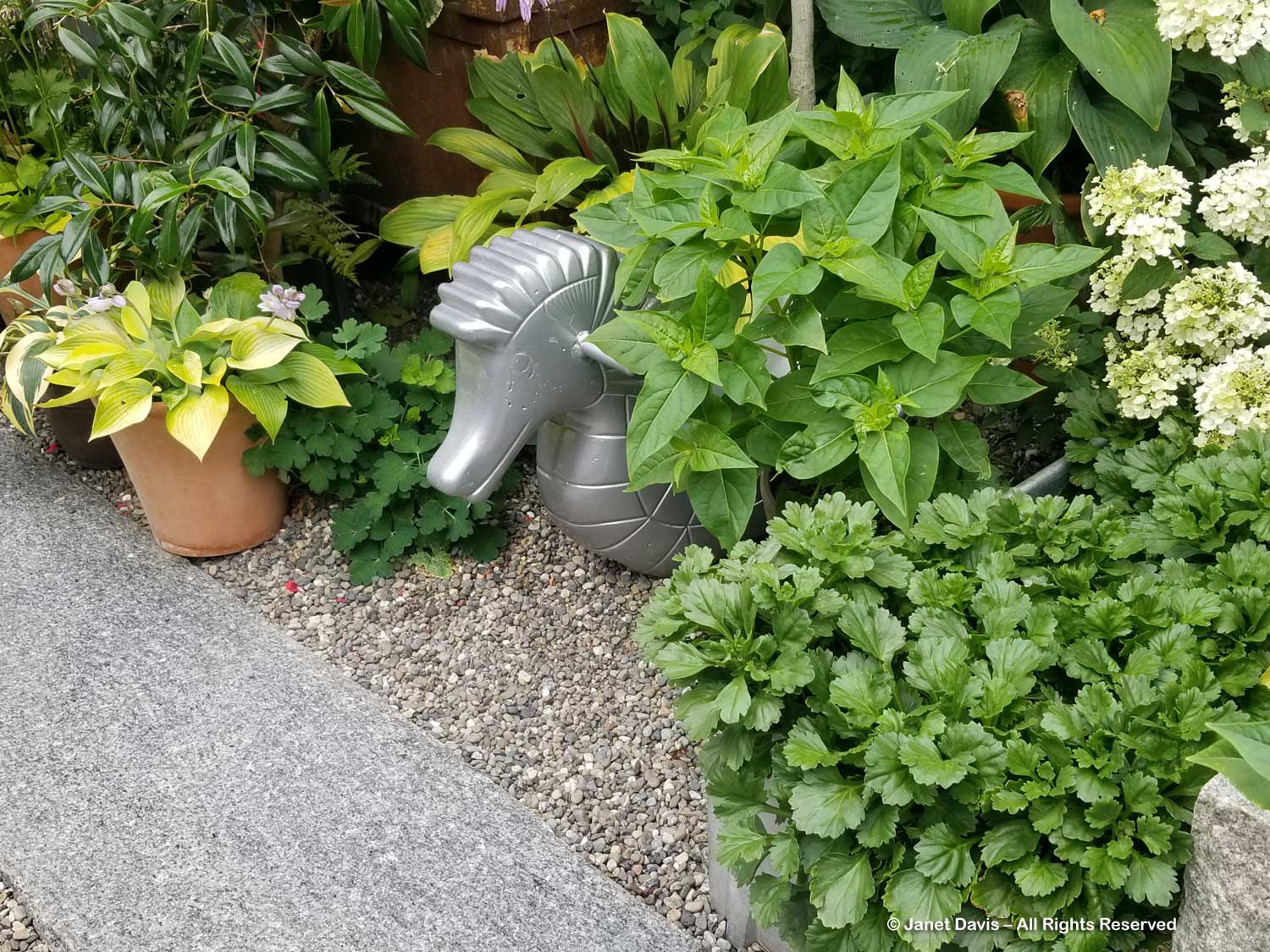
And a crevice garden! I’ve photographed the crevice garden in the back of Carol Shinn’s Fort Collins, Colorado garden and Zdeněk Zvolánek’s masterpiece for the Montreal Botanical Garden but a Corten container crevice garden was new to me, and quite wonderful.
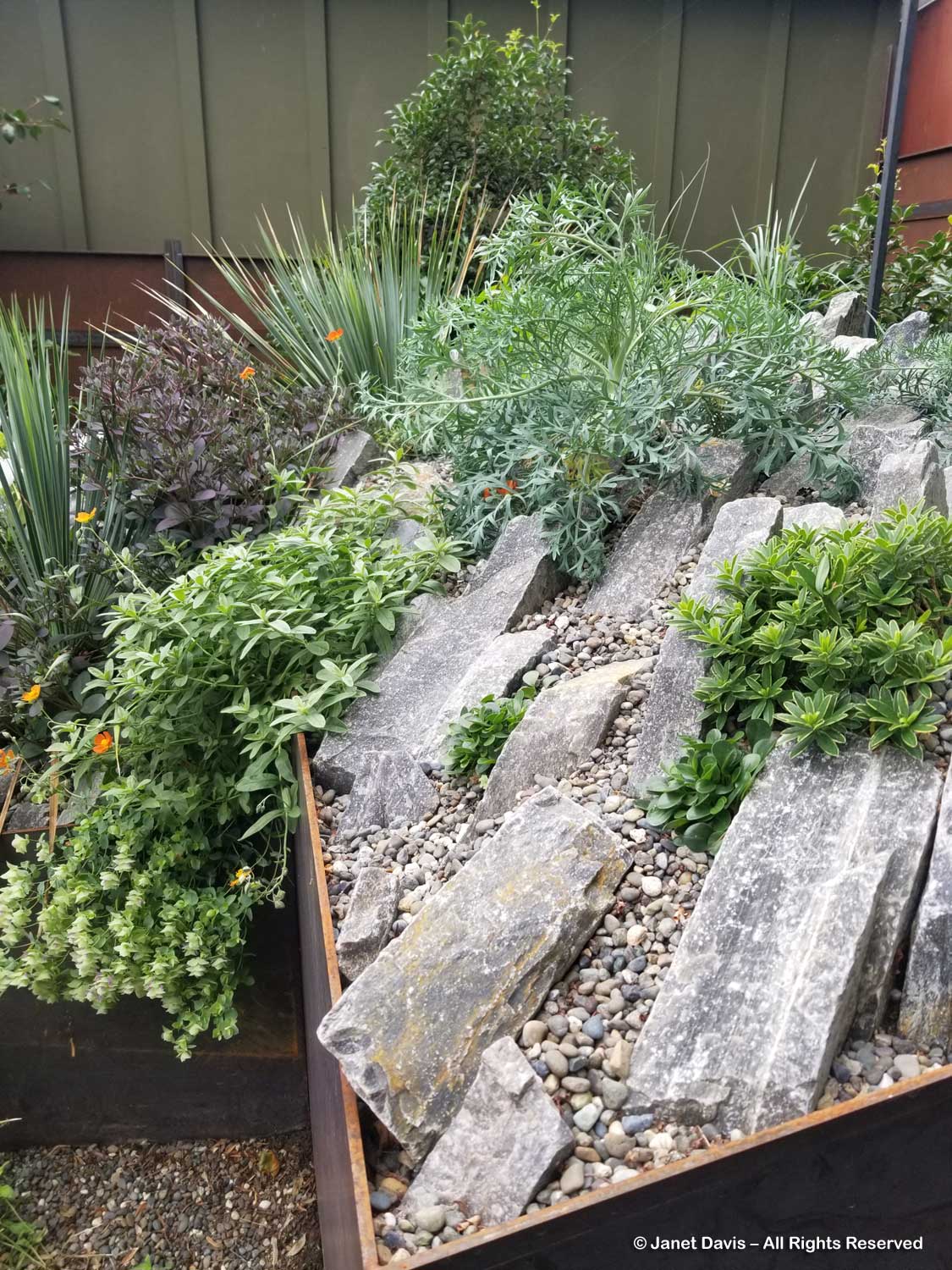
Yuccas mix with sedums and an interesting campanula, possibly C. incurva?
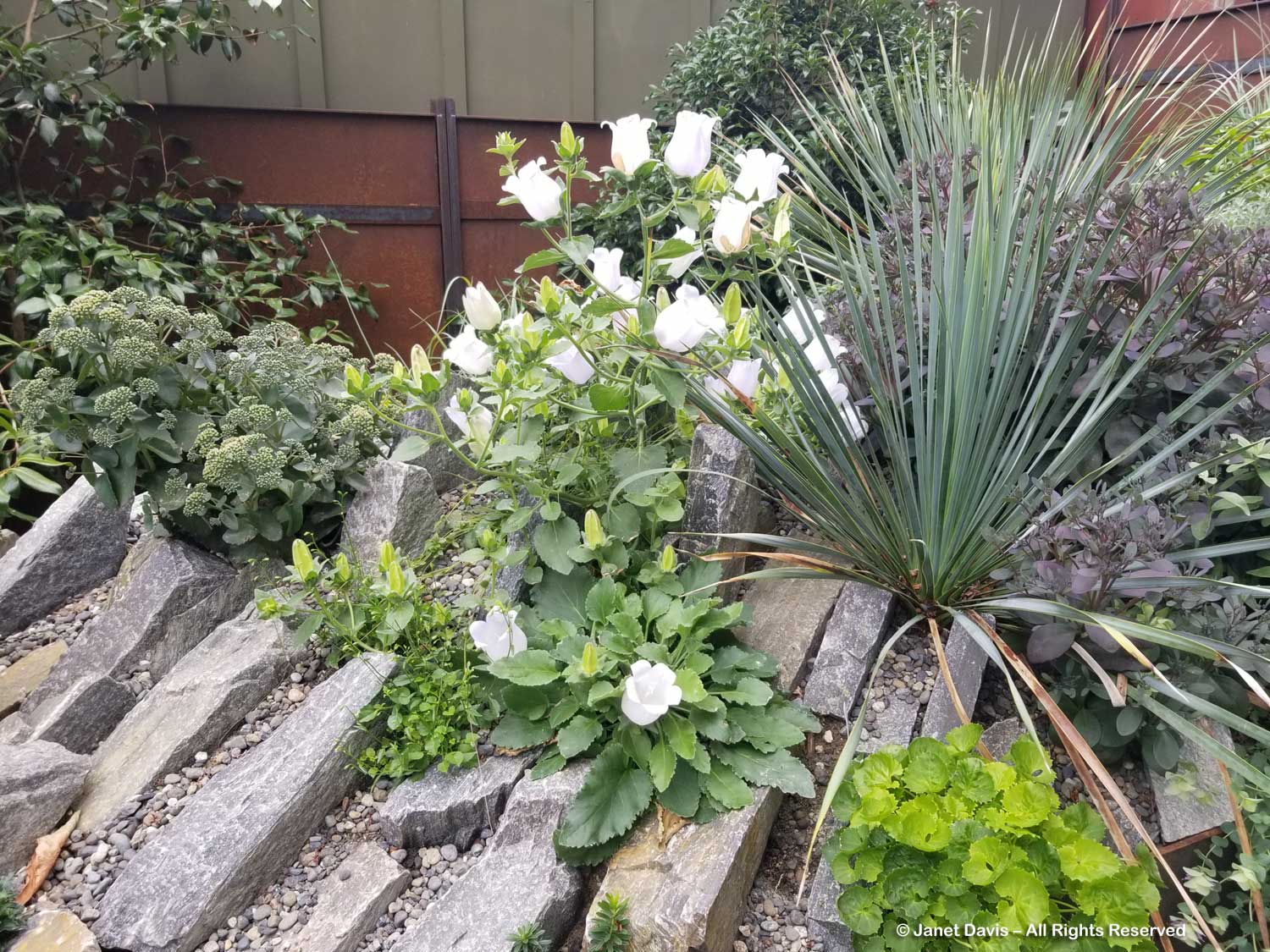
A very happy moon carrot (Seseli gummiferum) was in full bloom in another crevice container.
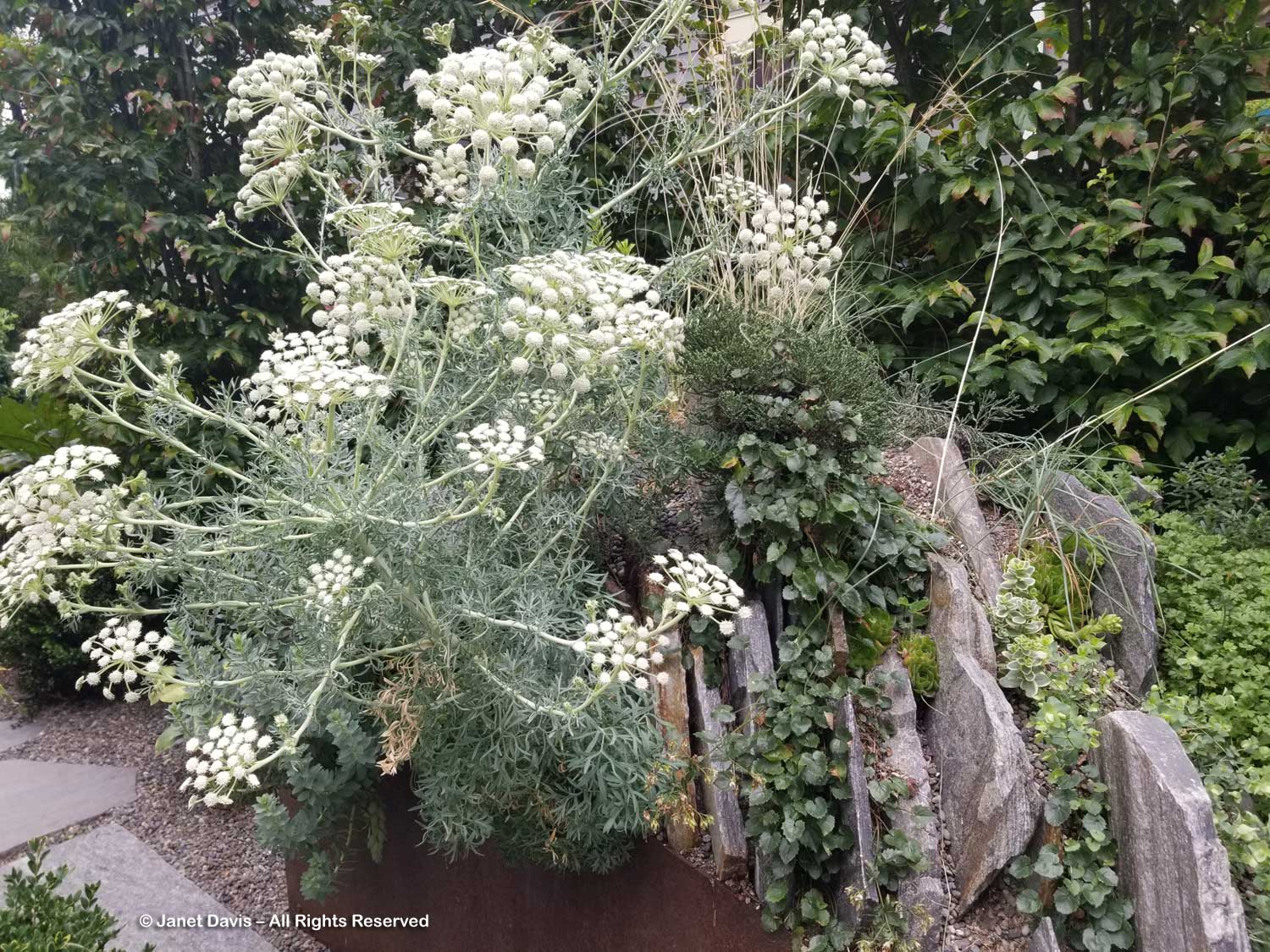
Erigeron, irises and phlox grew in a glazed blue container.

Comfy saucer chairs provide seating amidst the plantings.
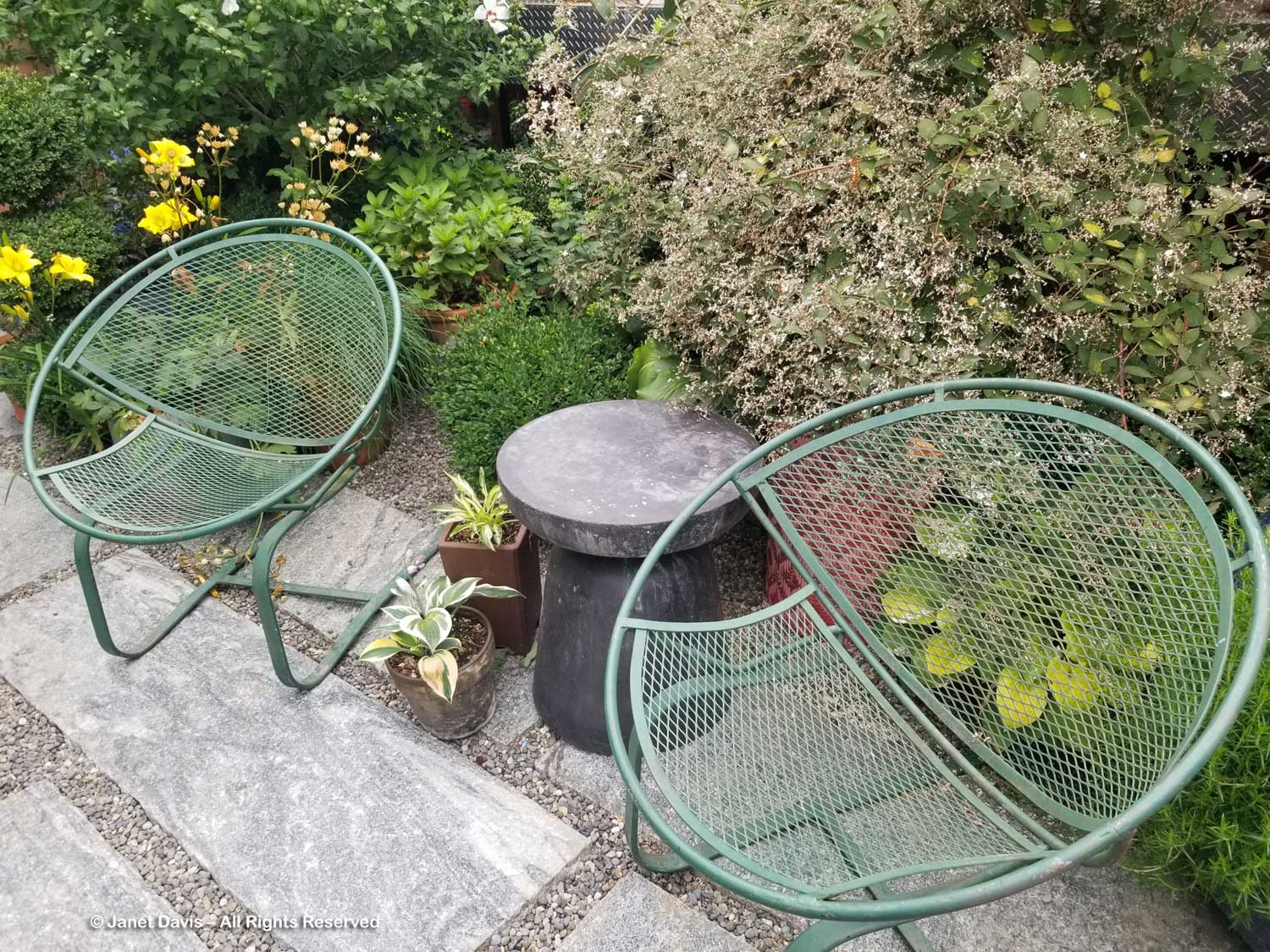
And what is the unconquered, unplanted frontier in almost every garden? That’s right: the driveway. So leave it to Richard Hartlage to boldly go where few have ventured – right down the middle of his concrete driveway. I love this idea.
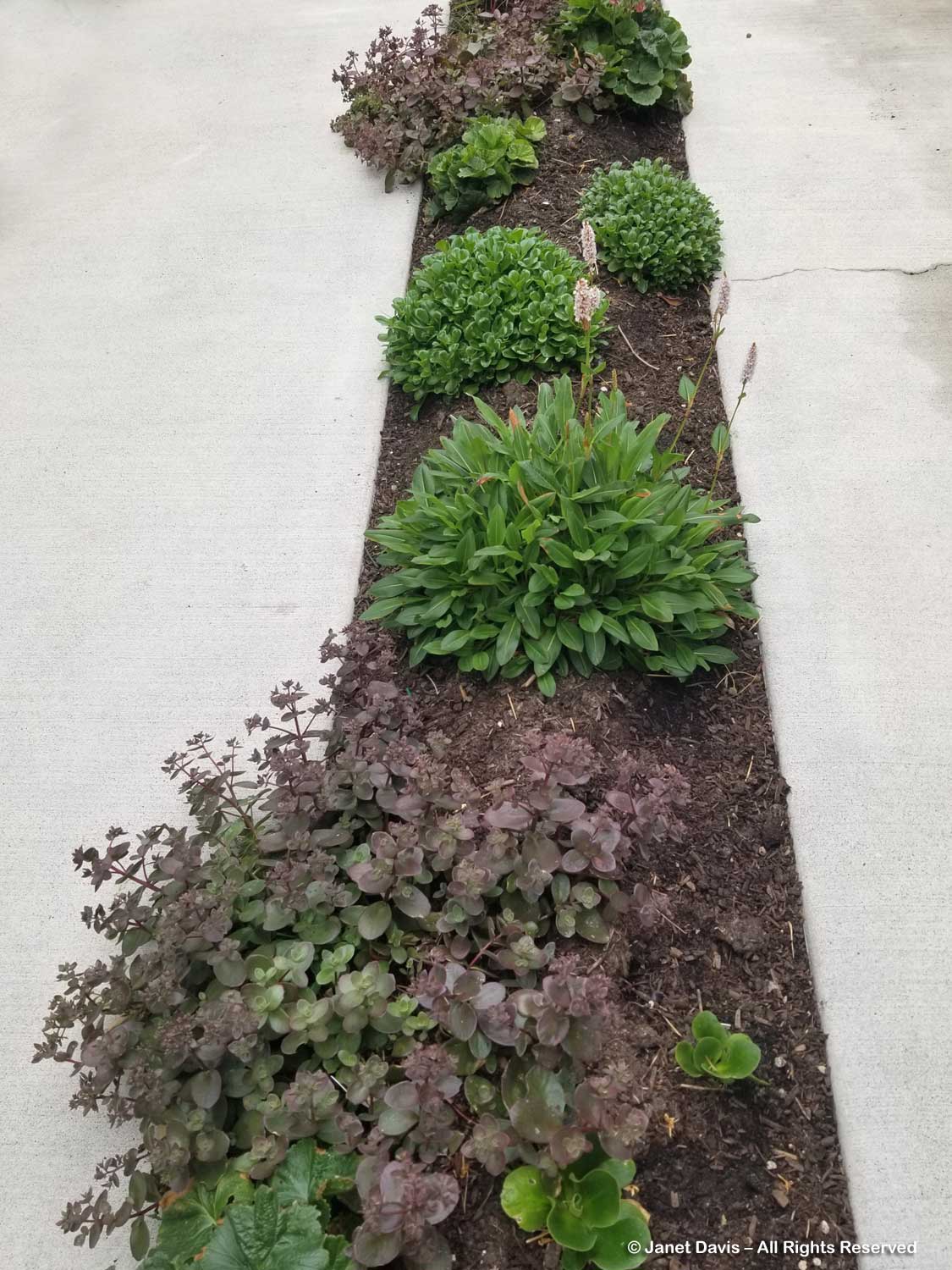
As usual, I could have spent hours in this garden capturing the small nuances and plant combinations. My friend Pam Penick did a great job on her blog, so give it a read. And Seattle photographer Miranda Estes has a beautiful gallery from 2019 of the garden as it was then. Thank you, Richard Hartlage, for sharing your lovely, eclectic, leafy home sanctuary with us.
**********
Read more of my blogs on beautiful summer gardens of the Puget Sound and Seattle:

